The Perfect Nara Day Trip (One Day Itinerary & Map)
This page may contain affiliate links which earn us a commission at no extra cost to you to support the site. Thank you!
Nara is a popular day trip from Kyoto or Osaka. This one day Nara itinerary shows you how to get there and how to see the main highlights on a day trip.
Nara is famous for its hundreds of sika deer roaming around the large park within the city, Japanese zen gardens and ancient buildings that date back to when Nara was Japan’s first capital city. This beautiful city shouldn’t be missed when visiting Japan!
As Nara used to be Japan’s capital before it changed to Kyoto in 794, there is a lot of history to dive into here. Not only that, the city is home to eight UNESCO World Heritage Sites, including Todai-ji Temple, which houses one of the largest bronze Buddha statues in the country.
Since I loved visiting Nara myself, I’ve put together this one day Nara itinerary with a self-guided walking route that you can use. It’s a lovely little city to add to your Japan itinerary, so let’s take a look!

8. Take the Train Back to Osaka/Kyoto
Nara day trip from osaka by train.
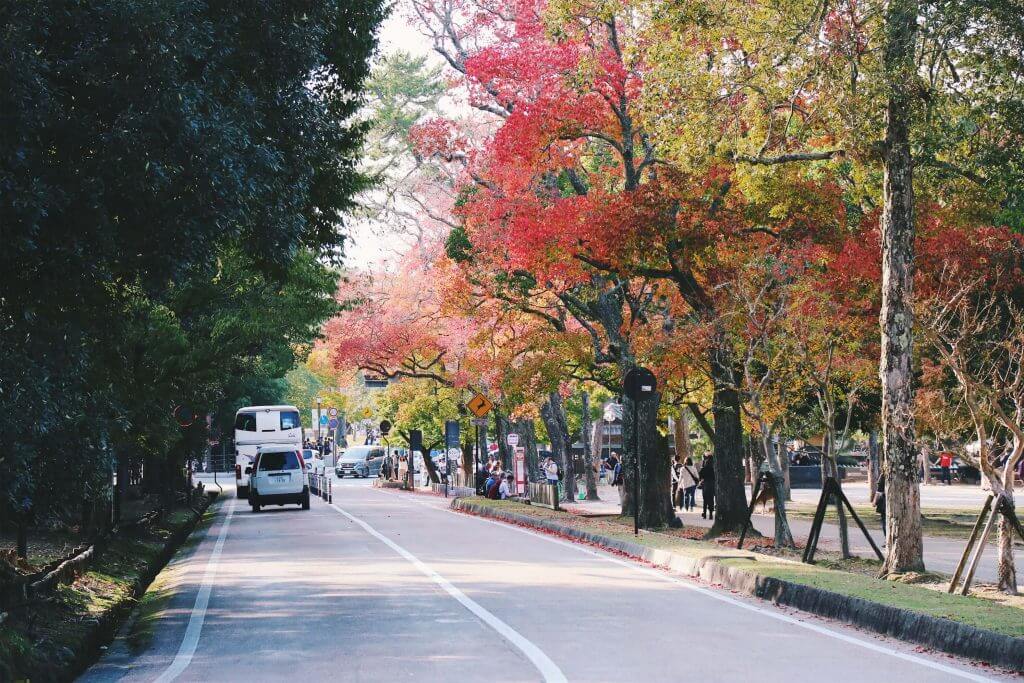
Nara Itinerary Overview & Map
If you don’t have enough time to read the full guide, don’t worry! Here is an interactive map with a self-guided walking route you can use as your Nara itinerary:
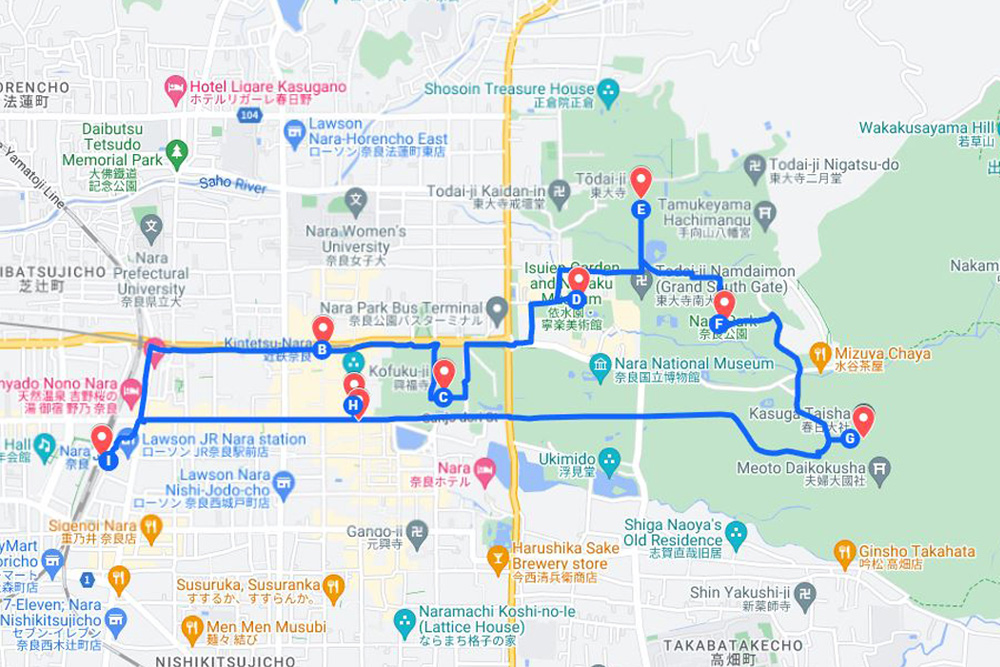
Nara Day Trip Itinerary
Here is my in-depth one day Nara itinerary for first-time visitors:
1. Arrive in Nara
Start the day by making your way to Nara. Whether you’re travelling from Kyoto, Osaka or some other city, I’d highly recommend arriving before 10 AM . Because it’s only a one-day trip, you want to make sure you have enough time to see everything.
Nara has two main train stations: JR Nara Station and Kintetsu-Nara Station . If you arrive at JR Nara Station, you can start your day by visiting the Tourist Information Centre. It’s located right outside the station and you can pick up a free booklet filled with information about the deer park, the shrines and temples. There is luggage storage available and you can also find a Starbucks in this building.
Nara’s other station, Kintetsu-Nara Station, is located a bit closer to the sights we’re going to explore today. If you do not have a JR Pass , it’s usually cheaper to get a train to this station. I’ll explain how to get to Nara from Kyoto or Osaka later in this article .
2. Visit Kofuku-ji Temple
Kofuku-ji Temple is located only a few minutes from Kintetsu-Nara station. Even though it’s a bit further from JR Nara Station, it’ll give you a chance to walk through some of Nara’s atmospheric streets. Kofuku-ji Temple is one of the eight UNESCO World Heritage sites in Nara.
Visiting the temple grounds of Kofuku-ji is free , but there is a small entrance fee for entering the buildings, including the Central Golden Hall, the Eastern Golden Hall and the National Treasure Museum.
The original Central Golden Hall at Kofuku-ji Temple was destroyed in a fire almost 300 years ago. It has been reconstructed to its original size and opened to the public in October 2018. Inside, you can find the Yakushi Buddha.
Take some time to explore the temple grounds, as there are many shrines and temples to admire. Moving towards the side, you can find the Southern Octagonal Halls . These buildings date back over a thousand years.
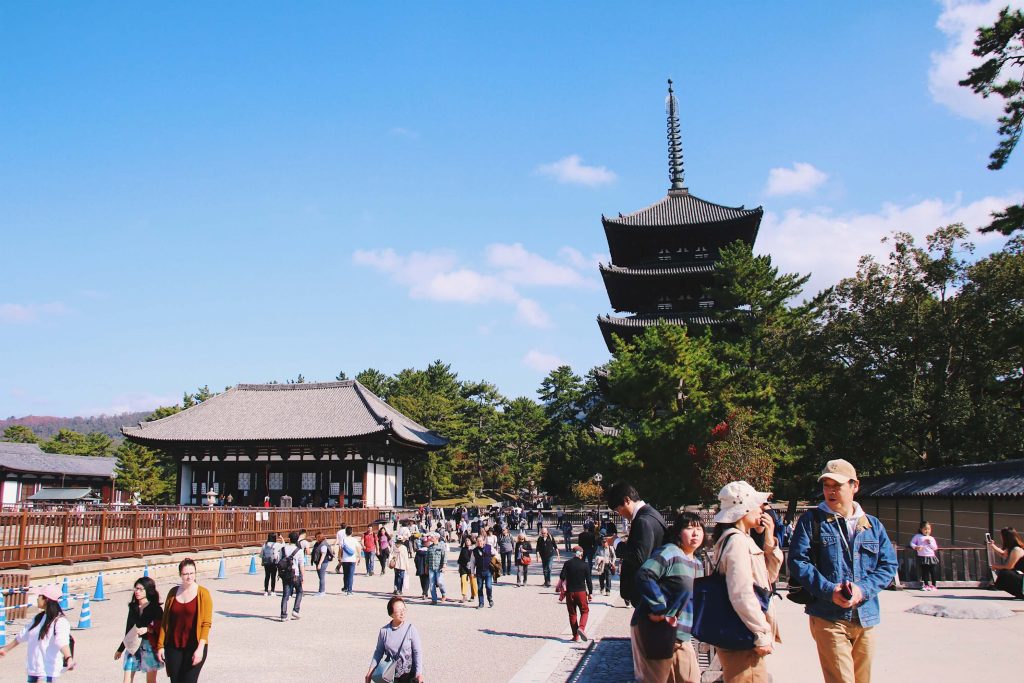
3. Wander Through Isuien Garden
Next on our Nara day trip itinerary is Isuien Garden, not far from the Kofuku-ji temple grounds. Translated into English, the garden’s name means “ garden founded on water “.
The front garden dates back to the 17th century, while the back garden was built in 1899. Inside the garden, you will find several tea houses. This garden is a perfect example of what I imagined Japanese Zen Gardens to look like.
4. Visit Todai-ji Temple
Todai-ji Temple ( Great Eastern Temple ) is one of Nara’s most famous and most visited sights. Also listed as a UNESCO World Heritage site, Todai-ji was the world’s largest wooden structure until 1998. Its Great Buddha Hall houses one of the largest Daibutsu-san, or Bronze Buddha Statue, in the world. It reaches 49 meters in height!

The temple was established in 752 but has burned down a few times since. Despite this, it’s almost impossible to grasp the size of Todai-ji. The fact that this building is entirely made out of wood is incredible. At first, we thought the entrance of Todai-ji was the temple (pictured below). We already struggled to comprehend it, only to find the actual temple a bit further down the street…
There is an entrance fee for the museum or you can buy a combined ticket for the museum and the Great Buddha Hall. It’s definitely worth getting the ticket, as the Daibutsu-san shouldn’t be missed when taking a day trip to Nara.

5. Explore Nara Deer Park and Mt. Wakakusa
By the time you get to Nara Deer Park, you’ll probably already have encountered some sika deer walking around. Over 1,400 sika deer roam around the park freely and it attracts a ton of tourists. In the park, you can find some stands selling packs of shika senbei , or deer crackers, to feed the deer. They cost around ¥200 and give you a chance to feed them.
Please don’t feed them anything else , you wouldn’t want them to get sick!
While they look adorable, please remember that these are wild animals. Yes, they’ve grown accustomed to the tourists and pose for pictures, but they can get aggressive . Especially when the deer crackers are involved! Always be careful and keep a close eye on your belongings.
Funnily enough, the deer in Nara Deer Park have learned to bow to visitors. Bowing in Japanese culture is a form of showing respect, and many deer will return the favour. Give it a go while you’re at the park – chances are, the deer will bow back to you.
Around Nara Park, you can find many shops and food stands. Whether you’re still looking for the perfect souvenir or just looking for a snack, these stands are really fun to nose around in. It’s a great way to support the local community.
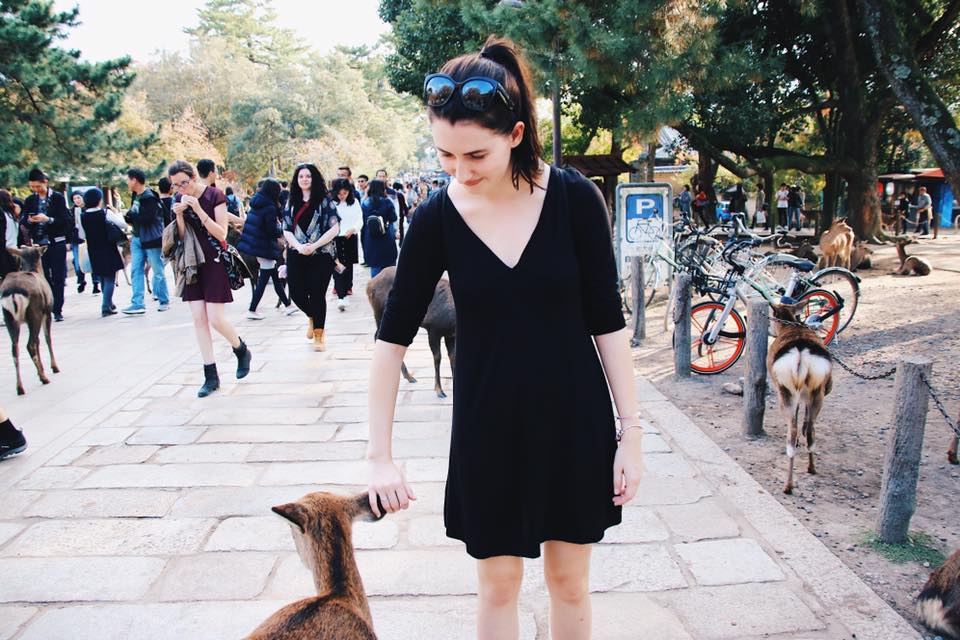
6. Visit Kasuga-Taisha
Nara has more than enough shrines and temples to visit. When you’re only in Nara for one day, you’ll have to pick and choose. Kasuga-Taisha not only fits perfectly with the walking route of this one-day itinerary but is also one of the city’s most beautiful shrines.
Kasuga-Taisha is one of Nara’s eight UNESCO World Heritage Sites and is famous for its 3,000 stone lanterns lining up the path towards the entrance. They are also known as “ toro “. It was built in 768 and has been rebuilt every 20 years until 1863, which was done because of the Shinto concept of purity.
7. Shop on Higashimuki Shopping Street
There are plenty of shopping opportunities in Nara, especially at the more touristy places like Nara Deer Park. But if you’re looking for better places to shop, you should check out Higashimuki Shopping Street and Mochiidone Shopping Arcade .
Both are located within walking distance of each other and filled with unique shops and food stands. If you’re not sure what to buy in Nara, there are lots of options here. Products you can expect to find include kimonos, ceramics, traditional Japanese sweets and handkerchiefs made from traditional Nara fabric.
Don’t forget to stop by Nakatanidou , which is a traditional mochi (sweet Japanese rice cakes) shop. Multiple times a day, they make fresh mochi with a special mochi pounding technique called mochitsuki . You can go to the store to watch them perform it!
Most tourist attractions close quite early in Nara. That’s why it’s so important to get here as early as possible. After grabbing some early dinner, it’s time to make your way back to either Kyoto or Osaka.
For more information on how to get to Nara from Kyoto or Osaka, read the next part of this guide:
How to Get to Nara From Osaka/Kyoto
Since Nara is located close to both Kyoto and Osaka, it makes for the perfect day trip destination. By using the train, you can get to Nara within an hour from either cities.

Nara Day Trip from Kyoto by Train
If you want to visit Nara while staying in Kyoto, you can use the JR Nara Line or the private Kintetsu Line.
If you are a Japan Rail Pass holder, you can use the JR Nara Line with your pass for this trip. From Kyoto, it takes between 40–70 minutes to get to Nara depending on which train you use. You can either use the JR Nara Line Local or the JR Nara Line Rapid Service . If you can get the Rapid Service, I’d recommend it, as it is 25 minutes quicker.
If you don’t have a Japan Rail Pass, you can choose to use the private Kintetsu Line to get to Nara from Kyoto. This train journey will cost you a bit less and will get you to Kintetsu-Nara station within 35 minutes. You can pick this line over the JR line because it’s much quicker, it’s cheaper (if you do not use a JR Pass) and Kintetsu-Nara is located more centrally compared to JR Nara Station.
Visiting Nara for a day trip from Osaka is also possible. Two train lines connect Osaka with Nara: The JR Yamatoji Line and the Kintetsu Nara Line.
If you are using a Japan Rail Pass to travel to Nara, you can use the JR Yamatoji Line. From Osaka Station, it takes about 50 minutes when using the JR Yamatoji Rapid Services .
Are you travelling from JR-Namba Station in Osaka? Then you can get the local train to Shinimamiya Station and then continue your journey on the JR Yamatoji Line to Nara with your JR Pass.
If you are not using a Japan Rail Pass, you can use the Kintetsu-Nara Line to get to Nara. From Osaka-Namba Station, you can get the Kintetsu Line to Kintetsu-Nara. This train will get you to Nara in 38 minutes.
Picking the Kintetsu-Nara Line over the JR Pass (when you’re not using a JR Pass) makes it cheaper and quicker. It will get you to a more central point in Nara. Kintetsu-Nara Station is located closer to the Deer Park compared to JR Nara Station.
Is One Day Enough in Nara?
Since Nara is so easy to get to from larger cities like Kyoto and Osaka, a day trip makes perfect sense. Nara itself isn’t very large, and the main sights in the city can easily be seen in around 6–7 hours .
However, Nara Prefecture has more to offer than just its main city. If you want to explore more of Nara Prefecture, it’s best to stay overnight and take some extra time to venture off the main tourist routes.
Is Nara Worth Visiting?
Nara is 100% worth visiting during your time in Japan. I’ve included them in my two week Japan itinerary for first time visitors because it’s very easy to get to from nearby cities, and it has so much history. Since the main sights are pretty close to each other, Nara makes for a perfect day trip where you can learn more about Japan’s history, wander through some beautiful gardens and see some incredible shrines.
Where to Stay When Visiting Nara
Since Nara is easy to reach from both Kyoto and Osaka, it’s best to take a day trip from either of those cities. This way, you’ll avoid having to carry your luggage to Nara for a very short stay. A day trip to Nara is cheap and very easy, as the itinerary above shows.
We have full guides on where to stay in Kyoto and Osaka . In these guides, we’ll share the best areas in each city, along with the best hotels for different types of travellers.
If you are planning on staying in Nara for longer than a day, I’d recommend getting a hotel near the train station. This way you’ll be able to get to the hotel with your suitcases without any hassle and are located close to any sights.
More Than One Day in Nara?
Even though Nara is perfect for a day trip, there is enough to do and see for more than one day. If you are planning to spend more time in Nara, I recommend checking out some of the following:
- Heijo Palace : Formerly known as Nara’s Imperial Palace, Heiji Palace now acts as a popular tourist attraction. The palace ground is over a square kilometre big and is one of Nara’s World Heritage Sites.
- Yoshikien Garden : A beautiful garden that includes three different styles of Japanese garden scaping. Admission is free for tourists.
- Nara National Museum: Located inside Nara Deer Park, Nara National Museum is filled with statues, scrolls and other ceremonial objects telling the story of Nara’s and Japan’s history. Perfect for a rainy day.
Finish Your Japan Itinerary
Nara makes for a great day trip, but what else should be on your Japan itinerary? We’ve got a ton of guides about the best places in Japan, including some pre-made itineraries that you can copy for free:
- Three week Japan itinerary
- Two week Japan itinerary
- One day in Osaka
- Two days in Kyoto
- How to plan a trip to Japan
- 50 best things to do in Japan
Nele (Nay-la) graduated from Manchester Metropolitan University with an English and Creative Writing Degree and has lived in the UK for nearly 10 years. She has had an interest in Japan and its culture for as long as she can remember. Since her first trip in 2018 surpassed all expectations, she has continued to return to Japan to explore more of all it has got to offer. You can read her full story here .
44 thoughts on “The Perfect Nara Day Trip (One Day Itinerary & Map)”
Thanks for all the great information. I so badly want to visit Japan. Hopefully next year!
Really hope you get to go! It was such a dream come true for me <3
Pretty bussy schedule, but I am sure it was worth it! I will keep your tips in mind, although it will take lots of time, till I get to Japan!
It was definitely worth it ^_^ Luckily, Nara isn’t too big so walking from one place to the other didn’t take too long 🙂 Hope you get to visit soon!
Ahhh looks like such an amazing day trip! Would love to visit Nara one day, the deer look sooo cuuute 😍 Love your blog btw ☺️
Thank you so much! 🙂 We really enjoyed visiting Nara, it was a nice little change from the busy cities haha!
I absolutely loved Nara, and also spent one full day there. 💕 it’s such an enchanting place.
Couldn’t agree more! So lovely 🙂
This is such a good post, I really enjoyed reading it! It’s interesting that it’s rude to eat on the trains in Japan, I eat on trains all the time in the U.K. without a second thought! And it’s so cute that the deers bowed back!
Yeah, I do the same! Especially during longer trips on the train, it’s quite common to eat on them in the UK – luckily I did a bit of research on Japanese etiquettes haha!
I’d never even heard of Nara before but now I can’t wait to visit when we go to Japan! The deer farm looks and sounds so cute too! X http://www.imjustagirl16.co.uk
Definitely try to go if you’re ever back in Japan – it’s such a lovely town!
This play by play of the day is amazing. Japan has been on my travel list for a while now. Places are definitely added!!!
So glad you enjoyed the post! Definitely try to add Nara if you have a spare day in Osaka or Kyoto – it’s so cute!
Nara looks so beautiful, although knowing me I’d stay way too long feeding those cute deer!
Hahaha that’s so cute though! We definitely spent way too much money on those deer crackers haha, couldn’t resist!
This is such a neat looking place to visit! I would love to visit that deer park! Everything looks so beautiful!
It really is such a lovely place, people look after it so well! Hope you get to visit it someday 🙂
I love looking at the temple and the architecture, there’s so much to learn about their history!! I’ve never been to Japan (yet) but I definitely want to go to the Nara deer Park. I didn’t know they could bow back, I think that’s so adorable!! 🤣 Thank you for sharing! xx
I couldn’t agree more, I absolutely loved learning about the history. It’s something that I really appreciate in Japan. There’s so much culture that dates back thousands of years, it’s almost impossible to grasp sometimes!
So much useful information here! I would love to go to the deer park if I ever get to go to Japan, they’re so cute! The architecture is so beautiful too. Amazing photos! I didn’t know that eating on a train is seen as disrespectful in Japan either, that’s definitely a handy tip x
If you ever get the chance to go, please do! Japan was probably my favourite destination every and I really want to go back next year ^^
Japan has always been one of my top places that I one day want to travel too but I’ve never actually heard of Nara which means I have another place to add to my to-do list and places to visit when I finally one day get to go! Thank you for this blog post, it looks like you had an amazing time and I love your photographs!
I’m so glad you learned about Nara in this post! If you ever go to Japan, definitely make sure to plan a little day-trip there. It’s so easy to get to from Kyoto or Osaka and definitely worth your time 🙂
The deer park looks amazing and all of the scenary looks so gorgeous! It’s great that you got to fit so much into one day as well
Kayleigh Zara 🌿 http://www.kayleighzaraa.com
Isn’t it just magical :D? We were really glad to find out that the city centre of Nara isn’ very big, so you can fit a lot into one day ^^
Ma’am, why are you living the dream life aka my dream life??? I am so seriously jealous!! But seriously, this was such a good run down of Nara. I hope I can go there one day and follow your itinerary. But those deer! OMG! I was squeeing just from the pictures! So adorable!!!
https://www.thatweirdgirllife.com
Aww thank you! I really hope you get to visit Japan soon! If you need any help with planning your trip, feel free to message me 🙂
I miss Japan so much. Nara was one of my highlights! Love your pictures too! 😘 Can’t wait to see what comes next!
http://Www.blondedaisychains.co.uk
Thank you lovely! Nara was one of my favourite places, it really felt like “ancient Japan” if that makes sense. I kinda expected Kyoto to be like that more!
Amazing post, thank you so much for sharing, I have wanted to go to Japan for so long! It’s a dream destination of mine, there’s so many places to see – will definitely be booking a trip to Japan at some point <3
Chloe xx http://www.chloechats.com
Thank you Chloe, so glad you enjoyed this itinerary! If you ever go to Japan, feel free to message me and I can help putting a plan together for you ^^
Wow this place looks absolutely stunning – definitely want to take my camera here one day…
It really is just beautiful! Especially during the autumn when the leaves change colours, it’s a dream destination for photographers! 😀
Wow, what a busy day! I have been to Japan but not to Nara I will have to put it on my list of places to visit next time I’m in Japan.
Japan is always a great option and I love going back. Nara is one of the most peaceful places in the country. and the people are nice too. The deer park with the cute deers was my favourite.
Such a good guide to the main sights in Nara! How long would you say this itinerary would take from the Kintetsu-Nara station? I’m thinking of making a half day trip to Nara from Osaka if I can get there early morning, but wanting to squeeze in as much as I can. I’m travelling myself so not planning to stop anywhere too long or for a sit down meal that day, so hoping I could see everything by mid-afternoon. Does that seem doable?
Hi Julie! That does sound doable – it may be best to skip a couple of the sights if you only have half a day (possibly skip Kasuga-Taisha) just to make sure you see as much as possible without having to rush too much 🙂
wow! This is really helpful! I’ll be in Osaka next week and until now, our iti is still finalize. This really help me ensure we can visit NARA efficiently. Thank you so much!
I did this exact itinerary today from JR Nara Station (East Gate) and it worked a treat! Had to speed run a few bits as time was limited (day trip from Osaka, returning there to catch Shinkansen to Tokyo), but we saw more than enough. And the deers really do bow!
So glad to hear this Steve! Hope you had a great time 🙂
We’re planning a day trip to Nara from Kyoto right now. We arrived in Nara around 11:30am. How many hours did this take you to hit all these stops with enough time to explore + take pictures?
You’d probably need around 5-6 hours for all of these, so that’s definitely doable 🙂
Had just a day to see Nara. Found this article and it was perfect! Definitely wear your walking shoes, it was a great and well thought out route. I got in at 10am as recommended and it was cold and rainy…not too crowded and i finished everything by 2pm…including a lunch stop at Mizuya Chaya which is on the way to the Kasuga Taisha shrine. Very small but delicious and friendly, don’t be intimidated! Thanks for the spot-on comprehensive day trip to Nara!
Leave a Comment Cancel reply
This site uses Akismet to reduce spam. Learn how your comment data is processed .
Must-Read Articles

50+ Best Things To Do In Japan

Is The Japan Rail Pass Worth it?

The Perfect Three Week Japan Itinerary
Japan Travel Tips Group

The Japan Travel Newsletter
Sign up to get inspired! Receive insider tips, special discounts and more to plan your perfect Japan trip.
You have successfully joined our subscriber list.
japan travel Blog
Tokyo Kyoto Osaka Hiroshima Hakone Kobe Nikko Nara Kyushu All Japan Content
Plan Your Trip
Best Things To Do Japan Rail Pass 2 Week Itinerary 3 Week Itinerary Accommodation Japanese Phrases
About The Navigatio Work With Us

Nara Itinerary: An Easy Day Trip from Kyoto
by Julie Itinerary , Japan , Travel 2 comments
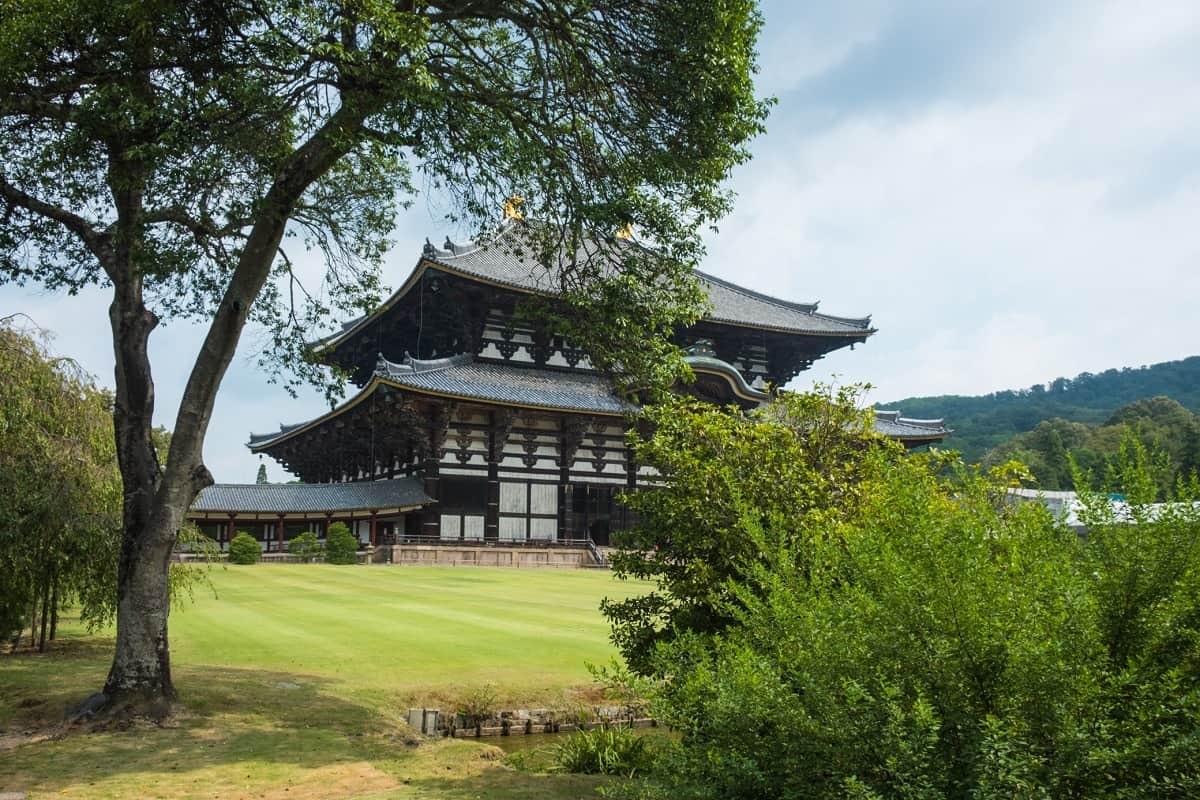
The historic city of Nara makes for an easy, relaxing, and interesting addition to your Kyoto itinerary . It’s got a lot to see and do for history, culture, and food lovers: giant Buddhas, famous temples and shrines, friendly deer, and great food. Visiting the city is also a great way to escape from the hustle and bustle of the bigger and busier cities of Japan.
In this post, I’m going to share with you how to visit Nara as a day trip from Kyoto. You’ll find information on what to do in the city, where to eat, how to get there, and how to get around.
However, if you can fit more days for Nara into your Japan itinerary , then I highly recommend doing so. The city has so many UNESCO World Heritage Sites that to see them all requires three days.
Disclosure: This post may contain affiliate links. As an Amazon Associate and a Bookshop.org Associate, I earn from qualifying purchases. Please see this website's Disclosure for more info.
In This Nara Post, You’ll Find…
Click on any item below to jump to that location in this article.
Why visit Nara
How long to spend in nara.
- How to get to Nara
What to do when you get to Nara
- How to get around Nara
- Kasuga Taisha Shrine
- Taidoji Temple
- Kofukuji Temple

Click here or on the map to view it in Google Maps
There are five main reasons to do some Nara sightseeing.
1. UNESCO Heritage Sites
The first reason to make a trip to Nara is that it has 8 UNESCO World Heritage Sites:
- Todaiji Temple – Day 1
- Kofukuji Temple – Day 1
- Kasuga-Taisha Shrine – Day 1
- Gangoji Temple – Day 3
- Toshodaiji Temple – Day 2
- Yakushiji Temple – Day 2
- Heijo Palace – Day 3
- Kasugayama Primeval Forest – Day 3
The second reason to make a day trip to Nara is for its history. It was the first permanent capital of Japan from 710 to 784.
Before Nara, Japan used to move its capital every time an emperor died ( Lonely Planet, 2022 ). However, during the Nara years when Buddhism became popular, this belief died out.
Why was Nara the capital for only 74 years?
There is no clear answer. It could have been because the court wanted to limit the power of the Buddhist monks who had become too powerful during the Nara period. Two other possible reasons may have been economic or logistics. Nara has no rivers, but Kyoto does.
3. Buddhism
Another reason Nara is an important destination is that it played a central role in the initial rise of Buddhism in Japan .
Buddhism began to spread throughout Japan when Nara was its capital. At that time, the Emperor and many powerful families donated a lot of money to Buddhist temples and monasteries. Many of Japan’s most important Buddhist temples were built including the world’s largest wooden structure in the world, Todaiji Temple , and the most important Buddhist temple in Japan, Horyu-ji Temple,
The fourth reason to add Nara to your Japan itinerary is that Nara has some of the best Buddhist works of art in Japan .
The Nara period occurred during the height of Chinese civilization. Japan wanted to emulate China . Emperors sent emissaries to China to learn government, art, and Buddhism from them, and the Chinese sent teachers and monks to Japan.
Japan imported not only ideas but also medicine, musical instruments, furniture, paper, and many more. The Nara National Museum houses these objects .
The National Treasure Museum at Kofukuji Temple and Sangatsu Hall have some terrific Buddhist works of art to view.
5. Friendly Deer
For the non-historian, Nara gives the visitor a great experience in feeding wild but incredibly friendly deer. You can buy deer food from vendors in the parks and sidewalks for ¥200 .
BONUS: I've created a FREE detailed PDF version of this 3-week Japan itinerary. The guide also includes step-by-step instructions for buying and using your Japan Rail Pass.
Click here to get lots of great tips for traveling around Asia as well as this FREE 3-week Japan itinerary guide.
You can easily see the best attractions in Nara in one day .
But if you want to dig more deeply into Japan’s history and religion , you’ll need 3 days .
Here is a sample itinerary for 1, 2, and 3 days in Nara. Day 1 is what you would do if you’re only doing a day trip from Kyoto or Osaka.
Day 1 / Day Trip
- Kasuga Taisha and Wakamiya Shrines
- Todaiji Temple including Daibutsuden Hall to see the Great Buddha statue
*If you still have time, walk around the Nakamachi area to see the old shophouses and storehouses.
If you’re staying overnight
- Horyu-ji Temple
- Yakushiji Temple
- Toshodaiji Temple
- Nara National Museum
- Heijo Palace Site
- Nakamachi Area
- Gango-ji Temple
How to get to Nara from Kyoto
You can easily visit Nara as a day trip from Kyoto as it only takes between 34 and 75 minutes to get to Nara by train.
Unfortunately, figuring out which train to take can be confusing. First, two train companies do the route from Kyoto to Nara.
- Kintetsu Corporation
The good news is that the two lines both leave from Kyoto Station BUT they leave from different parts of the station. Just follow the signs when you get to the station.
- Japan Rail leaves from the JR Kyoto Station – entrance is on the north side of Kyoto Station where the buses are located
- Kintetsu Line leaves from Kintetsu Kyoto Station – entrance is on the south side of Kyoto Station but you can still get to it from the north side entrance. You just have to walk through the station.
Nara has 2 separate stations found in different parts of the city
- JR Trains leave from Nara Station ( Google Maps )
- Kintetsu Trains leave from Kintetsu Nara Station ( Google Maps )
Whichever train you take, just make sure to leave Kyoto before 8:00 am so that you have enough time to see all of Nara’s most important attractions.
- To find out train schedules, visit the Navitime website .
- For more information on taking trains in Kyoto, visit the Kyoto Station website.
- To find out more information on routes to Nara, go to the Visit Nara website here.
Taking the JR Train to Nara
If you have a Japan Rail Pass , you can use it to get to Nara. The express train with fewer stops takes 45 minutes, while the slower train that stops many, many, many times takes 75 minutes. I took the slow train to Nara and the express back to Kyoto.
There is at least one train leaving every hour . Check the train schedule on the Navitime website .
According to Kyoto Station website , the train to Nara is supposed to leave from platforms 8, 9, and 10 .
The one downside is that the JR train arrives at Nara Station, which is farther from the main attractions in Nara than the Kintetsu Train Station. It’s not a big deal, though, as you can easily take the tourist bus for a small fee, which takes around 10 minutes (see the section on How to get around Nara for details).
- You can read about how to purchase, activate, and use a Japan Rail Pass here.
Taking the Kintetsu Line to Nara
If you don’t have a JR pass and/or you’re really in a hurry, you can take the Kintetsu Line . This is supposed to take around 30 minutes , but I’ve also seen times of 60 minutes.
It looks like sometimes you even need to change trains along the way. If you take this train, make sure you’re taking a direct line .
From Kyoto, the train leaves from Kintetsu Kyoto Station in Kyoto Station and arrives in Nara at Kintetsu Nara Station, which is about a 5-minute walk to this itinerary’s main attractions.
Check the Navitime website for train times.
For information on taking this train from Kyoto, you can visit this website.
Hiring a Car and Driver
You can hire a private car and driver to take you to and around Nara as well as Kyoto and Kobe. Expect to pay between US$320 – $1,000 for the car and driver for one day for between 1 and 10 people. It’s a good deal if you’re with a large group.
- Kyoto, Nara, and Kobe with private car and driver – RATING: 4.5/5 (121+ Reviews) – A Japanese driver with good reviews can take you and 6 – 9 other people around Kyoto, Nara, and Kobe. READ REVIEWS & BOOK CAR & DRIVER
- Kyoto and Nara with English-speaking driver and guide – RATING: 5/5 (3+ Reviews) – An English-speaking driver and guide can take you and your friends on a customized trip around Kyoto and Nara. READ REVIEWS & BOOK CAR & DRIVER
- Kyoto and Nara with private car and driver – RATING: 4.6/5 (49+ Reviews) – A Japanese-speaking driver can take you and 6 – 9 friends around Kyoto and Nara for a hassle-free experience. READ REVIEWS & BOOK CAR & DRIVER
Join a Tour of Nara and Kyoto
Want to make your travels around Nara and Kyoto even easier? Take a guided tour of both cities in one day. Here are some highly-rated tours for you:
- Kyoto and Nara Day Tour – RATING: 4.4/5 (1K+ Reviews) – If you’re really short on time, you can combine a trip to the best attractions in Nara with those in Kyoto. The tour goes to the Fushimi Inari Shrine, Bamboo Forest, and Golden Pavillion in Kyoto and then to Nara Park to see Todai-ji and Daibutsu in Nara. This tour is by coach. All in one day! READ REVIEWS & BOOK TOUR HERE
- Kyoto and Nara Day Tour – RATING: 4.5/5 (1K+ Reviews) – Another highly-rated tour for those short on time who want to combine the best of Kyoto and Nara in one day. The tour takes you to the Bamboo Forest and the Golden Pavilion in Kyoto and Nara Park to see Todai-Ji Temple and Daibutsu in Nara. Transport is by train. – READ REVIEWS & BOOK TOUR HERE
- Kyoto and Nara Day Tour – RATING: 4. 8/5 (24+ Reviews ) – This Kyoto-Nara combo tour is pricier than the others but it’s by coach! In Kyoto, you’ll visit Nijo Castle, the Golden Pavilion, and Kyoto Imperial Palace. In Nara, you’ll go to Nara Park to see Todai-ji and Daibutsu as well as the Kasuga Taisha Shrine . READ REVIEWS & BOOK TOUR HERE
If you arrive on a JR Train, begin your day in Nara by visiting the Nara City Tourist Information Centre ( Google Maps ) . When you exit the station, the Centre is on your left. Their website has a lot of useful information.

The Tourist Information Centre opens at 9:00 am and closes at 9 pm , but I was able to go inside before that to pick up some brochures and maps. No one was at the information desk.
Inside you’ll find lots of maps and tourist information. There’s an information desk, a popular Starbucks (all the seats and tables were taken when I was there in the afternoon), free wifi, a prayer room, and a luggage storage facility.
The Tourist Information Centre offers guided tours.
The Kintetsu Train Station also has a Nara City Tourist Information Centre ( Google Maps ).
While at either information center, make sure to pick up three guides:
- Nara Sightseeing Map – Nara and surrounding areas
- Nara City Sightseeing Guide – just for inside Nara City
- Nara City Main Bus Route Map
Better yet, you can download loads of useful travel info from the Official Nara Travel site and do some super crazy planning beforehand.
⇒ You can also find out lots of information about Nara from the Nara City Tourist Association .
How to Get Around Nara
The best way to get around on this Nara itinerary is by bus or bike as it takes 45 minutes to walk from the Nara Train Station to Todai-ji Temple. If you’re trying to do see Nara in a day, 45 minutes will eat too much of your day.
Getting Around by Bus
There are Bus Information Centers at 2 places:
- JR Station – near the JR ticket gate; (8:30 am – 4:00 pm)
- Kintetsu Station – Nara Line House, 1F; (8:30 am – 4:00 pm)
The City Bus Terminal is outside of the Tourist Information Center of the JR Station. You can take the Nara Park Loop bus line. It passes by the major attractions.
According to the Nara bus schedule and route , these are the bus # you need to take to get to the major attractions around the city .
- Todaiji Temple (Great Buddha temple; in Nara Park) – #2, 70, 72, and 97
- Kasuga Taisha Shrine (Nara Park) – #2, 70, 72, and 97
- Kofukuji – #2, 70, 72, and 97
- Toshodaiji Temple – #63, 70, 72, and 97
- Yakushiji Temple – #63, 70, 72, and 97
- Horyuji Temple – #97 (runs every hour)
See the Nara City Bus Route map for more information. You can pick it up at the Nara Tourist Information Center.
Bus fare is ¥100. You can use your Pasmo or Suica cards to pay the fare. You can also get day passes (1 day: ¥500, 2 days: ¥1,500) for unlimited travel and discounts at certain places.
Google Maps will also tell you which bus to take in Nara and at what time it departs and arrives at your destination.
Getting Around by Bike
If you plan on renting a bike in Nara, read these rules and customs for riding a bike in Japan, so you don’t break the law or a cultural taboo.
- Rent a bicycle using the Nara Bike Sharing service – Visit their website to get a map of the bike-sharing stops and instructions on how to use the service. The first 30 minutes is ¥165 and a day pass is ¥1,529.
- Rent an electric bike from Yamato Kano Rental Cycle for ¥600 per day.
Check Out These Hidden Gems:
- Takayama Itinerary: How to Spend 2 Days in Japan's "Little Kyoto"
- Travel Guide to Shirakawago: Enter a Japanese Fairy Tale
- Day Trip to Nara: A Suggested Itinerary
Nara Itinerary
On this day trip Nara itinerary (also day 1 of a 3-day itinerary), you’ll be spending it at Nara Park (Nara-Koen). Kasuga Taisha Shrine, Todaiji, and Kofukuji are all technically located inside Nara Park.
Stop #1: Kasuga Taisha Shrine
COST: ¥500 for the main shrine; ¥500 for National Treasure Hall; FREE for worship area | OPEN 9:00 – 4:00 pm (main shrine); 10:00 – 5:00 pm (national treasure hall); 6:30 am – 5:30 pm for Mar-Oct; 7:00 am – 5:00 pm for Nov – Apr (worship area) | LOCATION: Google Maps
We’re going to start today off at the Kasuga Taisha Shrine located deep within Nara Park. The shrine was built in 768 by the Fujiwara clan, one of the most powerful families in Japan until the eleventh century.
The BEST part of visiting the shrine is getting to it. Once you enter Nara Park, you’ll be walking along a pathway dotted with friendly deer, towering trees, and hundreds of picturesque stone lanterns covered in bright green moss.
How to get to the Nara Park entrance:
There are several ways to get to the Kasuga Taisha Shrine.
- Walking – from the Nara Station, it’ll take 45 minutes total (20 minutes to the park entrance and another 25-30 minutes through the park to the shrine); it’s probably the best way to get to the shrine from Kintetsu Station, though.
- Bus #2 or #97 (220 yen) – get off at Kenchoazuma Bus Stop and then walk four minutes to the park entrance and then another 25 or 30-minute walk to the actual Kasuga Taisha Shrine.
- Red Nara Park Route Bus (100 yen) – A cheaper but longer route is to take the red park bus and get off at Kencho-mae/Nara Park Bus Terminal and walk for 6 minutes to the entrance to the park and then 25-30-minute walk through the park.
- Rent a bicycle using the Nara Bike Sharing service or Yamato Kanto Rental Bikes.
At 9:00 a.m., the monks and visitors meet at the Naoraiden Hall for morning prayers and chanting for world peace. Another traveler told me that the monks have been doing this since the tsunami hit Japan in 2012. After the prayers and chanting, the monks visit the Wakamiya Jinja Shrine. The prayers last 30 minutes.
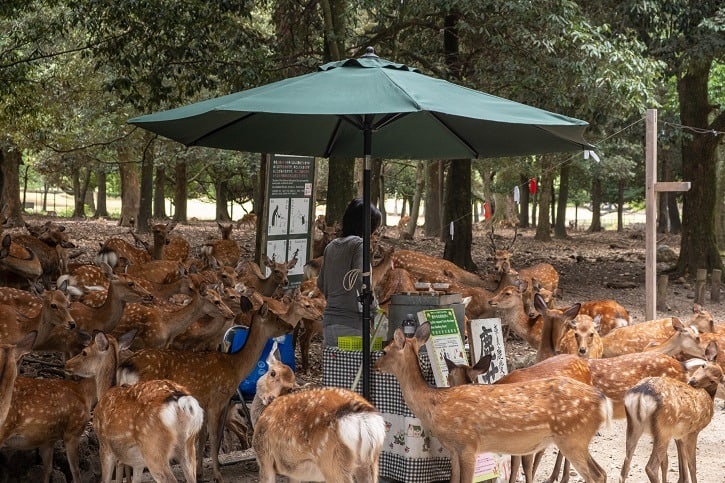
You’ll be able to buy deer food to feed the deer . When I was there, it cost ¥150 – ¥200 .

You’ll eventually come to your first vermillion-colored torii gate . Pass through the gate and continue along the path. Now is when the path turns magical.

You’ll come to a Chozuyua where you’ll need to purify yourself before continuing on to the shrine.
- Pour water over your left hand
- Pour water over your right hand
- Rinse your mouth out with the water (don’t drink the water)
- Rinse off the tool
You can watch a video here on how to do it from my Meiji Shrine article ,
You’ll notice that the statue is that of a deer with a key in its mouth . When the shrine was established, the shrine’s deity rode in on a white deer. Ever since then, deer have been venerated in Nara as messengers of the Shinto gods.

The path is littered with over 2,000 of these beautiful bright green moss-covered stone lanterns.
During the Satsubun Festival on February 2 – 4 and the Obon Festival in mid-August , all of the stone lanterns are lit.

Be prepared for steps. It is a long walk of about 20 or so minutes.

Eventually, you’ll come to the main shrine complex. You don’t have to pay to enter the outside buildings. Enter through the gate and if you’re there at 9:00 am, you should be able to hear the monks chanting . You should be allowed to enter and listen to the prayers. Just don’t take photos and don’t make noise.
You can then follow the monks up to the Wakamiya Shrine to complete the morning prayers.

The shrine is also known for these beautiful bronze lanterns.

You can walk around the complex.

By the time you exit the shrine, the tourists will be entering and the deer will be out and about looking for handouts of food. You can pet the deer and feed them.
Stop #2: Todaiji Temple Complex
COST (April 2024): ¥800 for adults and ¥400 for children; ¥1,200 (Daibutsuden & Todaiji Museum) | TIME: 7:30 am to 5:30 pm (April to October); 8:00 am to 5:00 pm (November to March) | WEBSITE: Todaiji | LOCATION: Google Maps
After visiting Kasuga Taisha, walk to one of the most historically significant temples in Japan, the Todaiji Temple (Great Eastern Temple). It is one of the eight UNESCO World Heritage Sites in Nara.
There will be signs guiding your way to the temple. Just try to not step on the deer poop along the way!
The temple was originally founded in 738 but not opened until 752. The Buddhist monks of Todaiji amassed a great deal of power while Nara was Japan’s capital. Some say they were more powerful than the Emperor.
Todaiji consists of two important structures:
- Nandaimon – South Gate
- Daibutsu – Great Buddha Hall
There are several other Buddhist halls and buildings on the grounds of Todaiji. You need to pay fo each separately.
- Isui-en Garden and Neiraku Art Museum – there’s a teahouse
- Todaiji Museum – collection of religious and cultural art
- Nigatsu-do Hall – you can see the city from its balcony
- Hokkedo Hall (Sangatsudo) – oldest surviving building
- Shosoin Storehouse – not open to the public; stores the royal family’s treasures
2.1 Isui-en Garden and Neiraku Art Museum
COST: ¥1,200 for garden and museum | TIME: 9:40-4:30 (closed on Tu) | LOCATION: Google Maps
If you have time and need a rest before hitting another temple, visit the Isui-en Garden where you can drink tea while sitting on tatami mats overlooking a garden. Then visit the Neiraku Museum to look at some Chinese and Korean art.
2.2 Todaiji Nandaimon (South Gate)

Eventually, you, a hundred other tourists, and some friendly deer will make it to the first gate, Todaiji Nandaimon (south gate) .
The south gate was rebuilt in the 1200s, and I did not read of it being rebuilt after that, so what you’re seeing is around 800 years old.

After you pass through the Southern Gate, you’ll come to your first hall. This is where you purchase tickets to see the rest of the grounds and Daibutsu.
You can see on the top of the building what looks like bull’s horns but are actually fishtails . These tails represent water and are a way to ward off fire. Wooden temples are very susceptible to fire.
Todaiji burnt down in 1180 and 1567 over the year. The present structure is from the Edo period during the 1500s.
Take a left when you come to this building to buy your ticket. You can also buy a temple and museum combination ticket for ¥1,200 .
Once you pay your ticket price, you’ll pass some souvenir stalls. You will also pass a table where you can get a free tour guide who will give you a short tour of the outside of the big hall. I got a nice Japanese retired Japanese businessman to be my guide.
2.3 Daibutsuden Hall (Great Buddha Hall)

After that, you’ll enter the inner part of Todai-ji, where you’ll come to the Daibutsu Hall (Big Buddha Hall). This building is the largest wooden structure in the world . It used to be even bigger!
Before entering the hall, make sure to purify yourself in the Chozuya , the water purification pavilion on the right hand side.

Once a year on New Year’s Day , the window where the Buddha’s eyes are located is opened. The eyes appear so that worshippers standing outside the hall can see them and pray to the Buddha.

Not only is the building impressive, but the large bronze Buddha statue is as well. In 737 there was a smallpox epidemic . To regain the favor of the gods, Emperor Shomu had this Buddha statue erected .
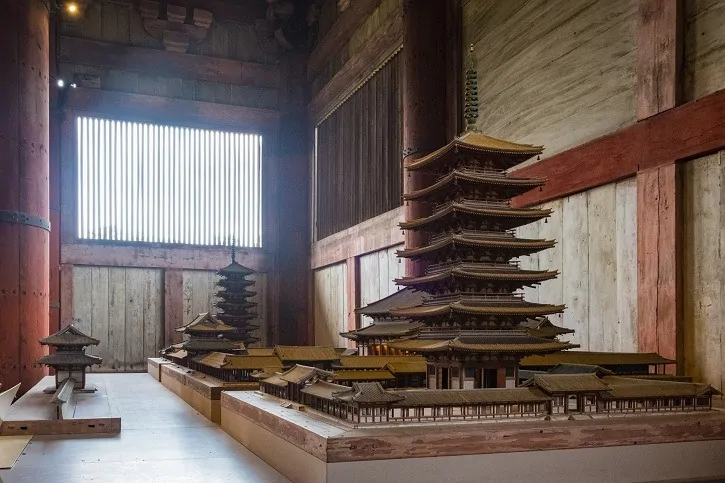
You can walk around to the back of the Buddha statue where you’ll find a model of the temple complex. The temple burnt down twice. This current temple is 1/3 the size of the original temple.

As you make your way behind the Buddha statue, you’ll come to this hole in a pillar. Supposedly, if you’re able to crawl through , you will achieve enlightenment .

The last favorite thing about Daibutsu-den is the statue of Pindola, on the right-hand side of the hall. Pindola was one of the 16 disciples of the Buddha. He was supposedly banished from the temple for becoming too powerful.
If you have a part of the body that aches or hurts, rub the corresponding part of the body on the statue, and it will feel better .
Does it work?
Try it and find out!

One last thing to pay attention to is the Octagonal Lantern in front of the hall. It was made when the Todai-ji was first built in 737.
2.4 Todaiji Museum
COST: Daibutsu and museum combination ticket: ¥1,200; TIME: 9:30 am – 5:30 pm (Apr – Oct); 9:30 am – 5:00 pm (Nov – Mar)
If you have time, visit the Todaiji Museum. It was closed when I was there.
2.5 Nigatsu-do Hall and Hokkedo Hall
Then visit the Nigatsu-do Hall, which is located behind Daibutsu, and according to Lonely Planet, will provide you with nice views of Nara .
Then make your way to Hokkedo temple (also known as Sangatsudo), a place that contains some of the best Buddhist statues in Japan.
I wish I had taken the time to see these temples, but alas I didn’t. Hopefully, you will.
Stop #3: Lunch
I recommend walking to the arcade complex near Kintetsu Train Station called Higashimuki Shopping Street ( Google Maps ) for lunch. I searched in vain for a restaurant near Todaiji Temple, but there weren’t any that looked appealing.

It’s about a 30-minute walk to the arcade past a lot of deer and tourists.

The arcade has tons of restaurants. I went to one called Fujin , on the left side as you enter the arcade. It had really wonderful and unique food.
However, I no longer see the restaurant on Google Maps or on Trip Advisor, so I think it’s become another victim of the pandemic. Still, check out the Arcade as there are lots of restaurants to choose from.

I had a dish called chazuke . There was grilled eel, tempura, rice, pickled vegetables, teapot with soup in it, and a seaweed salad. You put the eel on the rice and then pour the soup in a teapot over the eel and rice. The set meal cost ¥1500 . There was an English menu and the staff was kind and welcoming. The manager spoke English quite well.
You might be interested in these Japan travel posts:
- Kyoto Itinerary 4 Days: A City of a Million Temples
- The Best Ever Guide to the Tateyama Kurobe Alpine Route
- Kamikochi Hiking: A Perfect Day Trip from Takayama
Stop #4: Kofukuji Temple
COST: Pay for each building separately | OPEN: Each building is different | WEBSITE: Kofukuji | LOCATION: Google Maps
The next UNESCO World Heritage site to visit on your Nara itinerary is Kofokuji Temple, a short walk from the arcade.
The history is fascinating as the temple’s destiny was tied up with the rise and fall of the Fujiwara clan , the most powerful family in Japan for over 500 years.
The Fujiwara family was the patron of Kofuku-Ji. They had the temple moved from its original location where it was built in 672 to Nara in 710. Over the years, the Fujiwara family donated a lot of money to the temple, helping make it rich and powerful.
Then in 1597 when Toyotomi Hideyoshi became Shogun, he took away the temple’s power and wealth .
Eventually, in 1717 a fire swept through the complex burning down many of the buildings. With its finances curtailed for so many years, the temple was unable to be rebuilt to its former glory.
The complex has several buildings. There are three buildings that require you to pay :
- Central Golden Hall
- Eastern Golden Hall
- National Treasure Museum
4.1 Central Golden Hall (Chukondo Hall)
COST: ¥500 (Adults); ¥300 (High School); ¥100 (Elementary School) | OPEN: 9:00 am – 5:00 pm

The Central Golden Hall is the main hall . When I was there, it was undergoing reconstruction, so it was closed.
4.2 Eastern Golden Hall (Tokondo Hall)
COST: ¥300 (adults); ¥200 (High school); ¥100 (Elementary School) | OPEN: 9:00 am – 5:00 pm

This hall costs ¥300 to enter but if you also go to the National Treasure Museum (and you should), you can pay ¥900 to cover the Eastern Golden Hall and the Museum.
It’s an interesting hall with some beautiful old statues from the seventh to thirteenth centuries; unfortunately, you can’t take photos of them.
The temple was built by Emperor Shomu to pray for a sick aunt. That’s probably why many of the statues, including the main Buddha statue, seemed to be related to medicine.
4.3 Kofukuji National Treasure Hall
COST: ¥700 (Adults); ¥600 (High School); ¥300 (Elementary School) OPEN: 9:00 am – 5:00 pm
The National Treasure Hall of Kofukuji is a museum that you’ve gotta visit!
The Buddhist sculptures are some of the most beautiful I’ve ever seen .
The place takes security very seriously. No photos. Tons of guards. I took out a pen and a notebook to take notes and the guards started following me around the whole time. A bit intense!
Make sure to look at the Thousand Armed Kannon and a series of reliefs with these Kabuki-like faces that come from the Eastern Golden Hall. There is also an interesting Buddha head with the facial features of a Japanese person.
4.4 Five-Story Pagoda

Supposedly, the five-story pagoda is the second tallest pagoda in Japan and a symbol of Nara. You can’t go inside.
4.5 Southern and Northern Octagonal Halls

The Southern and Northern Octagonal Halls get their name from their eight sides. One hall is from 1210 and the other from 1789.
There is an exit near the Octagonal Halls that leads to a road that you can take back to the Nara Station.
You might be interested in these posts:
- Japan Itinerary: How to Spend 3 Perfect Weeks in Japan
- Tokyo Itinerary: 4 Days in the Greatest City in the World
- Hakone Itinerary: A Guide for 2 Fabulous Days in Hakone
More Places to Visit in Nara
Naramachi – Tired of temples? Wander around Naramachi , a traditional neighborhood with well-preserved traditional shophouses and storehouses. Some of the businesses date back centuries. Check out the Naramachi-Koshi-no-Ie , a replica of a traditional shophouse, and the Machiya Museum with its collection of historic documents and photographs. ( Google Maps )
Gangoji Temple – Tucked away in the Naramachi neighborhood, Gangoji was the first full-scale Buddhist temple in Japan. ( Google Maps )
Nara National Museum – Want to see some more art from the Nara Period? The Nara National Museum exhibits treasures from the Nara period and Buddhist art from across Japan. For two weeks in October, the royal treasures from the Shosoin Storehouse are put on display for the public to see. ( Google Maps )
Heijokyu Imperial Palace – Looking for something free to do in Nara? Check out the Heijo Imperial Palace reconstruction. Wander through the museum learning about what imperial court life was like during the Nara period. ( Google Maps )
Yakushiji Temple – This large Buddhist temple complex is on the other side of Nara from Nara Park. Built in 698 in Fujiwara-Kyo, the temple was moved to Nara in 710. Many of the original buildings have been lost over time due to fires, earthquakes, and war. You can get to Yakushiji via bus #78. ( Google Maps )
Toshodaiji Temple – A Buddhist Temple near Yakushiji, Toshodaiji was founded by a Chinese Buddhist priest, Ganjin, who had a great influence on Japanese Buddhism. ( Google Maps )
Sake Tasting – Nara has over 50 sake breweries . Many have tastings and tours. But only between November and March.
Mt. Kasuga Primeval Forest – Looking to go for a hike near Nara? Mt. Kasuga Primeval Forest is the home of the Kasuga Taisha Shrine and a great place for a hike. This forest has been off-limits to loggers and hunters for almost 1,200 years. You’ll find caves, waterfalls, Buddhist statues, wild animals, and over 175 different species of trees. ( Google Maps )
Mt. Yoshino – Are you staying overnight in Nara? Mt. Yoshino is one of Japan’s best places to view the fall colors and the Cherry Blossoms. There are many ryokans with onsen baths and views of the mountain. It also has a sacred pilgrimage route Mt. Yoshino is also a great place for hiking. ( Google Maps )
Imaicho Town – Visit this well-preserved Eido town on a day trip from Nara. Imaicho was the home of many wealthy merchants. You can tour some of the historic homes. ( Google Maps )
Is a Japan Rail Pass Worth It?
Are you wondering whether the Japan Rail Pass is worth it?
In this guide to the Japan Rail Pass , I break down the transportation prices for each of the destinations in this Japan itinerary of 3 weeks . Then I compare them to the 2024 price of a Japan Rail Pass.
You'll also find out where and how to purchase a Japan Rail Pass, how to activate the Pass when you get to Japan, and how to use the Pass. Check out the current Japan Rail Prices from my favorite travel agency in Japan or book your pass through Klook .
Back to Kyoto
Check the time of the last train on the Navitime website . There are trains going back to Kyoto every hour. It looks like the last JR train leaves at 11:10 pm.

Final Thoughts: Nara Itinerary
So that’s it for this one-day Nara itinerary. I hope you enjoy your time in Nara as much as I did.
I’d definitely add a day trip to this historic city to your Kyoto itinerary .
Drop a comment or question in the Comment Section below. If you have found this article helpful, please share it with others on social media.
Best Resources for Your Trip to Japan
Book your flights for japan.
Use Skyscanner to find the cheapest flights to Japan. They will turn up results for all airlines including major ones and local airlines. You’re going to find EVERYTHING that’s available and thus get the cheapest price.
Book Your Accommodations for Japan:
The best hotel booking sites for Japan are Booking.com and Agoda . They have the biggest selection, and they consistently churn out hotels and hostels at the lowest prices of any other booking site. Another website for backpackers and budget travelers is Hostel World .
Book Your Tours for Japan:
The three best tour booking sites for Japan are Viator , Get Your Guide , and Klook . Viator has the biggest selection. Get Your Guide has terrific customer service. Klook specializes in tours in Asia.
Get Connected when in Japan:
You’ve got 3 options for staying connected in Japan: a pocket WiFi (what I used), a physical SIM card , or an eSIM . Several companies offer eSIMs for Japan. I recommend getting one through Klook or Airalo .
Book your Japan Rail Passes:
Japan has many different types of passes. The JR Pass is one of the most popular passes. Buy them through Klook before your trip to Japan. There are other passes as well like the Hakone Freepass .
Get Your Rail Pass for Tokyo
Get an unlimited train pass for most metro lines in Tokyo. They’re good for 1, 2, or 3 days. I always get the 3-day pass.
Are you on Pinterest?
Hey! How about saving one of these pins to Pinterest to read for later?
And feel free to follow me on Pinterest for lots more travel info!
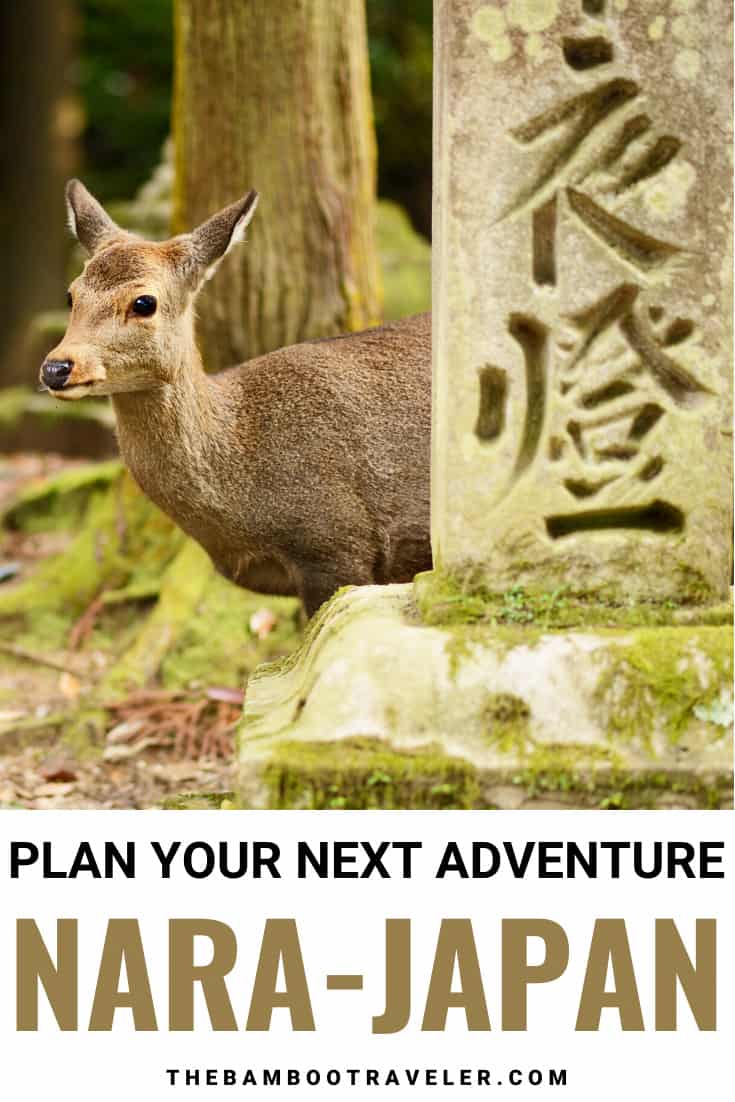
Looking for more on Japan?
- Japan Itinerary: The Perfect 3 Weeks in Japan
- Tokyo Itinerary: How to Spend 4 Perfect Days in Tokyo
- Hakone Itinerary: How to Spend 2 Days in Hakone
- Kyoto Itinerary 4 Weeks: A City of a Million Temples
- Nara Itinerary: The Perfect Day Trip from Kyoto
- Matsumoto Itinerary: Exploring Japan's Coolest Castle
- Shirakawago Itinerary: Enter a Japanese Fairytale
- The Ultimate Day Trip to Hiroshima and Miyajima
- Kamikochi Hiking: The Perfect Day Trip from Takayama
- Takayama Itinerary: Travel Back in Time to Old Japan
- The Best Ever Guide to Japan's Tateyama Kurobe Alpine Route
- Top 10 Must-See Places to Visit in Kyoto
- 13 Things You Need to Know Before Going to Japan
- The 20 Best Novels to Read Before Visiting Japan
We just came back from Nara, and your guide was awesome!
Deer snacks are now ¥200. Darn inflation!
Thank you so much! I’m glad my guide helped you in planning your trip! Good to know about the increase in prices of the deer snacks.
Submit a Comment Cancel reply
Your email address will not be published. Required fields are marked *
Submit Comment
This site uses Akismet to reduce spam. Learn how your comment data is processed .
What are you looking for?
About the bamboo traveler.

Welcome to The Bamboo Traveler, a travel blog dedicated to helping those travelers who want to dig deeply into the history, heritage, and culture of a place. Whether it’s through the pages of your passport or the pages of a book, I’ll help you travel the world and uncover the history, culture, food, architecture, and natural beauty of some of the world’s most fascinating places.

Traveling to Japan soon?
Get all my great travel tips as well as this FREE Japan travel and itinerary guide sent to your email right away!
You have Successfully Subscribed!
Japan itinerary posts.
- Japan Itinerary : The Perfect 3 Weeks in Japan
- Hakone Itinerary : How to Spend 2 Days in Hakone
- Kamikochi Hiking : The Perfect Day Trip from Takayama
- Kanazawa Itinerary: 2 Days in the City of Samurais
- Kyoto Itinerary 4 Weeks : A City of a Million Temples
- Matsumoto Itinerary : Exploring Japan’s Coolest Castle
- Nara Itinerary : The Perfect Day Trip from Kyoto
- Takayama Itinerary : Travel Back in Time to Old Japan
- The Best Ever Guide to Japan’s Tateyama Kurobe Alpine Route
- Tokyo Itinerary : How to Spend 4 Perfect Days in Tokyo
Posts About Kyoto
- Kyoto Itinerary: A City of a Million Temples
- Top 10 Must-Visit Places in Kyoto
- The Best of Kyoto: Fushimi Inari Shrine
- The Best of Kyoto: The Bamboo Forest
- The Best of Kyoto: Kinkaku-ji Temple
- The Best of Kyoto: Tenryu-ji Temple
Preparing for a Trip to Japan
- Top 10 Must-Visit Places to Visit in Kyoto
- How to Find the Perfect Place to Stay in Tokyo
- Traveling Solo in Japan: The Good, the Bad, and the Ugly
- Don’t Panic: What to do if you need a doctor in Japan

Get Your FREE Japan Itinerary Guide Here!
Subscribe to my newsletter to receive the latest travel tips for Asia and get a free 4-page PDF version of my 3-Week Japan Itinerary.
Pin It on Pinterest

Nara Day Trip Itinerary – How To Spend One Day In Nara
Posted on Last updated: June 7, 2021
I haven’t been everywhere, but I’ve seen my fair share of beautiful Asian travel destinations . Each of them has its own unique culture, flavour and flair. But my time in Nara, Japan , was something extra special.
The ancient city is known (and loved) for its beautiful temples and tame deer that roam throughout the area. The compact city is small enough to be tackled in a day, leaving your memory bank full of timeless moments.
If you’re planning a Nara day trip from Kyoto or Osaka, then this one-day itinerary is the perfect asset to help you kickstart your adventures.
In this Nara day trip guide I cover everything you need to know, including how to get there, how to get around and the best things to see if you only have one day in Nara.
- 1 How to get to Nara (from Osaka or Kyoto)
- 2.1 Stop 1: Kofukuji Five-Storied Pagoda
- 2.2 Stop 2: Todaiji Temple
- 2.3 Stop 3: Kasuga-Taisha Temple
- 2.4 Stop 4: Wander around Nara Park
- 3.1 In Kyoto
- 3.2 In Osaka
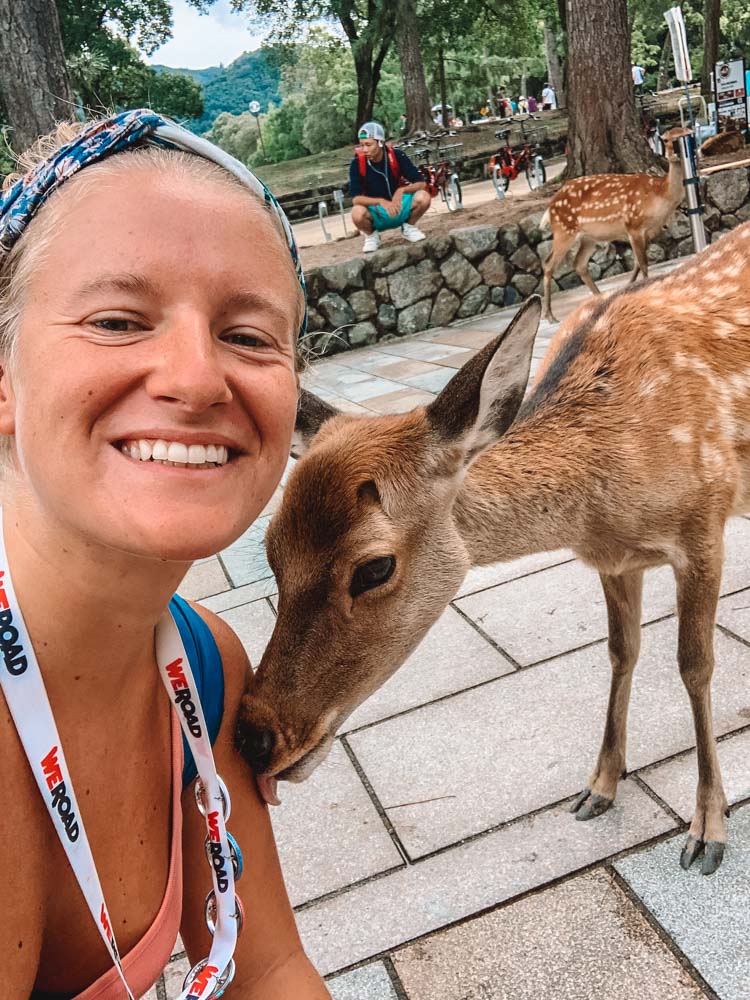
Trying to befriend one of the deer in Nara
How to get to Nara (from Osaka or Kyoto)
One of the best parts about planning a day trip to Nara is how easy it is to get to. Most visitors come from either Osaka or Kyoto, both of which have efficient public transport.
If you’re coming from Osaka Namba Station, you can get on a Rapid Express train that travels along the Kintetsu Nara Line. If you’re travelling from Kyoto to Nara, the Miyakoji rapid train leaves from Kyoto Station every 30 minutes.
The journey from both destinations consists of approximately one hour. The routes are included in the Japan Rail Pass , making the trip both easy and cost-effective.
Click here to purchase your Japan Rail Pass!
If you don’t want to travel by train and wander around Nara by yourself you can also do an organised day tour, which will takes you to all of the beautiful spots I’m about to list in this itinerary, with the added benefit of a knowledgeable local guide.
There are day trips available both from Osaka and Kyoto .
Click here to see all the details for a day tour to Nara from Osaka , and here for a day trip to Nara from Kyoto !

One of the buddha statues inside Todaiji temple in Nara, Japan
The ultimate Nara itinerary for one day
It’s very easy to get absorbed by the beauty of Nara. Arriving with a plan and a few bucket list activities is essential. If you still need some convincing and are wondering what to do in Nara, then look no further.
Once you exit JR Nara Station just head straight on to Sanjo dori Street. From here it’s a short 15-20 minute walk to Nara Park, where all the main attractions of Nara are located.
Stop 1: Kofukuji Five-Storied Pagoda
The Kofukuji pagoda consists of five floors, each showcasing traditional Japanese architecture and is truly a sight to behold. Even more impressive than the significant structure is the historical story that it tells.

Kofukuji Five-Storied Pagoda in Nara, Japan
The temple was first established in Nara back in 1710 and was used as a family temple of the Fujiwara (who were the most influential aristocratic clan at the time). The pagoda is a single structure in a group of several buildings.
Reaching up to 50 meters in height, the five-story pagoda is revered as Japan’s second-tallest wooden pagoda. Entrance to the temple grounds is free, making a visit the perfect budget-friendly addition to your Nara one day itinerary.
If you want to delve a little deeper into the history of the temples and surrounds, then you can pay a little bit extra to see the Eastern Golden Hall and Kofukuji’s National Treasure Museum.
The pagoda is easy to reach. If you arrive by Kintetsu Nara Station, then it’s a short five-minute walk. If you arrive at JR Nara Station, then the walk is a little bit longer (20 minutes).

Exploring Nara in Japan
Stop 2: Todaiji Temple
A visit to Nara would be incomplete without a stop by Todaiji Temple. The sacred building is one of the most important temples in the whole of Japanese Buddhism and serves as the headquarters of Kegon teachings .
Visiting it is considered one of the best things to do in Japan , and it’s easy to see why.
Not only is Todaiji Temple majestic in appearance, but it is resilient in structure. The temple was built in 753 and has survived, quote, “earthquakes, fires and political mayhem”.
Entrance fees for the museum or the Great Buddha Hall are ¥500 separately, or ¥800 for a joint ticket. This fee is well-worth the remarkable experience.

The outside of Todaiji temple in Nara, Japan
The Todaiji Temple is home to the biggest bronze Buddha statue in the world, which spans up to 15-meters tall. The impressive sight can be viewed once inside the temple.
I spent two weeks in Japan and have to admit that by the time I arrived in Nara, I was a bit “templed out”. I was so templed out I almost didn’t go inside the Todaiji Temple and was about to settle on just seeing the grand exterior.
I’m glad my friends convinced me to go inside because the sight of the three buddhas one next to the other, inside the magnificient halls is really impressive. Inside the temple you can also find little stalls that sell lucky charms and souvenirs.
The esteemed temple is located at the northern end of Nara Park. You can easily get here from the Kofukuji Pagoda in a 30-45 minute stroll through Nara Park.
If like me you get distracted by the beautiful deers that roam free, it might take a bit longer!

Admiring the giant statues inside Todaiji temple in Nara, Japan
Stop 3: Kasuga-Taisha Temple
If you’ve been following my travel tips and experiences, then you’ll know that I am fascinated with unique and beautiful temples.
With this in mind, Nara is the best destination for temple-lovers. Kasuga-Taisha Temple is the third one for the day and a must-see sight on your Nara tour.
Celebrated as more of a ‘shrine’ than a ‘temple’, Kasuga-Taisha is a popular attraction to visit in Nara. The traditional structure is dedicated to the deity that is responsible for the protection of the city.

The outside of Kasuga-Taisha Temple in Nara
The walkway up to the main building is set in lush greenery and lined with over 3,000 austenitic lanterns.
The beauty of the setting makes a visit to Kasuga-Taisha Temple a great practice opportunity for budding photographers, so make sure that you pack your camera.
Travellers can visit the outer area of the temple for free, but stepping inside the sanctuary will cost ¥500.
Once inside the bright, red columns and white walls, travellers are met with beautifully ordained shrines that are dedicated to the lucky gods, making you feel even more lucky to see it yourself.

Exploring Kasuga-Taisha Temple in Nara, Japan
Stop 4: Wander around Nara Park
Once you’ve ticked off the main structural attractions in Nara, then you can take your time to soak up the beauty of Nara Park.
The park is located in central Nara and is known around the world to be the home of hundreds of freely roaming deer. The only other place where we’ve seen tame wild deers in Japan was Miyajima Island .
With all of the above-mentioned temples located within the park, chances are that you’ve already caught a glimpse or two of these cute, friendly creatures while going from one to the other.

A female deer and her fawn in Nara Park
These deer have become a symbol of the city, and are considered by locals as messengers of the gods. Although they are surprisingly tame, they can become a bit aggressive if you tease them with food.
If you really want to feed them, then you can buy some deer crackers within the park. I’ve seen some people pet the deer but like all wild animals, you should be careful not to bother them too much.
You should also be careful if you’re carrying food in packagings, as they might snatch it from your hands and you don’t want them munching on the plastic wrapper of your Twix. Nara Park is a beautiful spot to end off your full day in the city.

One of the deer wandering free around Nara Park
Where to stay to visit Nara on a day trip
Whether you’re visiting Nara on a day trip from Kyoto or Osaka you should aim to stay somewhere close to a train station, so that you can minimise travel within Kyoto and Osaka before even getting onto a train to Nara.
In Kyoto I was staying at Hotel Elcient Kyoto which was right across from the train station in Kyoto. The staff were always helpful, the rooms clean and fairly spacious, and besides the train station to visit Nara it was conveniently located also to explore Kyoto.
Click here to see the latest prices and availability at Hotel Elcient Kyoto!

One of the statues inside Todaiji temple in Nara, Japan
In Osaka I stayed at Hotel Monterey La Soeur Osaka . This hotel was close both to a train station and Osaka castle, which was perfect.
After our day trip exploring Nara we were close to one of the main attractions in Osaka, as well as being connected to everything else we wanted to see in the city.
Click here to see the latest prices and availability at Hotel Monterey La Soeur Osaka!
If this one-day itinerary has got you excited about your trip, but you don’t want to travel by train or wander around alone, then you can also do day trip tour which takes you to all of these spots with the benefit of a knowledgeable local guide.

One of the many wild deers in Nara Park, Japan
Final thoughts on a day trip to Nara
We visited Nara as a day trip from Osaka and loved it. This Japanese city is so rich in history and culture, but also offers a relaxing atmosphere to explore it all in.
I spent two weeks in Japan and after the chaos and bustle of Tokyo and Kyoto, it was a pleasant change. It reminded me a bit of our day trip to Kamakura and our visit to Himeji Castle earlier during our Japan trip.
Get ready for a fantastical day in Nara, filled with temples, history and, of course, cute deer. This Nara 1-day itinerary is based on what I got up to when I visited Nara, I hope you find it useful in planning your day trip to Nara.
Enjoyed reading my Nara day trip itinerary? Pin it!

One Day Trip from Kyoto to Nara Suggested Itinerary
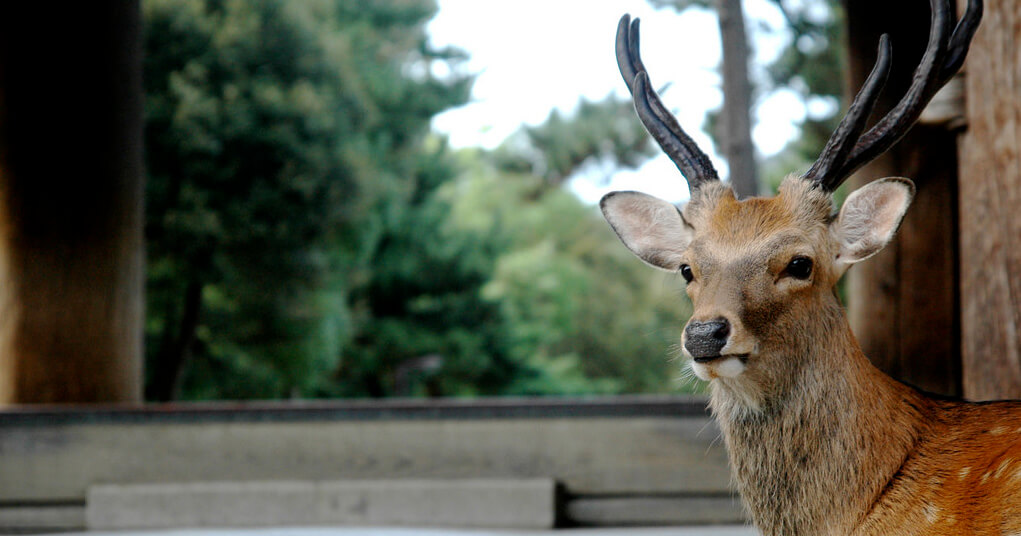
Japan’s first permanent capital was established in the year 710 at Heijo, the city now known as Nara . As the influence and political ambitions of the city’s powerful Buddhist monasteries grew to become a serious threat to the government, the capital was moved to Nagaoka in 784.
Nara is located less than one hour from Kyoto and Osaka. Due to its past as the first permanent capital, it remains full of historic treasures, including some of Japan’s oldest and largest temples. And of course, you can see a lot of deer!
If you want to make two two-day trip, here is our 2 Days Suggested Itinerary in Nara .
9am-10am Head to Nara
10:30am kasuga taisha shrine, 11:30am wakakusa mountain, 11:45am nigatsudo & sangatsudo, 12pm todaiji temple (world heritage site), 2pm nara park, 3pm kofukuji temple, 3:30pm naramachi, if you have a time; isuien garden, guided tours & hotels in nara, kimono experience, other articles you might like, suggested itinerary.
The most convenient way is to use JR line from Kyoto Station to Nara Station. It takes about 45 minutes (only 7 stations away from JR-Kyoto station to JR-Nara station with Miyakoji rapid service ). And the cost is 710 yen. Your fun trip is about to start!
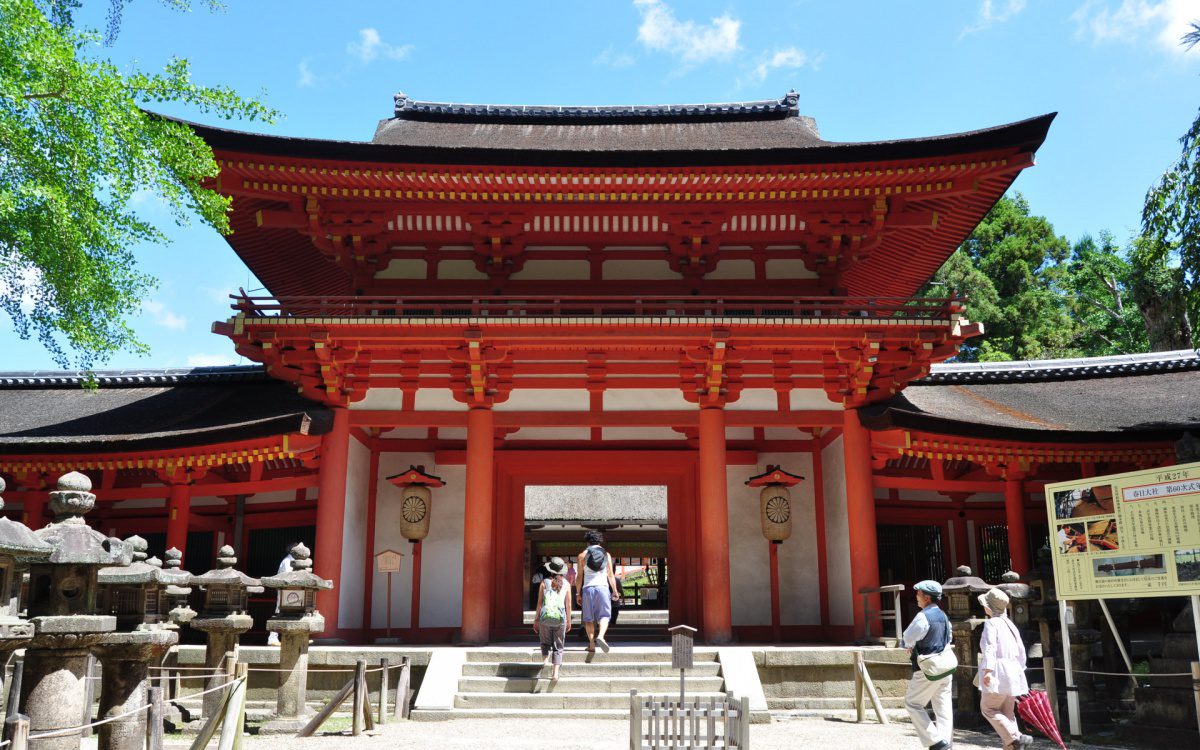
Kasuga Taisha Shrine is Nara’s most celebrated shrine. The shrine was established around the same time as the capital and is dedicated to the deity responsible for the protection of the city. Kasuga Taisha shrine was also the tutelary shrine of the Fujiwara, Japan’s most powerful family clan during most of the Nara and Heian Periods. Like the Ise Shrine , Kasuga Taisha had been periodically rebuilt every 20 years for many centuries. In the case of Kasuga Taisha, however, the custom was discontinued at the end of the Edo Period . You can go by bus from JR Nara station.
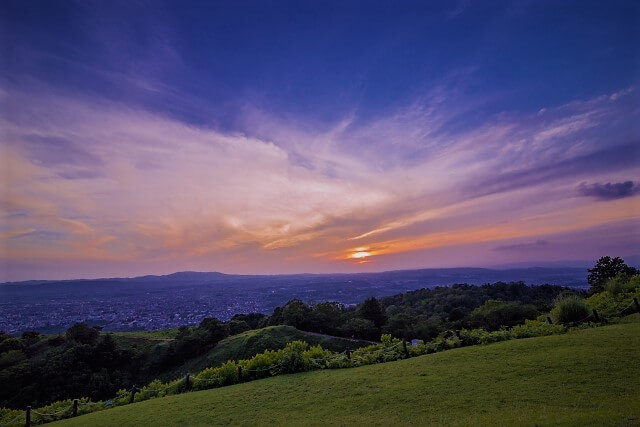
From Kasuga shrine you can walk to Wakakusa mountain .This mountain is about 350 meters tall and affords unobstructed views over Nara City. Tourists are allowed to climb Mount Wakakusayama all year round except during winter. The grassy slope of the mountain is lined by cherry trees that are usually in full bloom around early April. A steep trail leads along the leftmost edge of the slope to a plateau halfway up the mountain with great views over the city. It takes about 15-20 minutes to reach the plateau and many people do not hike farther. An additional 20-30 minutes would get you to the mountain’s peak.
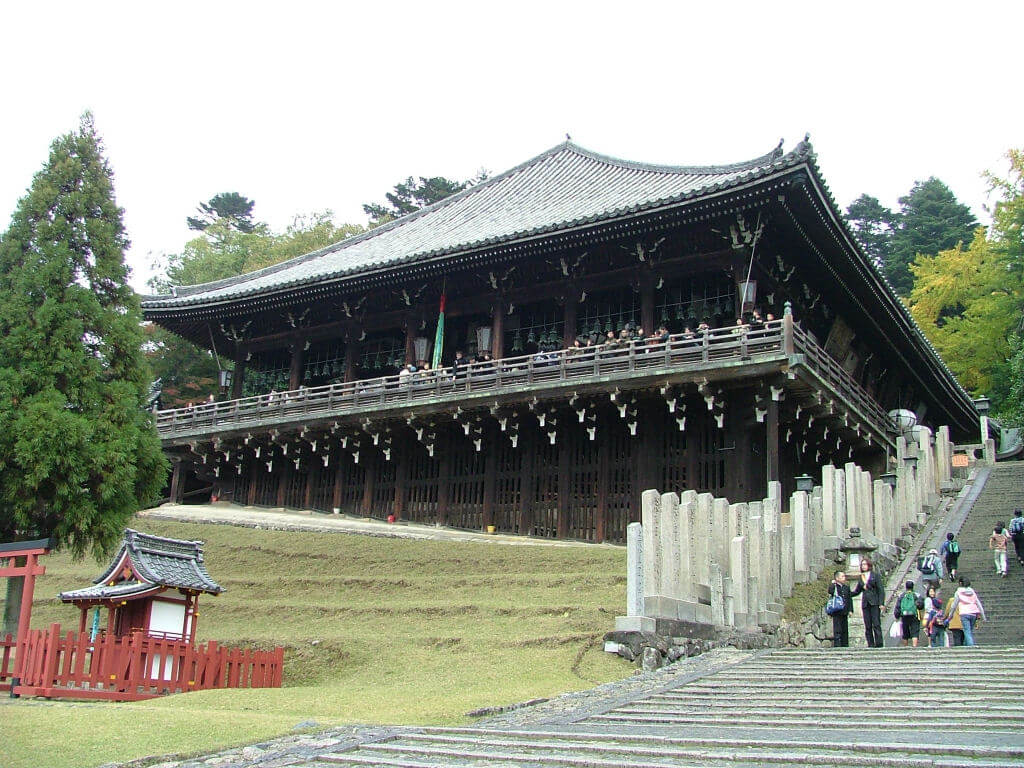
Built on a hill, Nigatudo has wonderful views from its terrace back over Todaiji, the five-story pagoda at Kofukuji Temple, Nara Park and as far as Mount Ikoma on the border of Osaka on a clear day. To reach the platform at the top of the temple ascend by either the stone steps or the covered wooden walkway.

Todaiji (Great Eastern Temple) is one of Japan’s most famous and historically significant temples and a landmark of Nara. The temple was constructed in 752 as the head temple of all provincial Buddhist temples of Japan and grew so powerful that the capital was moved from Nara to Nagaoka in 784 in order to lower the temple’s influence on government affairs. Todaiji’s main hall, the Daibutsuden (Big Buddha Hall) is the world’s largest wooden building.
1pm Lunch time!

The park is home to hundreds of freely roaming deer . Considered in Shinto to be messengers of the gods, Nara’s nearly 1,200 deer have become a symbol of the city and have even been designated as a natural treasure. Nara’s deer are surprisingly tame, although they can be aggressive if they think you will feed them. Deer crackers are for sale around the park, and some deer even have learned to bow to visitors to ask for food!
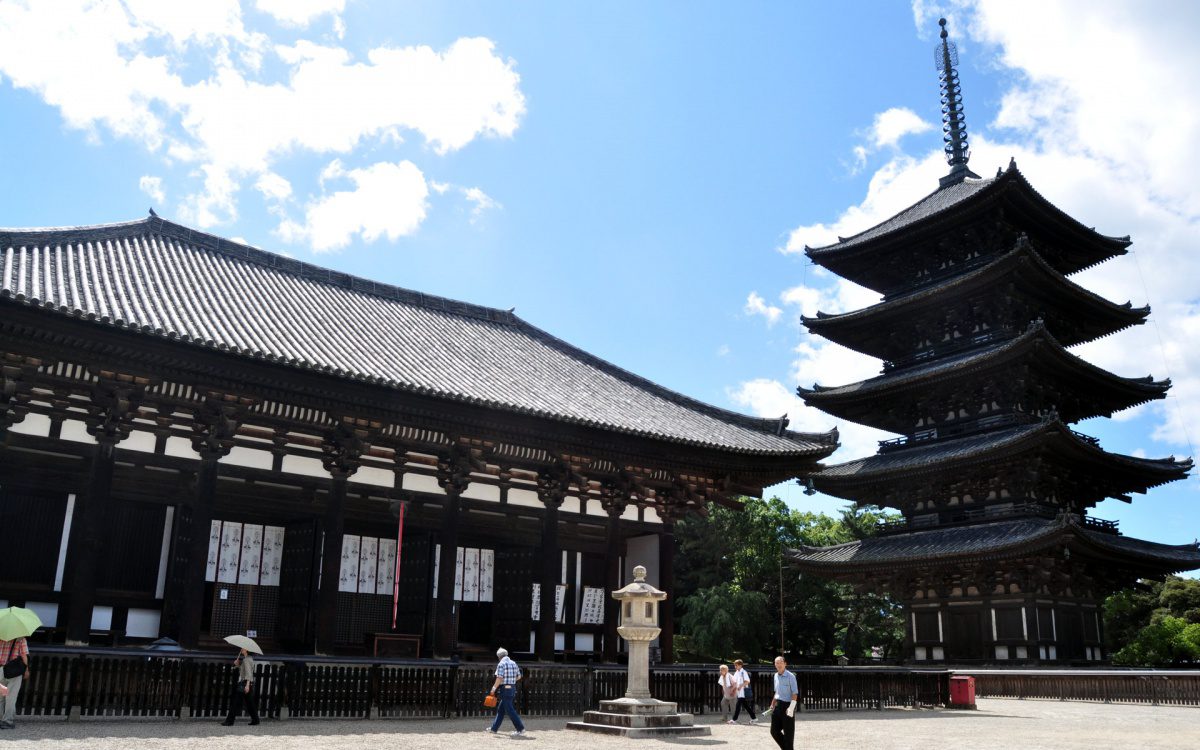
Kofukuji Temple was first built in 730, and was most recently rebuilt in 1426. At 50 meters, the five story pagoda is Japan’s second tallest, just seven meters shorter than the five story pagoda at Kyoto’s Toji Temple. Kofukuji’s pagoda is both a landmark and symbol of Nara.
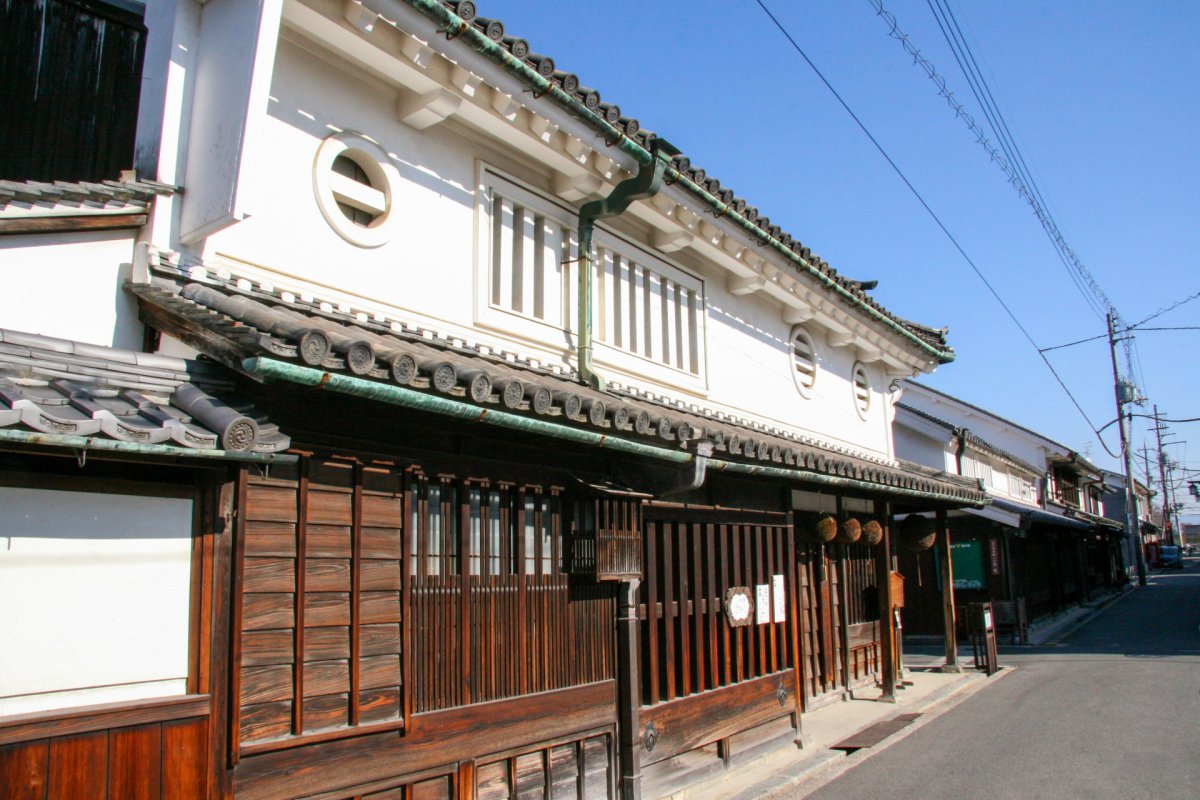
In Naramachi you will experience the atmosphere of old times created by old Machiya (historic merchant townhouses) and small alleys full of interesting sights. You can see some cute cafes and shops.
・4pm Back to JR Nara station
・5pm JR Kyoto station
Isuien means “garden founded on water”, and the garden’s name is derived from the fact that its ponds are fed by the small adjacent Yoshikigawa River. You can enjoy Japanese tea while savor the beauty of the garden.
Japan Wonder Travel is a travel agency offering guided tours in Japan. From private walking tours to delicious Food and Drink tours, we will organize the best tours for you! If you want to explore around Japan to learn more histories and backstories of the area, our knowledgeable and friendly guide will happily take you to the best spots. Also, we can provide you with any assistance for your upcoming trip in Japan, so please feel free to contact us if you have any questions/need some help!
- Nara Best Spots 8h Private Tour with Licensed Guide
- Nara Best Spots 6h Private Tour with Licensed Guide
Hotel recommendation in Nara;
Luxury Hotel
- Kasuga hotel
- Sarusawaike Yoshiday
Budget Hotel
- Yuzan guesthouse Annex
- Nara Guesthouse Kamunabi
- Onyado Nono Nara Natural Hot Spring
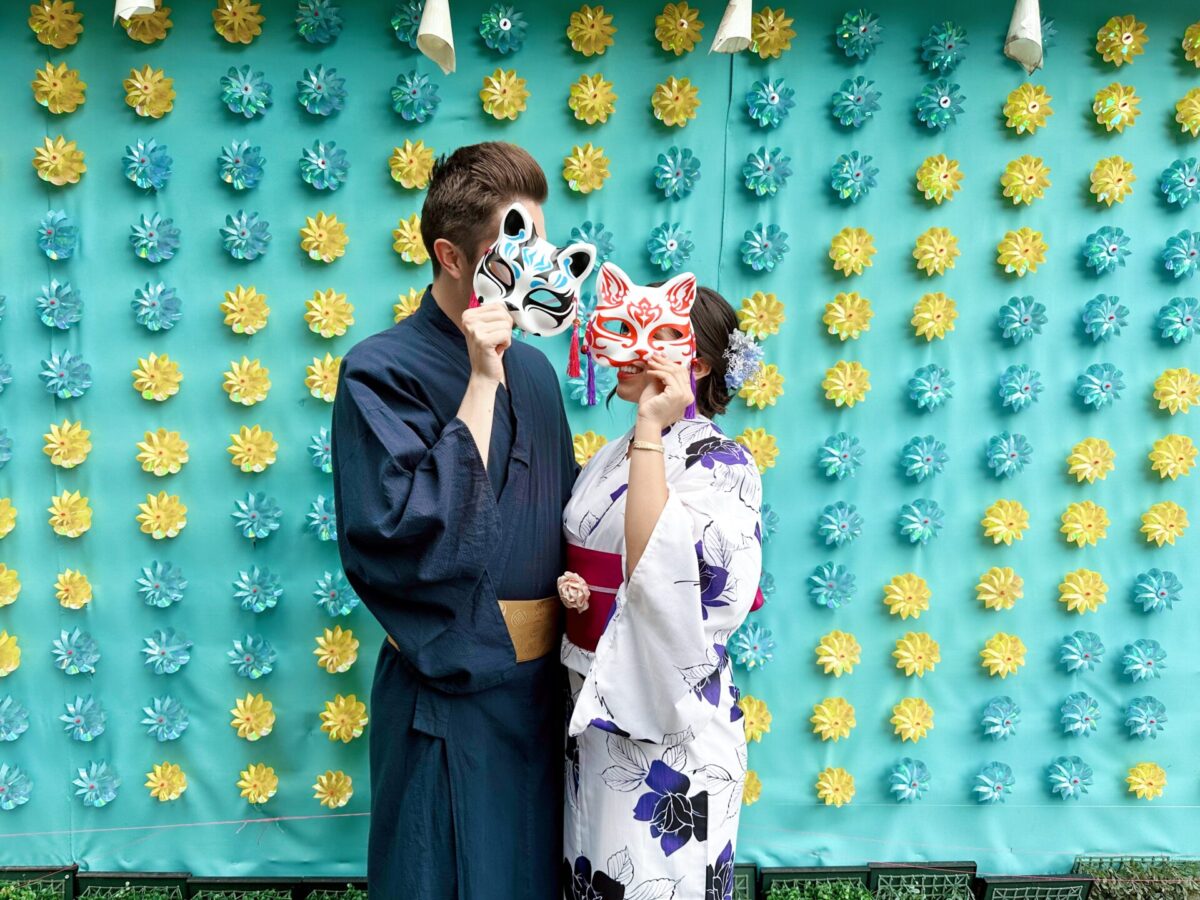
If you want to have a special experience in Nara, how about exploring the area with a kimono? Conveniently situated just a minute’s walk from Kyoto Station, Kimono Rental Wargo ensures you’re perfectly dressed before you head to Nara. Return the kimono hassle-free when you return to Kyoto after your day trip, making your visit both seamless and memorable. Official website: Kimono Rental Wargo
Follow us on Instagram , Facebook and Twitter for more travel inspiration. Or tag us to get featured!
Happy traveling!

his post may contain some affiliate links. When you click through and make a purchase we may receive some commission, at no extra costs to you

Thank you! I didn’t plan that much on my trip, but this guide to Nara inspired me to make a day trip there from Kyoto and it was full but excellent. All thanks to this post of yours.
I would add that the deer are not at all polite. They’re aggressive beasts once they know you have food!
- Popular destinations
- Hidden places in Japan
- Tours and workshop
- Food and drink in Japan
- Itinerary in Japan
- Places to visit in Tokyo
- Food and drink in Tokyo
- Seasonal events
- Tours & workshops
- Tokyo This Week
- Day trip from Tokyo
- Itinerary in Tokyo
- Places to visit in Kyoto
- Food and drink in Kyoto
- Itinerary in Kyoto
- Day trip from Kyoto
- Travel tips
- Accommodation
- Cultural tips
- Transportation
- Tokyo Tours
- Kyoto Tours
- Kimono Rental
- Fukushima Tours
- Mount Fuji Tours
- Tour Package
- Travel Concierge Service
- Media Kit(English/日本語)

Day Trip to Nara Itinerary from Osaka or Kyoto
Nara is one of the most popular day trips from Osaka or Kyoto. A short train ride away from either city, Nara is sure to be a highlight of your time in the Kansai Region of Japan. With plenty of deer that will bow to you for treats and enchanting shrines and temples. This former capital city is the perfect way to immerse yourself in Japan.
While many people do speed-run Nara and do it in only half a day, I recommend setting aside a full day to spend in Nara. It’s a very walkable and enjoyable city so it is worth fully exploring and not having to rush through.
This post contains affiliate links , If you make a purchase through these links I will earn a commission at no extra cost to you. Thank you!
Planning your trip to Nara ? Below are some places to stay and things to do
- Nara: Half-Day Walking Tour (Have a local guide you)
- Nara: Heart of Nature Temple, Forest, & Waterfall Bike Tour (Adventure in Nara!)
- Hotel the Flag Shinsaibashi, Osaka (Perfect location, beautiful rooms)
- Granbell Hotel, Kyoto (Favourite place I stayed, Japanese-style rooms, onsen)

How to Get to Nara from Osaka or Kyoto
Osaka and Kyoto both have great connectivity by transit to Nara. While either one can be used at the base for a day trip, I chose Osaka as my base. The reasoning behind this is Osaka had cheaper accommodation options than Kyoto and it allowed me to explore more of Osaka.
From Osaka: It takes 50 minutes to 1 hour on the train to Nara. The best option is to get the Kintetsu-Nara Line to Kintetsu-Nara Station as it is closer to the attractions in Nara. This line leaves from Namba Station in Osaka and easily connects with other metro lines in Osaka.
From Kyoto: It takes 35-40 minutes on the train from Kyoto to Nara. The Kintetsu-Nara Line from Kyoto Station is one option to get to Nara. If you are staying in the Gion district, the Keihan Line connects to the Kintetsu Nara Line with a change at Tambabashi Station.

When to Visit Nara, Japan
The best time of year to visit Nara is spring (March to May) and autumn (October to November). Spring and autumn will have the most comfortable temperatures for walking around Nara as most of the time you will be outdoors. You will also have the opportunity to witness the spring flowers or the changing autumn leaves set against the backdrop of Nara. If you travel in the summer (June to September), be sure to give yourself extra time to rest from the heat.
The Perfect Day Trip to Nara, Japan
Nara is the perfect day trip to take on your trip to Japan. I included it as part of a 14-day itinerary for Japan and it was one of the best day trips I took, Mount Fuji was close competition. With multiple UNESCO World Heritage sites and National Treasures, there is plenty to do to keep you busy while exploring Nara for the day.
Kofuku-ji Temple
Kofuku-ji Temple is one of the first temples to explore when you arrive in Nara as it is only 5 minutes from Kintetsu Nara Station. This Buddhist temple has several main things you won’t want to miss on your visit. The National Treasure Museum is worth a visit if you are interested in Buddhist art. One of the more interesting buildings here is the Octagonal Hall , which was reconstructed in the late 1700s and is an important stop on the Saigoku Kannon Pilgrimage.

The Bowing Deer of Nara
It’s impossible to avoid the deer in Nara. I saw my first deer near Kofuku-ji Temple but approaching Todai-ji I saw many more. The deer here are throughout the park. The deer will bow at you to try and convince you to feed them. You can buy deer crackers from vending machines to feed to them if you want to get closer.
While you can pet the deer, do be mindful that they are wild animals. I have heard they can be aggressive, especially if you have food on you. In addition to biting, the deer can knock you over or kick at you.

Todai-ji Temple
Todai-ji Temple is one of the must-sees in Nara. This large Buddhist temple complex was established in the 8th century and is now a UNESCO World Heritage Site. If you want to get more in-depth, you can take a private tour of Todai-ji .
Walking towards the temple, you first pass through the Great South Gate of Todai-Ji . This large wooden gate also contains two guardians known as the two kings of Todai-ji. You will likely see other gates while you are in Japan, but this was the most impressive one I saw.

You do have to pay to get into the Great Buddha Hall but it is worth the entrance fee. If you are collecting tourist stamps or goshuin stamps, both are available here. Upon entering, the Daibutsu (Great Buddha) is towering over you. At nearly 15 m (49 feet), this seated Buddha is the tallest one in Japan.

In addition to the Great Buddha, there are other statues to be found in the Great Buddha Hall as well as recreations of what past buildings looked like.

After exploring the Great Buddha Hall, the Todai-ji Temple Complex has other sites worth visiting, including the Todaiji Nigatsudo (February Hall). From there, you can get panoramic views over Nara. When I visited, you could hear monks chanting inside.
Lunch in Nara
Nara has plenty of great food options for lunch. I stopped at Rokumeien near the Todai-ji Bell Tower as it was a convenient location while exploring Nara. It was a great restaurant to stop and have a set meal of udon soup and is vegetarian and vegan friendly. I was delighted with my meal here and felt like I was having the authentic Japanese experience of dining in a small restaurant at the counter.

Kasuga Taisha Shrine
Kasuga Taisha Shrine was my favourite thing I visited in Nara. Walking up to Kasuga Taisha Shrine you walk along pathways lined with hundreds of stone lanterns through the Kasugayama primeval forest. You may even spot some more deer here, they are believed to be sacred messengers of the Shinto gods.

Kasuga-taisha Shrine is stunning. Walking in you are greeted by many bronze lanterns hanging along vermillion coloured walkways. Following along the path, you walk along the outside of the shrine. The courtyard here is beautiful, offering cherry blossoms in the spring and a large camphor tree wrapped with a straw rope and decorated with paper lightning bolts.
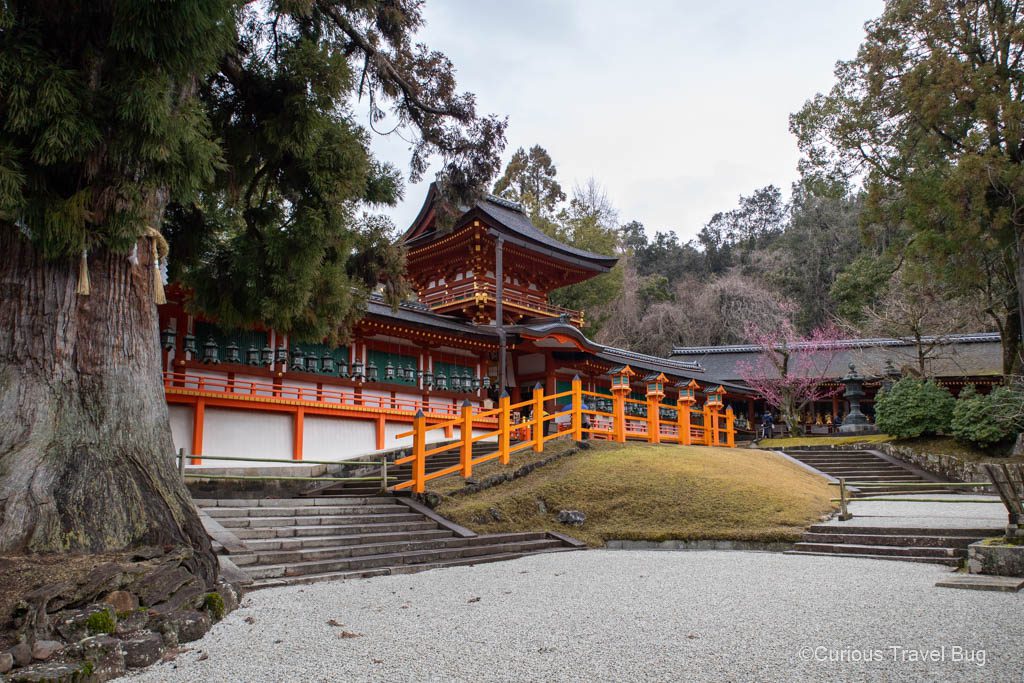
One of the highlights here was unexpected to me. You walk through a doorway with a heavy black curtain and are greeted by a small path that takes you through the dark, illuminated by many decorative bronze lanterns. Many of these lanterns feature interesting artwork such as deer or flowers and are much more detailed than the outdoor lanterns.

On your travels in Japan, you are sure to come across many of the famous vermillion torii gates. Kasuga Taisha has one of the oldest Shinto torii and helped influence the design of torii across Japan.

Higashimuki Shopping Street and Mochi
After wandering around the historic sites of Nara, check out Higashimuki Shopping street close to the train station. This pedestrian street is full of cute shops and restaurants. One of the things that Nara is famous for is its mochi. Mochi is made from rice that is made into a paste and then pounded into different shapes. There are all flavours of mochi so be sure to try some while you are in Japan but its chewy texture isn’t for everyone. At the end of the street check out Nakatanidou , a shop famous for its demonstrations of making mochi.

Day Trip to Nara
Nara was the perfect day trip and a great introduction to historic Japan. While many people do rush it and spend only half a day, it’s worth spending an entire day seeing everything Nara has to offer. It’s one of the best day trips you can do in Japan because of how close it is to two major cities. A day in Nara is worth adding to your Japan vacation.
Similar Posts

Stockholm Layover Guide: How to Do it in 8 Hours

Things to do During Winter in Toronto
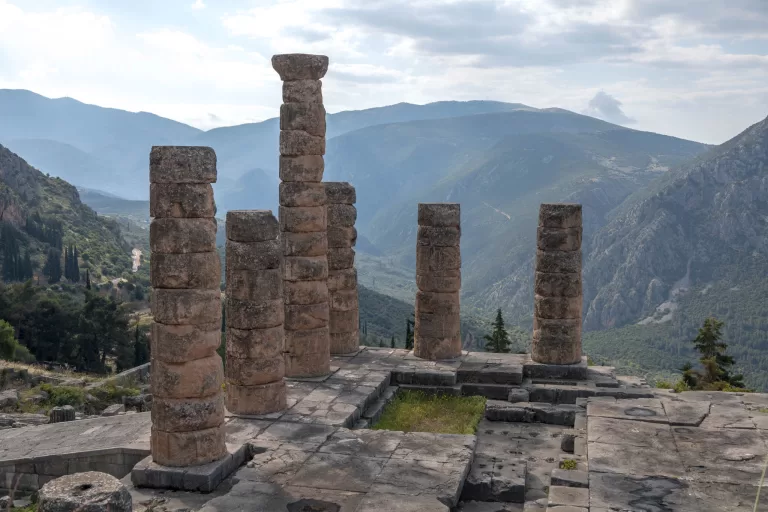
Visiting Delphi, Greece: The Ancient Center of the World
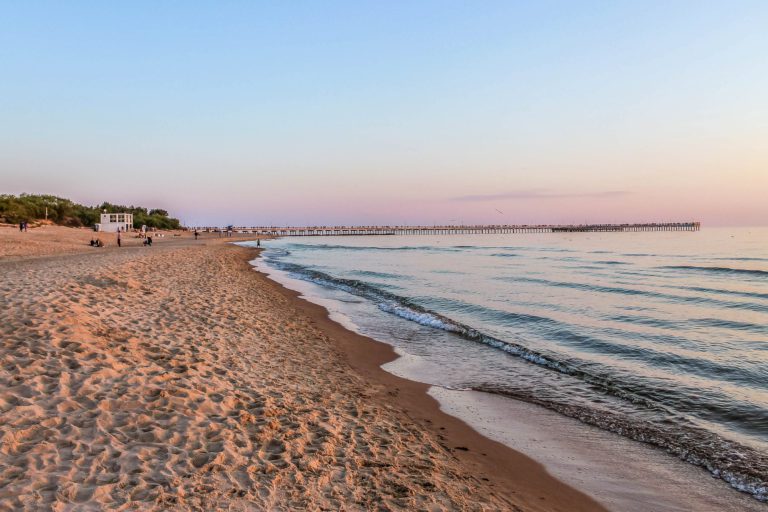
Things to Do in Palanga, Lithuania

Vik, Iceland: Top Things to Do
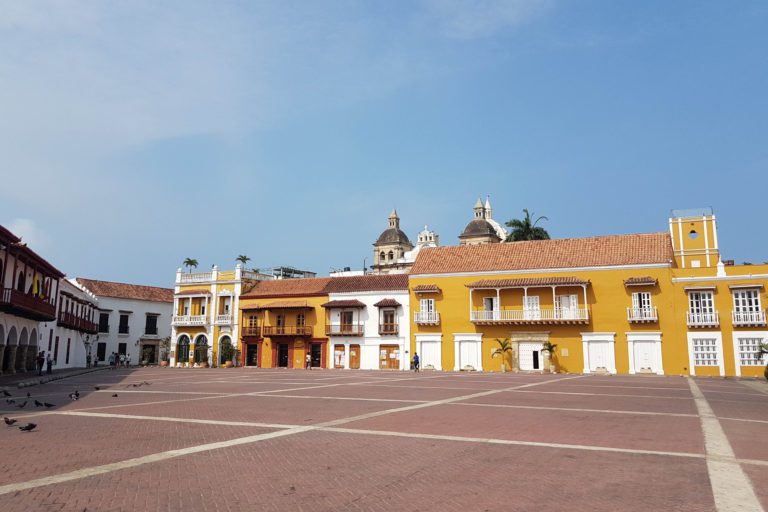
Spending Two Days in Cartagena Colombia: Caribbean Walled City
Leave a reply cancel reply.
Your email address will not be published. Required fields are marked *
- Travel guides
- Luxury Hotels
- Munich guides

- Travel Tips
From Kyoto to Nara: How to plan your perfect day trip
How to get to nara from kyoto and back. a detailed day trip itinerary.
Are you wondering if a day trip from Kyoto to Nara is feasible? Do you want to see its amazing UNESCO World Heritage sites, even though you are very short on time? Then the shortest possible answer is: Yes, absolutely.
That being said, a day trip to Nara does require some planning which is why I compiled this helpful travel guide, with detailed train connections and other options to see Japan’s oldest capital and one of the major tourist highlights in any Japan itinerary ( click to check out mine ). Japan is big and expensive, but that doesn’t mean you have to spend a fortune, right?
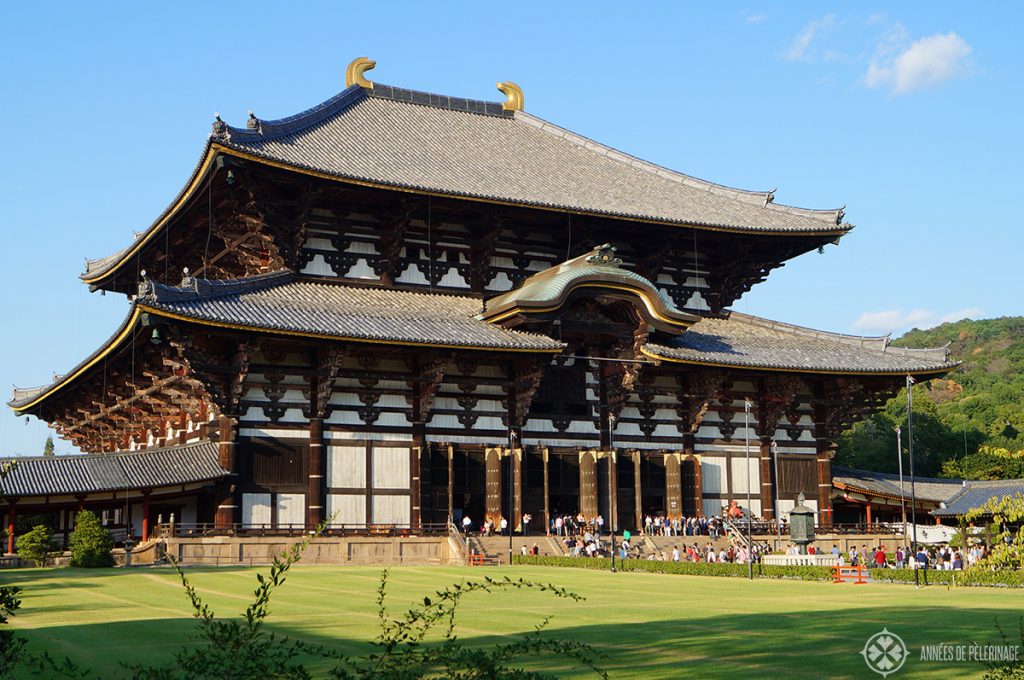
While it always pays off to reserve a little more time for Nara (I would suggest staying overnight once), a day trip can be a beautiful option for tourists on a tight schedule. In this case, consider booking a guided tour ( book it here ). Japan has a super-efficient train system, especially in the Kansai area, and why not rely on it when planning a Nara day trip itinerary?
From Kyoto station to Nara station it only takes about 35 minutes by high-speed train (Shinkansen bullet train). If you are still wondering what to do in the city, do read my guide on the top 10 tourist attractions in Nara .
Personally speaking, I hate changing accommodations too often when on a sightseeing trip. Packing, unpacking, check-in, and check-out eats away a lot of time (on that note: check out my Japan packing list ).
So, a day trip from Kyoto to Nara Park might actually be the best option to see its beautiful temples and shrines . By the way, I also got a very detailed guide on Kyoto , you will find super helpful with lots of insider tips.
Note: I earn a small commission for purchases made through links to GetYourGuide in this article. I feel they are by far the best guide company out there, which is why I recommend them.
From Kyoto to Nara by train
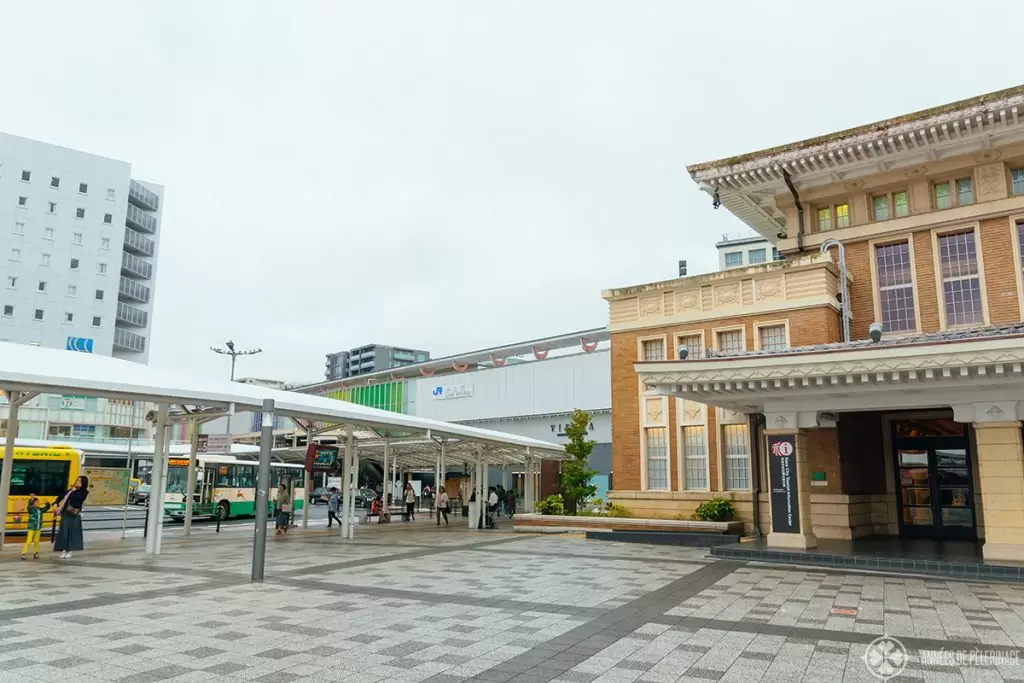
Nara is in the most central area in Japan (called the Kansai region). It is only some 35 kilometers south of Kyoto and Osaka lies some 28 kilometers to the south. The railroad system is extremely dense in this area , providing you with way more options to travel from Kyoto station to Nara than you actually need. There are two companies connecting Kyoto/Nara with regular train lines:
JR Nara Line Y690:
If you hold a JR Rail Pass , then this is the option you want to take. The Miyakoji Kaisoku Express will get you from Kyoto to Nara in 45 minutes. These trains leave every 30 minutes from Kyoto Station and JR Nara Station and cost about 710 Yen. You can also take the local Futsu line. It will take you some 70 minutes from Kyoto station to Nara station.
Kintetsu Nara Line Y1110:
By far the fastest way to travel from Nara to Kyoto and back is the private Kintetsu line. It will only take you 35 minutes , but your JR Rail pass will not be valid . Be aware that these operate from a different (but equally central) train station. The limited express train leaves twice per hour and costs about 620 Yen (the green car will be a bit more expensive). There is also a regular express train that will take 45 minutes to reach Japan but is quite a bit cheaper.
The Kintetsu Nara station is actually quite a bit closer to Nara Park , so taking this train from Kyoto to Nara has a lot of advantages. There are very regular buses serving the central area of Nara, so the JR Nara line is still a good alternative.
For non-Japanese speakers, the best way to check for current prices and connections is HyperDia – probably the most helpful website you will need on your trip through Japan.
Nara day trip itinerary
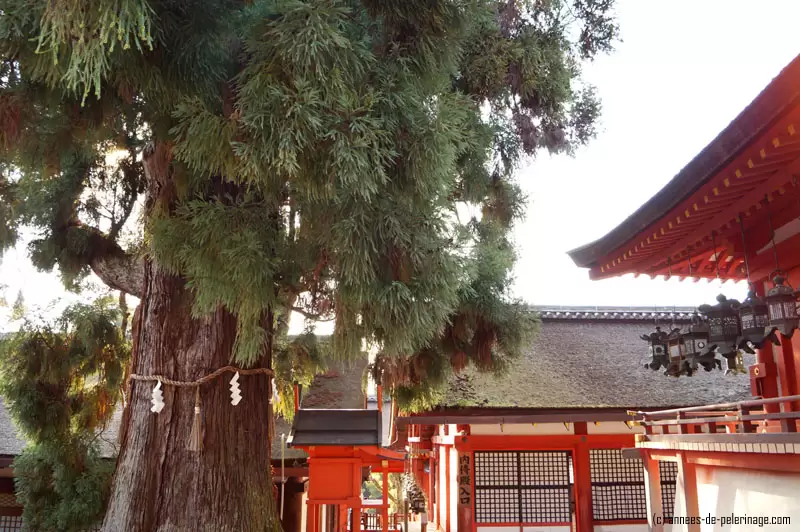
Japan is a country for early risers, and I would suggest to grab a yummy bento box at the train station in Kyoto and leave as early as possible . If you are staying at a Ryokan, you might want to tell them to pack you a bento or not book breakfast for that day, as you will really need to the whole day to see it all (or most of it).
It is rather easy to navigate through Nara (i’ll show you how in a second), but a local guide might be a very good idea if you want to dig deeper into the rich history of Nara ( you can book one here ). Otherwise, you can follow this itinerary:
7:15 am: departure from Kyoto station to Nara by rail 8:03 am: arrival at Nara Kintetsu station 8:15 am: Explore Kofuku-ji temple 9:00 am: take your time around Nara Park and feed the deer 10:00 am: walk towards Todai-ji & then up the hill to Nigatsudo to enjoy a beautiful view 11:00 am: walk over to Kasuga-Taisha
12:00 am: Lunch break in the Higashimuki Shopping district (take the bus)
1:15 pm: grab a bus (#97) to the Hōryū-ji area 2:00 pm: explore Hōryū-ji & its beautiful museum 4:00 pm: take the bus to Yakushi-ji and explore this beautiful temple 5:00 pm: take the bus back to Nara Kintetsu station/train from Nishinokyo station 5:30 pm: take the Kintetsu Limited Express 6:05 pm: arrival at Kyoto station
Now, this is only a rough sketch of a Nara day trip itinerary. You might want to skip a couple of these World Heritage sites, or you might tour Nara the other way around (starting in Hōryū-ji and ending at Kofuku-ji temple.) Actually, this might be a smart option as you won’t need to worry about catching the bus back in time. Also, check out my list of the 10 best temples in Nara for further inspiration.
This itinerary planned for arrival in Kyoto at 6:00 pm. That is about the time most Ryokans will start serving dinner, so you will make it in time. If you are staying at a hotel (which I actually wouldn’t recommend in Kyoto, as the finest Ryokans in all Japan can be found here), then you needn’t worry to be back earlier.
Be aware, however, that most temples in Nara (or Japan as a whole) will close around 5 pm. In Summer, it will be 5:30 pm. Most temples will end the admission about 15 before closing time.
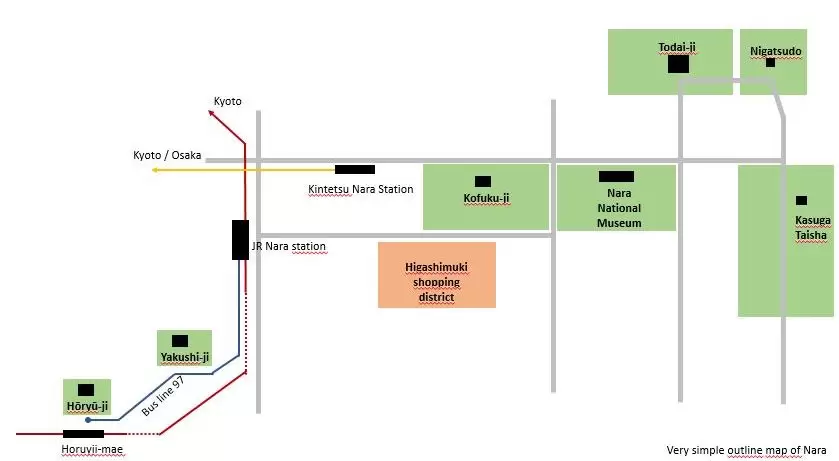
Getting around in Nara
A very dense network of bus lines operates within Nara. So, you might want to consider buying the Nara Bus Pass , which will grant you unlimited Kotsu buses around Nara. As a very good alternative, the 1-Day Kintetsu Rail Pass is available for foreign tourists and will give you access to unlimited rides on the buses in Nara and trains between Nara and Kyoto (& Osaka for that matter). It costs 1500 Yen. The 2-day pass will be 2500 Yen (but obviously not needed on a day trip to Nara.
Within the area of Nara Park, walking really is the best choice. Todai-ji and Kasuga-Taisha are not exactly located next door, but the free-ranging deer on the way will make up for it. If you are not as sure-footed, you can take the bus for a stop or two.
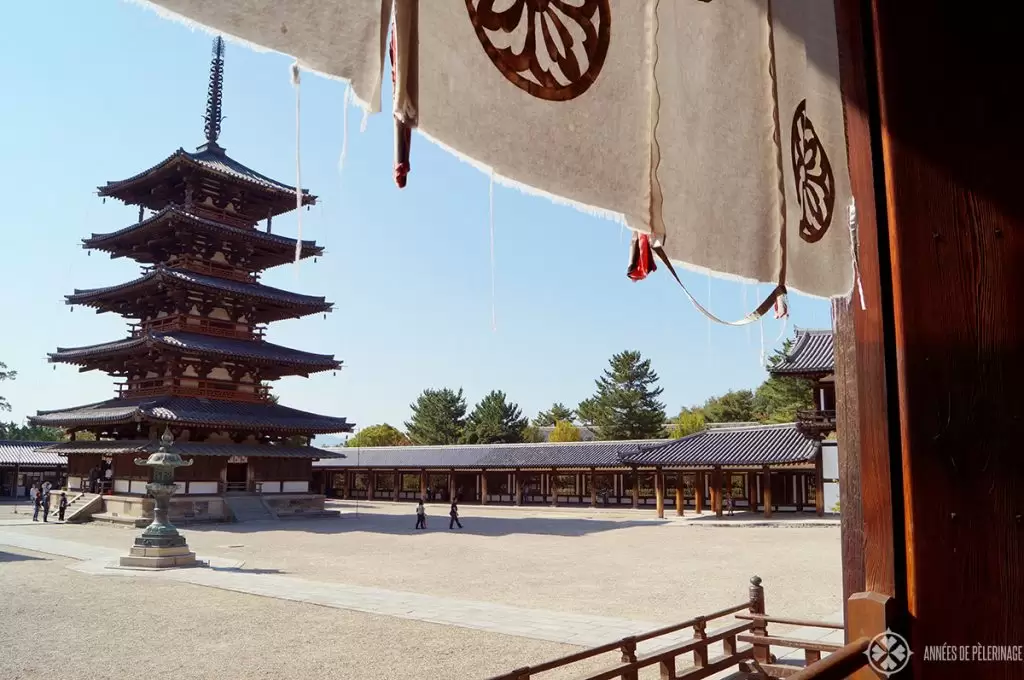
If you want to get to the Hōryū-ji area, you got two options.
Getting to Hōryū-ji by bus
The bus will probably the easiest option to reach the ancient temple. Take Bus number 97 to Hōryūji-mae . Be aware that buses only leave like once an hour. Also, know that this bus will actually take about 50 minutes to reach Hōryū-ji as it will stop quite frequently (the area is quite pleasant, though). The bus departs from the JR station but goes around a loop through Nara Park.
Taking the train to Hōryū-ji
You can also opt to take the Yamatoji Line from JR Nara Station and leave at Hōryū-ji station. The train is considerably faster than the bus (12 minutes!) if you got a Rail pass it will be cheaper, but you will have to walk about 20 minutes to the actual temple. You can only take bus number 72 to the temple.
I utterly love the whole Hōryū-ji area, as it’s very rural, very quiet and a wonderful place to walk around. I’m sure you’ll enjoy it as much as I did.
So that’s it. I hope I was able to help you out planning your perfect day trip and all your questions around “How to get to Nara from Kyoto” were answered. If not, do comment below!
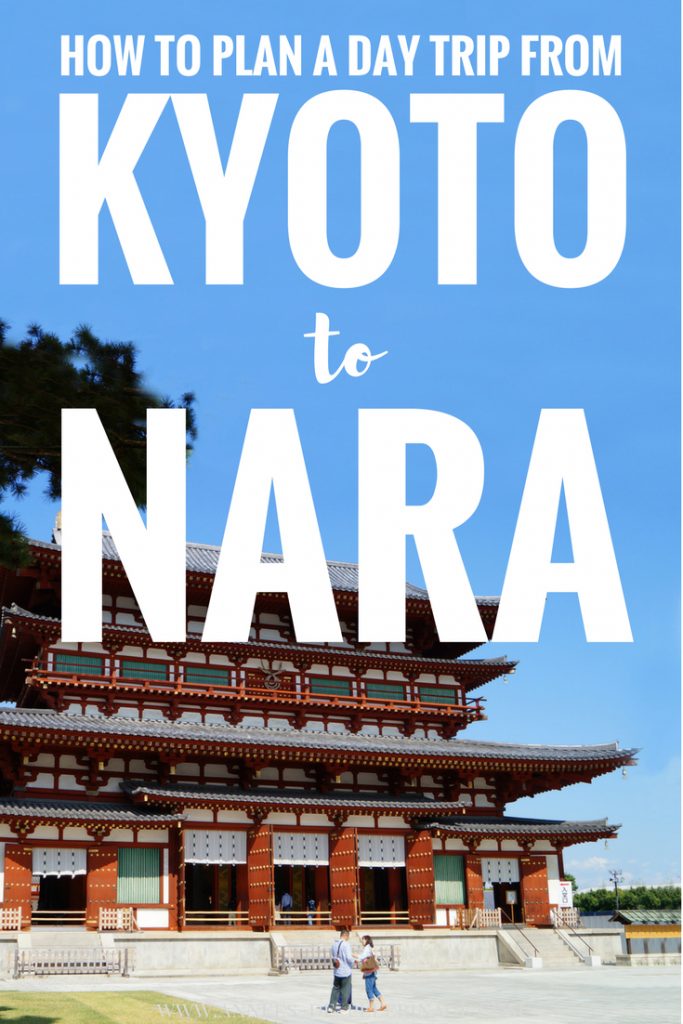
Picture credits: Yuya Tamai
RELATED ARTICLES MORE FROM AUTHOR
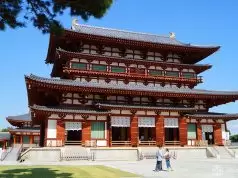
The 10 best shrines and temples in Nara, Japan
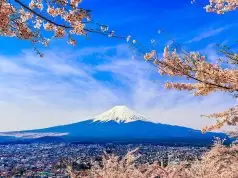
The best Japan travel books and guides for tourists & first-timers
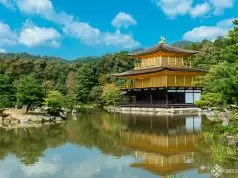
20 Japan highlights you need to visit on your next trip
21 comments.
This is very useful – thank you!
Is it easy to navigate the walking path from the kintetsu stn to nara park? I guess Saturday being a weekend wont be a problem as well? Thank you for sharing your itinerary! (Pls reply to this, made a mistake on the email ad in the pre ious msg. Tnx!)
Yeah..you basically just have to walk down the street for like 500 meters. I think you can manage that :P
Thank you for your very helpful post. We are going to Kansai for the cherry blossm in March 18 and would stay in Kyoto for a few day first before moving to Osaka. We plan to go to Nara for a day trip on the last day in Kyoto with our luggage then go to Osaka to check into our hotel, would there be any lockers for our luggage at Nara station if we need to take the luggage with us? We have a large 81 cm luggage.
there are coin lockers at all JR stations in Japan and even a lot of subway stations. That really should not be a problem (except they are all occupied *lol*). But you can easily do the day trip from Osaka directly. Only takes like 40 minutes with the subway. Norman
Great ! Thank you for your reply. Really look forward to this trip :-)
Hi Norman, thanks for this great post. I’m planning to visit Tokyo in a few days, then head down to Kyoto for 3 days and do a day trip to Nara while I’m in Kyoto. Instead of a day trip from Kyoto itself, do you think it’ll it be better to stop by at Nara on the way to Kyoto, or even on the way back instead? I saw you mentioned that all JR stations have lockers for baggage?
well..you’d have to catch a very early train from Tokyo then. I’d say that doing it from Kyoto is better. But 3 days will be a tight schedule. You could easily spend them in Kyoto without the day trip. There are 17 UNESCO World Heritage sites in Kyoto alone ;-)
Hello. I was wondering if i can finish Nara and Kyoto in a day? Is that possible?
in one day? If you just want to see the train station, then it’s possible. Otherwise, please plan a week at least :)
It was so difficult to find information on what’s in Nara aside from the deer park – so thank you so much for this! Now I’m definitely considering going to Nara when I’m in Japan.
Hey Lilly, GLad to be of help! Actually, I think the deer park is the least of it all. :)
Hello Norman, I will be staying is Osaka for 5 days. I would like to spend 1 day visiting Nara and another day for Kyoto. Is the Kintetsu 2 day pass is the most ideal? Can you suggest a relaxed itinerary as I am traveling with seniors?
Hey Maria, while 1 day in Kyoto sounds not enough (especially if you are traveling with seniors), I’m alas no travel agent. So, I can’t personalize an itinerary for you. THat being said, you’ll hopefully find a lot of useful content on my site:
https://www.annees-de-pelerinage.com/things-to-do-in-kyoto/ https://www.annees-de-pelerinage.com/how-many-days-should-you-stay-in-kyoto/ https://www.annees-de-pelerinage.com/10-amazing-things-to-do-in-osaka/
Hi there! I appreciate your detailed itinerary! We are planning for a day trip to Nara in March 2019, and I was wondering as to how much a whole day trip to do all of this would cost as opposed to booking a tour. I am doing all of the planning on my own for my husband and I, and I want to make sure I calculate as much as I can, especially since transport seems to be adding up quickly. If I buy the Hakone Free Pass and the JR Rail Pass, that should help me some right?
Well…going by yourself certainly will be cheaper than this. But you obviously won’t have a guide (which is the main reason for the high fee. A train ticket to from Kyoto to Nara is quite cheap, so the JR Rail Pass will not save you any money if that’s your only use of it! :)
Hello! If I already obtained a JR pass and if we were to take bus #97 to Hōryū-ji area, do I have to purchase a separate pass for the bus rides? Thank you!
Hey Raihan,
yes, you will have to buy a bus ticket. This bus is sadly not covered by your standard JR pass. but it’s only a couple of yens.
Thank you for this detailed itinerary for a day trip from Kyoto to Nara. I will be traveling with my husband and 77 year old mother to Kyoto in March 2019. My mother is in quite good physical shape. I’m wondering if it’s possible for us to see Nara on our last day in Kyoto, on our way back to Tokyo? I’m assuming that we will need to travel back to Kyoto before boarding the train back to Tokyo? Or maybe we can get to a different train station easily from Nara? But I also noticed that you indicated it might be hard to find empty lockers at the Nara train station to leave your luggage for the day? Thank you for your help. Gayle
there are lockers at all train stations throughout Japan. The Nara train station is a bit smaller, but i’m fairly sure you will be able to store your luggage there. As for train connections, you really should check them out yourself. There’s a wonderful english website called http://www.hyperdia.com/en/ to help you along. And sure, i don’t see why you couldn’t see Nara on your last day. You probably won’t be able to see it all, but the main highlights, certainly.
am planning to come to osaka for 10 days, from 29jan-07feb. any good suggestions with where to stay around and with which train station and pass or coin to go to.
am planning 29jan, arrive KIX airport, then go to Kobi (please tell me how to get there and which train station i need to get in so i can find my route to hotel, i will stay for 2 nights in kobi, 29,30 then 31 in the morning heading to kyoto. then stay for 31,1 and 2 then 3 heading to nara stay for 1 night then 4 till 7 i already booked hotel in osaka. hotel live artex.
then 7 will heading back to kix.
thanks any good tips for me, travelling with 1 miss and 1 senior (2 big 1 small luggage).
LEAVE A REPLY Cancel reply
That's okay for me
Save my name, email, and website in this browser for the next time I comment.

The latest post on my travel blog


The best things to do in Madeira, Portugal
- Terms & Conditions
- Site notice
- Data Privacy Statement
Inside Kyoto
A Kyoto Travel Guide
- Nara Itineraries
Nara has some of the most impressive sights in all of Japan. Here I provide three Nara itineraries to help you make the most of your time in Nara.

I’ve spent a lot of time in Nara working on the perfect itineraries for travelers. Here are my suggestions for the perfect half-day, full-day and two-day Nara itineraries to make the most of your precious time in the city.

Perfect Nara One-Day Itinerary
One day is sufficient to see most of the sights within Nara. You can do this itinerary starting and finishing in Kyoto or Osaka if you wish, but you might find it more relaxing to stay one night in Nara. (See my personal recommendations of where to stay on the Nara Ryokan and Nara Hotels pages).
You’ll most likely start this itinerary at Kintetsu Nara or JR Nara Stations. Either way, get yourself to the fountain just up the stairs from Kintetsu Nara Station to begin this walk.
- Walk up Nobori-oji Street. You’ll start to encounter Nara’s famous sacred deer as you go.
- Use the underground crossings to get to the northeast corner of the Nobori-oji/Route 169. Walk from there to Isui-en Garden . If you have time, pop into the free and excellent Yoshiki-en next door.
- Walk from Isui-en along the backstreets to Todai-ji Temple . Before entering the Daibutsu-den Hall to see the Great Buddha (Daibutsu), walk a little south to check out the Nandai-mon Gate, with its two huge guardian figures.
- Enter the Daibutsu-den. Take your time marveling at the Daibutsu and then exit the Daibutsu-den. Walk along the east wall of the Daibutsu-den and then go up the path that turns up to the right just past the small pond to reach Nigatsu-do Hall .
- Check out Nigatsu-do and then walk in the direction of the base of Wakakusa-yama. If you’re traveling at a normal pace, you’ll probably reach this area around lunchtime. See my list of Places To Eat In Nara for some lunch picks in this area.
- Follow the narrow pathways through the forest to Kasuga-Taisha Shrine .
- Follow the main path from Kasuga-Taisha all the way west until you reach Kofuku-ji Temple . If you haven’t eaten lunch yet, you’ll find lots of place in the shopping streets nearby (in Downtown Nara and Naramachi )
- In the afternoon, make a loop south through Naramachi , checking out Sarusawa-no-ike Pond, Koshi-no-Ie and the shops and galleries of the area.
- Return to your lodgings or one of the main train stations.

Hire A Travel Expert To Plan Your Japan Itinerary
Ideal nara two-day itinerary.
Two days really gives you time to spread out and explore Nara. I suggest spending the night in a hotel or ryokan in Downtown Nara ; see my Nara Ryokan and Nara Hotels pages for some suggested places.
Day 1: Do the Perfect Nara One-Day Itinerary described above.
Day 2: Sightseeing in Nara and Nishinokyo
- Start with a visit to the Nara National Museum . If there’s an interesting special exhibition on, then visit that. Either way, be sure to check out the permanent collection of Buddhist images.
- If you didn’t have time or energy to visit Naramachi on the preceding day, take a short stroll in Naramachi.
- Head to the main bus stops outside JR Nara Station or Kintetsu Nara Station.
- Take Nara bus No 97 to the Nishinokyo District , which is 4km southwest of Downtown Nara (note that you can also get to Nishinokyo by a local, or futsu, train on the Kintetsu Kashihara Line, which runs between Kyoto and Kashihara).
- Get off the bus at the Yakushiji Parking Lot.
- Explore Yakushi-ji Temple .
- Exit via the north gate of Yakushi-ji and walk 500 meters north to Toshodai-ji Temple .
- Explore Toshodai-ji and then return to Downtown Nara by bus No 97 or Kintetsu Line trains.
- If you have more time for sightseeing and an abiding interest in Japanese Buddhist history, consider visiting Horyu-ji Temple after visiting Toshodai-ji. Nara Kotsu offers buses between Yakushi-ji or Toshodai-ji and Horyu-ji. The bus takes about 48 minutes and costs either Y560 or Y600, depending upon where you catch it. After visiting Horyu-ji, you can return to Downtown Nara by another Nara Kotsu bus or by JR trains.

Brilliant Nara Half-Day Itinerary
As noted above, Nara can be visited as a daytrip from nearby Kyoto or Osaka (see the How To Get To Nara page for details). While six or eight hours is ideal for a daytrip, you might find yourself with a mere half day to spend in Nara. If that is the case, don’t despair: A half-day (four hours) is enough to see a lot of Nara’s major sights. The itinerary described here is basically an abbreviated version of the one-day itinerary above.
- Start from Kintetsu Nara Station and walk up Nobori-oji Street. You’ll start to encounter Nara’s famous sacred deer as you go.
- Use the underground crossings to get to the northeast corner of the Nobori-oji/Route 169. Walk from there to Isui-en Garden .
- Take your time marveling at the Daibutsu and then exit the Daibutsu-den. Walk along the east wall of the Daibutsu-den and then go up the path that turns up to the right just past the small pond to reach Nigatsu-do Hall .
- Check out Nigatsu-do and then walk in the direction of the base of Wakakusa-yama.
- Follow the main path from Kasuga-Taisha all the way west until you reach Kofuku-ji Temple .
- Cut through the precincts of Kofuku-ji Temple to get back to Kintetsu Nara Station or JR Nara Station.
- Note that if you’re really, really pressed for time, you can cut out the visit to Kasuga-Taisha Shrine. In this case, after visiting Nigatsu-do Hall, simply return the way you came to Kintetsu Nara Station.
Check Hotel Availability
Destination, check-in date, check-out date.

Where Are These Places Located?
- Open the Nara map
- You will see the list of places on the left hand side. (Click the 3-line icon in the top left corner if not). Scroll down or use the map search (the magnifying glass icon) to find the place you want.
- Click the name of the place in the list. Its location pin will be highlighted on the map.
- Map pins are color coded - BLUE: Hotels | VIOLET: Ryokan | PINK: Places to Eat | YELLOW: Things to See and Do
- If you're using the map on your phone, open the map and then search for the name of the place. The map will then zoom in on its location.
Nara Travel Guide:
- Nara Travel Guide Overview
- Things To Do In Nara
- Nara Walking Tour
- Places To Eat In Nara
- Nara Districts
- Nara Hotels
- Nara Ryokan
- Nara Cherry Blossoms
- Nara Fall Foliage
- Best Time To Go To Nara
- How To Get To Nara
- Getting Around Nara
- Nara Annual Festivals And Events
Itineraries For Other Cities In Japan:
We also have carefully crafted itineraries for Kyoto , Tokyo , Osaka , Kanazawa , Takayama , Hiroshima and Miyiyama .
Japan Itineraries:
To fully plan your trip to Japan, see my comprehensive Japan itineraries which guide you to the best locations and map out each day for you.
- Japan Itineraries Overview
- 1 Week Japan Itinerary: Tokyo and Kyoto
- 10 Day Japan Itinerary: Tokyo, Kyoto and Kanazawa
- 10 Day Japan Itinerary: Tokyo, Kyoto and Takayama
- 2 Week Japan Itinerary: The Grand Tour
- 7 to 10 Day Japan Itinerary: Kyoto, Osaka, Nara and Hiroshima
- Japan With Children Itinerary
Nara Districts Map

Disclosure: InsideKyoto.com is a participant in the Amazon Services LLC Associates Program, an affiliate advertising program designed to provide a means for sites to earn advertising fees by advertising and linking to amazon.com and amazon.co.uk. World Nomads provides travel insurance for travellers in over 100 countries. As an affiliate, we receive a fee when you get a quote from World Nomads using this link. We do not represent World Nomads. This is information only and not a recommendation to buy travel insurance.

By James Davies in Japan Guides .
The beautiful city of Nara is well worth exploring over the course of a day. Small enough to explore on foot, a Nara day trip is easily possible from either Kyoto or Osaka. Follow our Nara itinerary and discover the very best of this magical city.
Once the capital of Japan , Nara is synonymous with the adorable free-roaming deer that fill Nara Park. Yet the city is just as famous for its plethora of UNESCO World Heritage Sites made up of countless historic temples and shrines.
Alongside these are a number of gorgeous Japanese gardens, world-class museums, as well as exceptional views from the top of Mount Wakakusayama . You certainly won’t be short on ideas for things to add to your Nara itinerary.
One Day in Nara - Table of Contents
How to get to nara.
By far the easiest places from which to visit Nara are either Kyoto or Osaka .
Nara has two mainline train stations, JR Nara Station and Kintetsu Nara Station .
Kintetsu Nara Station is served by the Kintetsu-Nara Line . Kintetsu Nara station is a little closer to Nara Park than the JR Nara station.
However, the Kintetsu-Nara Line is a private train line and not a JR Line station, so you cannot use the Japan Rail Pass to reach this station.
How to Get to Nara from Kyoto
If you’re planning on visiting Nara on a day trip from Kyoto , then you can take a direct train to either of the city’s two stations.
- Trains on the JR Nara Line take 45 minutes on the rapid service or about 75 minutes on a local train service to reach Nara JR Station from Kyoto Station.
- Trains on the Kintetsu Line take between 35-50 minutes to get from Kyoto to Nara depending on the service.

Along with the five storied pagoda, two of the temple’s halls, the Eastern Golden Hall and the North Octagonal Hall , have been declared as National Treasures of Japan .
The most important building in the Kofuku-ji complex is the Central Golden Hall . Completely restored and reopened in 2018, the Central Golden Hall houses a collection of sacred Buddhist icons that have also been awarded National Treasure status.
Next to the Central Golden Hall is the Kofuku-ji National Treasure Museum , which displays a fantastic collection of Buddhist art, including one of the most important Buddhist statues in Japan, the three-headed and six-armed Ashura Statue .
- 9.00am - 5.00pm
- Central Hall: ¥500 / National Treasure Hall: ¥700 / Eastern Hall ¥300 / Combined ticket : ¥900
Meet Nara’s Famous Free-Roaming Deer
From Kofuku-ji Temple continue east, past the five storied pagoda further into Nara Park .
It’s at this point that you’ll have your first of many encounters with some of Nara’s 1300 tame sika deer . Considered to be sacred Shinto messengers , one of the best things to do in Nara is to feed the city’s free roaming deer.

Nara Park’s famous deer
Y ou could easily spend the majority of your Nara day trip amongst the park’s lovable deer. Officially designated as National Treasures , killing one of Nara’s deer was once punishable by death.
Dotted around Nara Park are stalls where you can buy crackers – called “ shika senbei ” in Japanese – to feed the deer, who all seem to have an unrelenting appetite. A pack of deer crackers costs ¥200.

The deer at Nara Park are always ready for their next meal
Once you’ve bought a pack the trick is to be as discreet as possible. Try and hide the crackers in a bag or a secure pocket and take one out at a time.
Most of the deer have learned to bow their heads as if to politely ask for food, but if they spot a whole pack in your hand manners quickly go out of the window and you’ll find yourself circled by hungry deer.
Needless to say, don’t feed the deer with anything other than crackers , and be sure to keep hold of any litter until you can dispose of it properly. It was recently reported that a number of Nara’s deer have died from eating plastic left by tourists .
The Nara National Museum
Looking slightly out of place amongst the typically Japanese temples is the Nara National Museum . More like a European Palace than something you’d expect to see in Japan, the museum holds a huge collection of Buddhist art donated by the temples of Nara.
Two newer buildings, the east and west wings of the museum, are connected to the original building by an underground corridor. These wings host temporary exhibitions to accompany the main building’s enormous permanent collection .
- Nara National Museum
- 9.30am - 5.00pm
- Todai-ji Temple
Next, walk through the park and pass through the imposing Nandaimon Gate of Tōdaiji . Stop to admire the two huge guardians that stand either side of the gate’s entrance, before continuing on to the main Todai-ji Temple complex.

A UNESCO World Heritage site and one of the most sacred sites in Japan, Todai-ji Temple was built in 752. The main attraction of Todai-ji is the enormous main hall called Daibutsuden , or the Big Buddha Hall.
The current Daibutsuden was built in 1692, and despite being smaller than the original was still the largest wooden building in the world until as recently as 1998.
The Daibutseden houses the Daibutsu , the largest bronze statue of Buddha in the world. Almost 15 metres tall the statue also weighs an incredible 500 tonnes.
At the base of one of the temple’s pillars is a small square hole known as the Buddha’s Nostril . It is said that if you can squeeze through the hole then enlightenment will be granted to you in the next life.
- 7.30am - 5.30pm
Lunch at Kitahara Soba
After Todai-ji it’s time for lunch. Nara is an excellent place to eat, and there are plenty of good options in and around Nara Park. One of the best is Kitahara Soba , just a five minute walk from Todai-ji Temple.

Kitahara Soba is a small and homely restaurant with a wonderful atmosphere. As the name suggests, Kitahara Soba specialises in delicious and reasonably priced hot and cold soba noodle dishes . If there’s a queue when you arrive it’s well worth waiting for a free table .
- Kitahara Soba
- 11.00am - 4.00pm - closed Tuesdays
- Location map
Stroll Around Isuien and Yoshikien Gardens
Just two minutes from Kitahara Soba are two of the finest Japanese gardens in Nara. Isuien Garden and Yoshikien Garden sit side by side, with Todai-ji Temple visible in the background.
Both gardens are beautifully manicured and maintained and a wonderful haven in the middle of Nara.

Isuien Garden consists of a front and back garden . The smaller front garden is dominated by a large pond.
Overlooking the pond is the Restaurant Sanshu , housed inside an original 17 th century tea house , which serves traditional meals and green tea.
The back garden features a larger lake with stepping stones leading through to secluded spots and, at the far end of the garden, a red Inari Shrine.
In front of the entrance to the garden is a small art gallery featuring precious antique artworks from all over Asia, some of which are over 3000 years old.

The Isuien Garden
The neighbouring Yoshikien Garden is larger and free to enter for overseas visitors. Yoshikien consists of three distinct gardens that sit side by side.
A beautiful large house overlooks the Pond Garden’s sloped and colourful landscape. The Moss Garden gets its name from the lawn of thick moss that sits in front of a typical tea house. The Tea Ceremony Garden at the rear of the Yoshikien is a wonderfully tranquil place to sit and relax.
- Isuien Garden
- 9.30am - 4.30pm
- Yoshikien Garden
- ¥250 / free to international tourists (need to show ID)
See the Lanterns at Kasuga Taisha
Next, return back into Nara Park and walk along the lantern-lined path to Kasuga Taisha , the most sacred shrine in Nara.
Dating from the 8 th century, Kasuga Taisha is the shrine for the Fujiwara family, one of the most powerful families in Japan during Nara’s time as capital of Japan.
Also enshrined here are a number of deities, including Takemikazuchi , who is said to protect the city of Nara.

Bursting with bright vermillion and nestled beneath the Kasuga Primeval Forest, Kasuga Taisha is another large temple complex, featuring a number of important halls and shrines.
At the heart of the complex is an inner sanctuary , which is famous for the gold and bronze lanterns that hang from the shrine’s buildings. Donated by worshippers the lanterns are only lit twice a year during the Mandoro festival.
- Kasuga Taisha
- Temple complex: 6.30am - 5.00pm | Inner sanctuary: 8.30am - 4.00pm
- ¥500 for the inner sanctuary
Watch the Sunset from Mount Wakakusayama
If there’s still time in the day, or if you’re staying in town overnight, end your Nara day trip with a walk to the summit of Mount Wakakusayama , from where there are sublime views over the whole city.

Two different walking paths lead to Mount Wakakusayama, and you won’t need to climb right to the top for a wonderful view of Nara .
Though it’s a steep climb, the mountain is covered in grass, and a number of stairways and manageable paths lead to the top. For the most amazing views, try to arrive in the late afternoon and with a bit of luck there’ll be the backdrop of a spectacular sunset. There’ll be no better way to end your Nara day trip.

- Mount Wakakusayama
- Access from 9.00am - 5.00pm, closed from mid December to March
Share this post
If you’ve liked this post please share it on the socials:
Follow us on Social Media
Follow our travels on Instagram here , and keep up to date with our latest posts on Facebook here .

I’m James , the founder, editor, writer and photographer at Where You’re Between . Currently based in Japan, I started Where You’re Between in 2017 to create detailed itineraries and in-depth travel guides for the places that I’m fortunate enough to visit. You can see all of our destinations here .
Explore Even More of Japan
- How to spend the perfect week in Tokyo
- The perfect one day Osaka itinerary
- The best day trips from Kyoto
- Why Koyasan is the most sacred town in Japan
- The best things to do in two days in Tokyo
- The 15 best weekend trips from Tokyo
- The best things to do in Naoshima, Japan’s art island
- When is the best time to visit Tokyo?
- 32 top tips ahead of your first visit to Tokyo
- 35 lesser-known destinations to visit off Japan’s tourist trail
- How to spend two days in Hakone
- The complete guide to hiking in Kamikochi
- What to see and do in Hakodate, the gateway to Hokkaido
You might also like:
- Discover Jeju Island, South Korea’s stunning tropical paradise
- What to see and do in four days in Bangkok
- How to spend a 24 hour layover in Singapore
- The perfect three day Kuala Lumpur itinerary
- How to hike to Bhutan’s iconic Tiger’s Nest Monastery
- Why the 10,000 Buddhas Monastery is Hong Kong’s most stunning temple
- Two days in Hoi An, Vietnam’s historic Yellow City
Please note that this post contains some affiliate links. If you click these links and go on to make a purchase we will earn a small commission at no extra cost to you.
DESTINATIONS TRAVEL ITINERARIES ROAD TRIPS BLOG
SUBSCRIBE ABOUT US CONTACT DISCLAIMER & PRIVACY POLICY
POPULAR DESTINATIONS
JAPAN AUSTRALIA SINGAPORE NEW ZEALAND
SUBSCRIBE TO OUR NEWSLETTER
© WhereYoureBetween.com – 2024
Cookies help us deliver our services – by continuing to browse this site, you agree to our use of cookies.
There's a World Out There. Let's Go!
Sign up to our email newsletter for a monthly(ish) dose of wanderlust
- Destinations
1 Day Itinerary in Nara: Day Trip to Nara from Kyoto
Best walking itinerary in Nara for First-timers
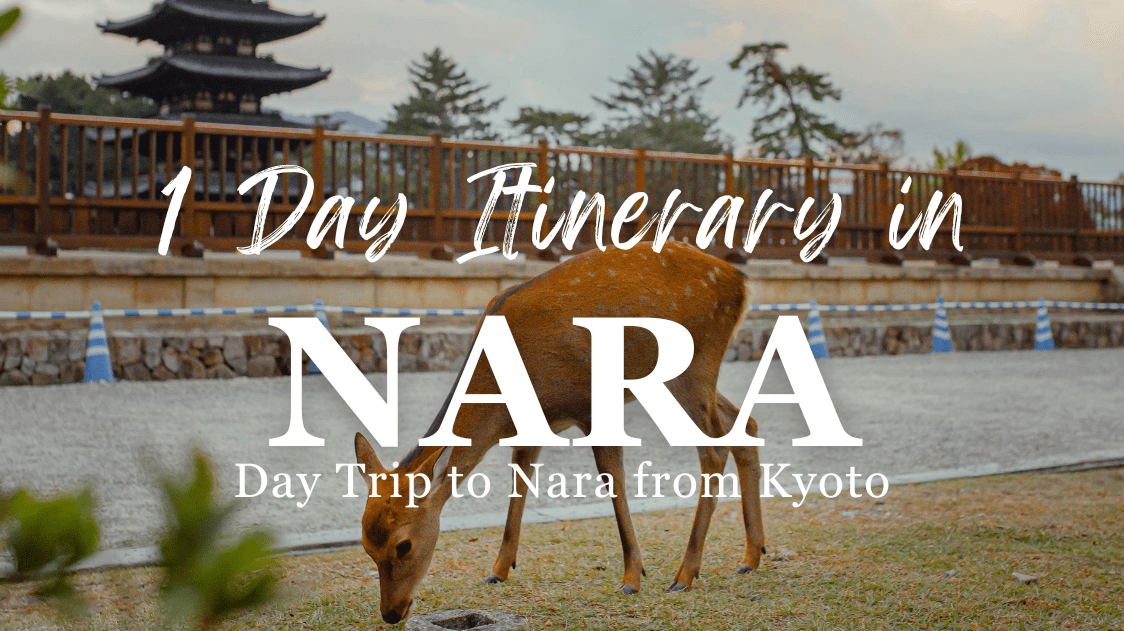
Nara is a treasure trove of Japanese history and culture, offering an intriguing blend of ancient temples, shrines, and recently popular spots. It is also a place that you can access easily from Kyoto, making it a highly popular tourist location for those who visit Japan’s old capital.
In this article, I will be sharing with you our version of a 1 Day Itinerary in Nara: Day Trip from Kyoto. The perfect guide for first-timers seeking to explore the enchanting city of Nara.
Prepare for a day filled with fascinating discoveries, and don’t forget to wear comfortable shoes, as exploring Nara’s charming streets and historical sites involves plenty of walking. Let’s dive into the heart of Nara’s rich heritage and modern allure!
*Please note that this article contains affiliate links.
Head to Kintetsu Nara Station (Start)
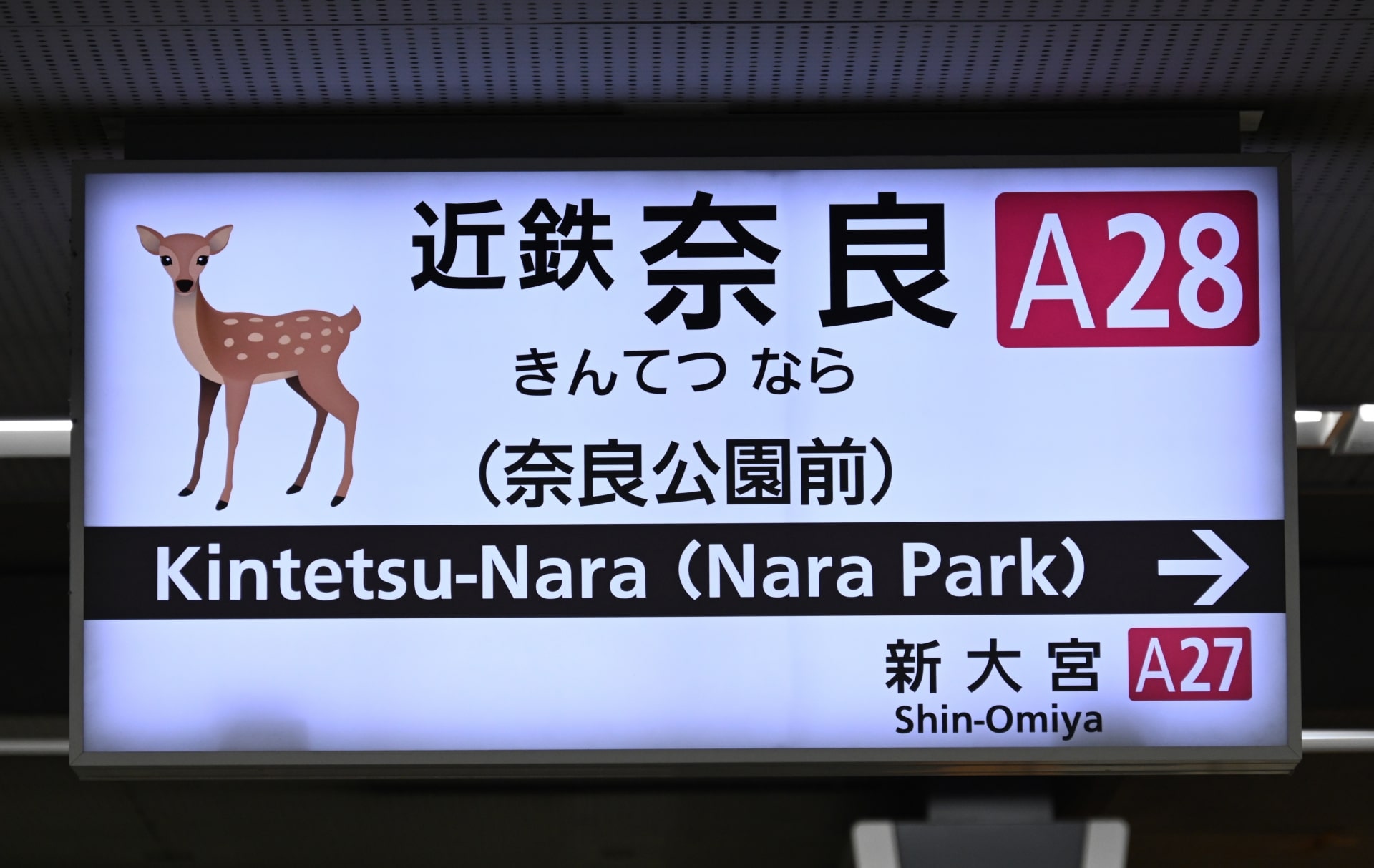
We begin our day trip by heading to Kintetsu Nara Station. From Kyoto Station, take the Kintetsu Kyoto Line Express to Kintetsu-Nara (近鉄京都線). There’s about 1 train per hour and It takes a little over 40 minutes from Kyoto to Nara. The earliest train leaves Kyoto at around 6:50 am (this can change, so be sure to check beforehand).
*Note: There is also a different train station named “JR Nara Station”, but for this itinerary, we will use the Kintetsu Nara Station because it is closer to the locations we’re visiting this day.
1. Nara Park
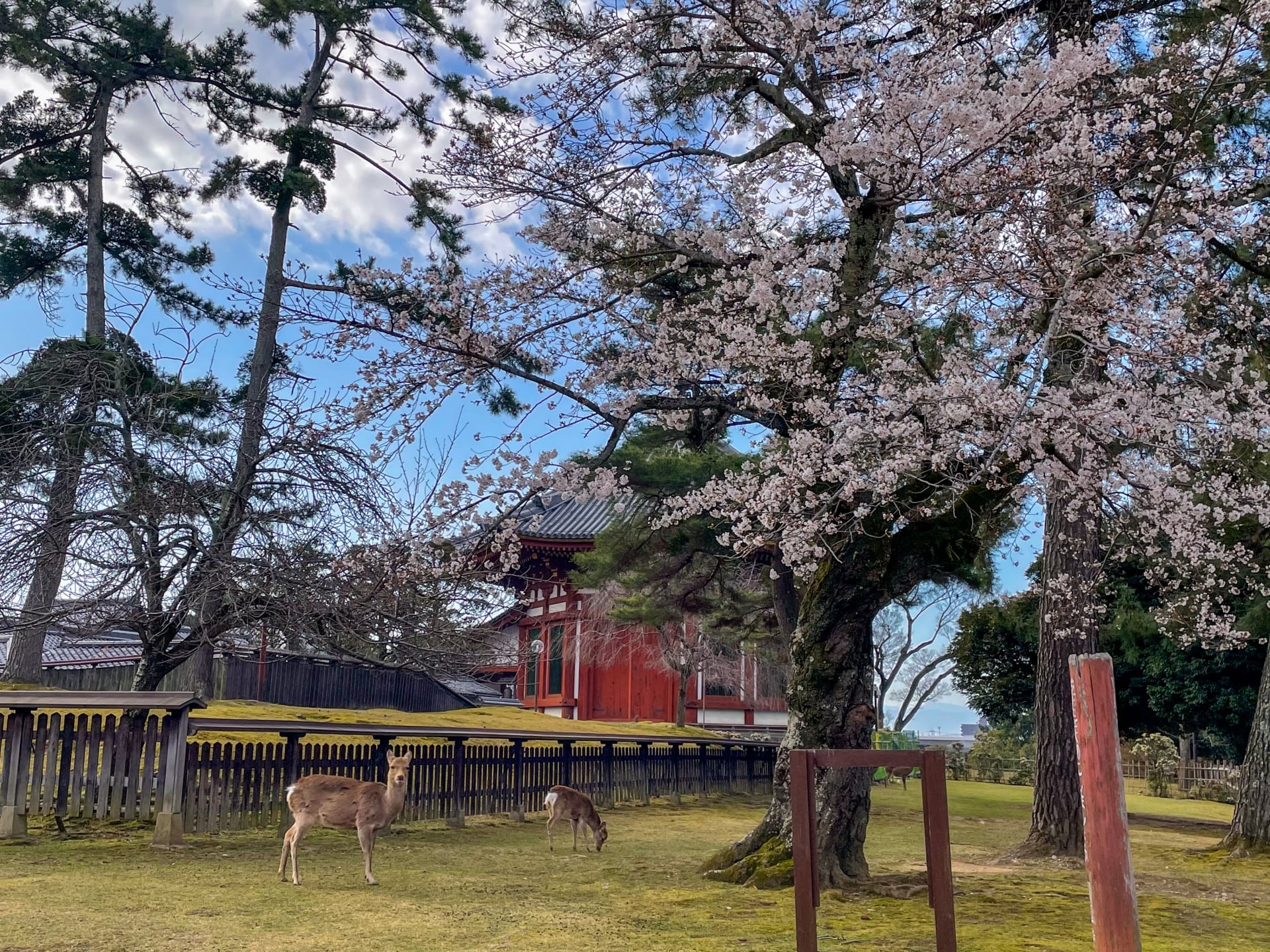
From Kintetsu Nara Station, head East, and in a few minutes you will be entering Nara Park territory. You will immediately start noticing deer around you as you head to your first destination.
Nara Park (奈良公園) is home to wild deer, designated as national natural treasures. You can buy Shika-senbei (deer crackers) in various stores within the vicinity of the park. You can feed the deer these crackers. Although you will be walking a lot this day, it is a fun walk since you’ll be seeing these precious creatures through out most of the day.
*Note: Although these deer are in most cases calm, remember that these are not domesticated and should be treated with respect. Please don’t hit, chase, or play pranks on them. Also, please don’t feed the deer anything other than the “deer crackers”. This ensures both the safety of the visitors and the well-being of these treasured animals.
2. Kofukuji Temple (30 mins)
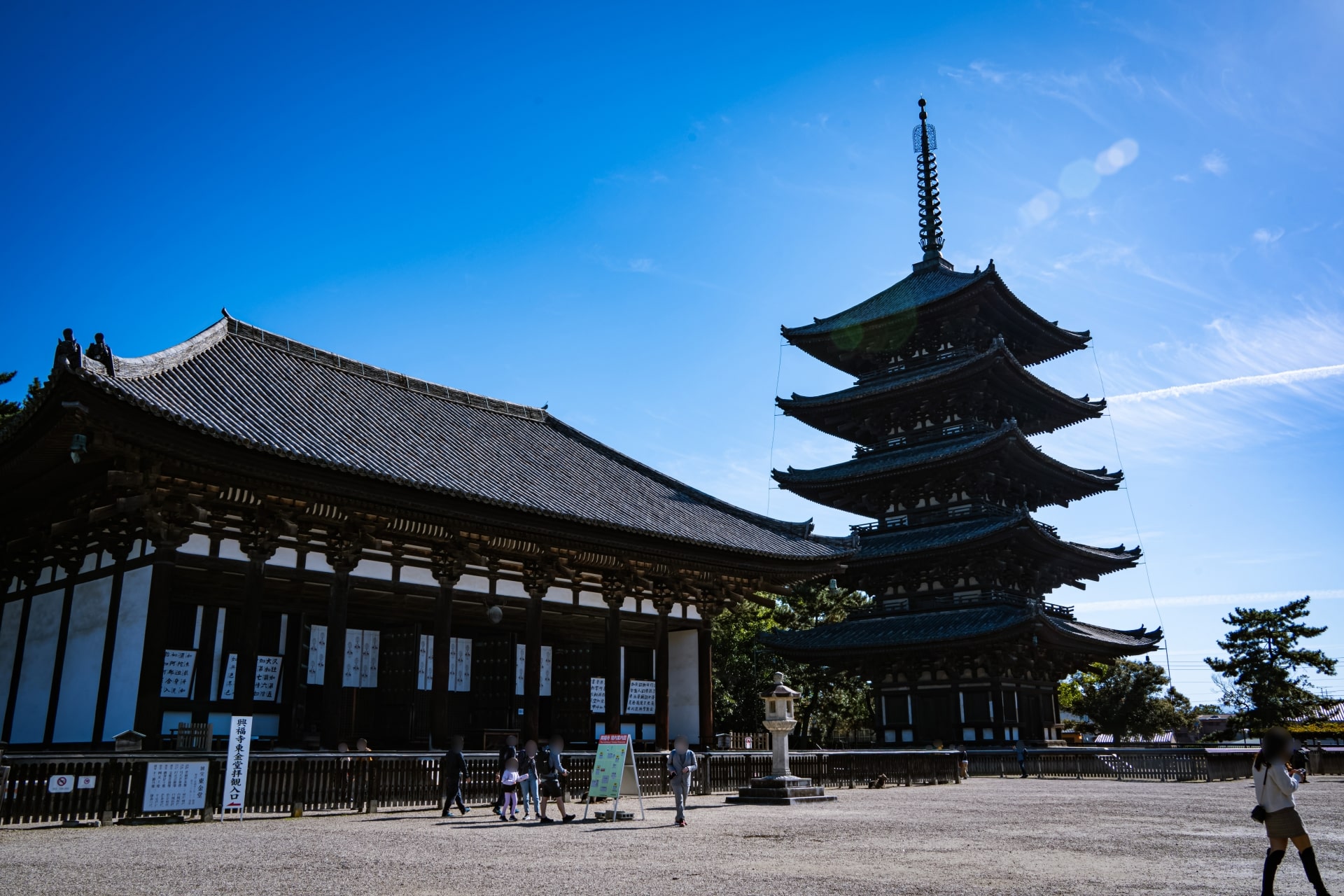
About 5 minutes walking from Kintetsu Nara Station, you will arrive at your first destination. Kofukuji Temple (興福寺) , with a history spanning over 1300 years, is a significant cultural and religious site in Nara.
It houses numerous national treasures and important cultural properties, including the Central Golden Hall (中金堂) and the iconic Five-Story Pagoda (五重塔). The temple’s National Treasure Museum is a highlight, showcasing a wide array of Buddhist statues, including the famous Ashura statue (阿修羅像), and treasures from the Nara to Kamakura periods.
As the main temple of the Hosso sect of Buddhism, it’s part of the “Historic Monuments of Ancient Nara,” a UNESCO World Heritage Site.
Information
3. Todaiji Temple (60-90 mins)

From Kofukuji Temple, head deeper into Nara Park (20 minutes walk) to arrive at Todaiji Temple (東大寺) . This is a historic temple and part of the “Historic Monuments of Ancient Nara,” a UNESCO World Heritage Site.
Founded in 752, the temple is renowned for housing the Great Buddha, a colossal statue of Vairocana Buddha. This iconic statue, approximately 15 meters tall and 12 meters wide, is awe-inspiring in its size and presence. The temple has endured and been rebuilt after destruction by fires twice in its history, preserving wood-constructed buildings from the Nara to Edo periods, with eight structures designated as National Treasures.
The Great Buddha Hall, also a National Treasure, is one of the world’s largest wooden structures, standing at a height of 48.742 meters, further highlighting the temple’s grandeur.
Check out more about this temple from the following links!
▶Todaiji Temple: Meet the World’s Largest Buddha
▶Omizutori: the Oldest Festival in Japan
4. Have lunch in the Nara Park area
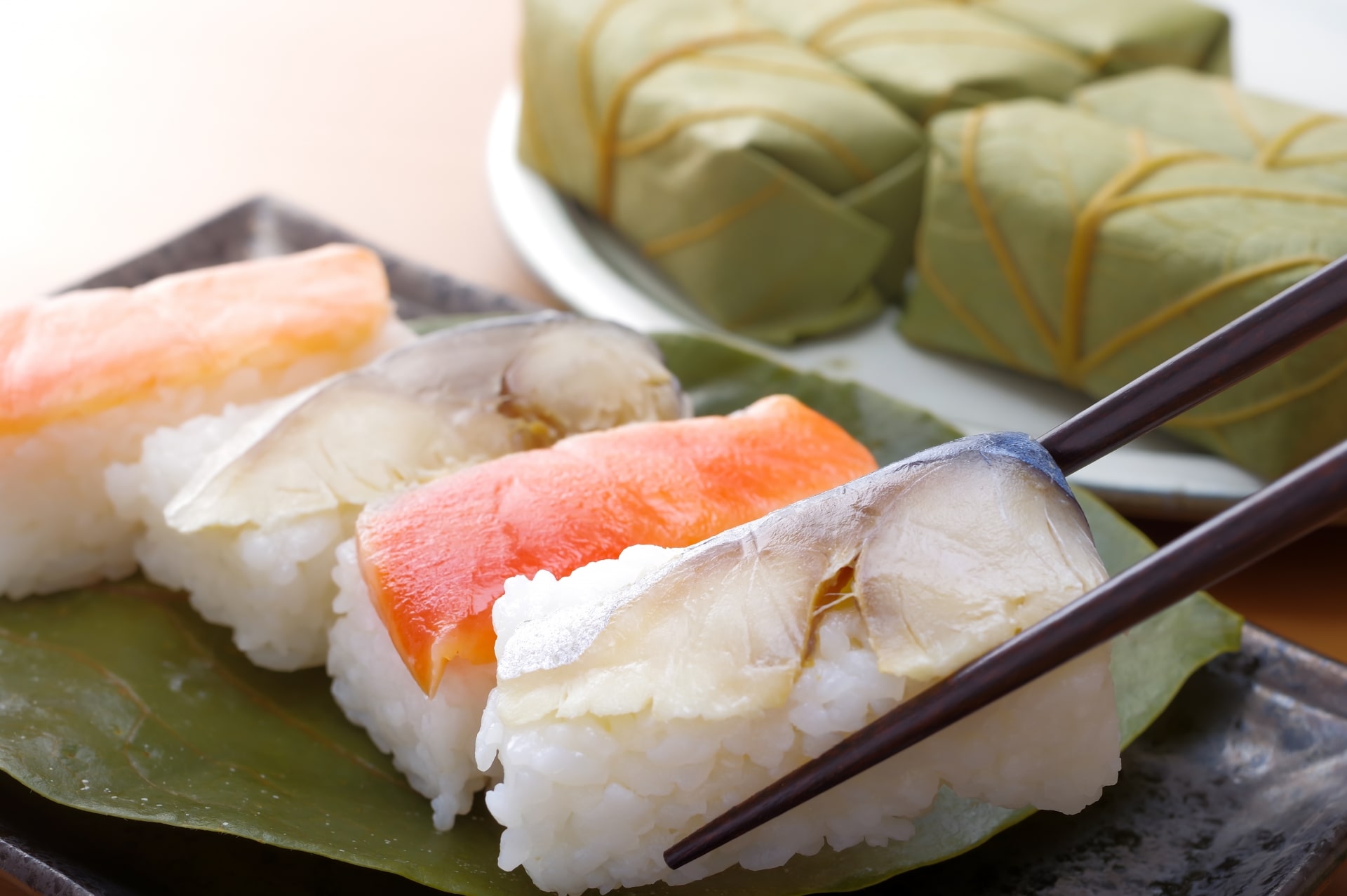
Depending on your pace, either after Todaiji Temple or after Kasuga Taisha Shrine will be a good time to have lunch. You won’t find many restaurants deep into Nara Park, but various places are near Kofukuji Temple.
Pretty much anything you find in this area will be delicious, but if you would like to experience Nara food, you may want to look for Kakinoha Zushi (柿の葉寿司). This is a delicacy that originated in Nara involving pressing sushi rice and toppings like mackerel or salmon into a compact shape and then wrapping it in a fragrant persimmon leaf. You can also purchase this to take back to Kyoto!
5. Kasuga Taisha Shrine (40-60 mins)
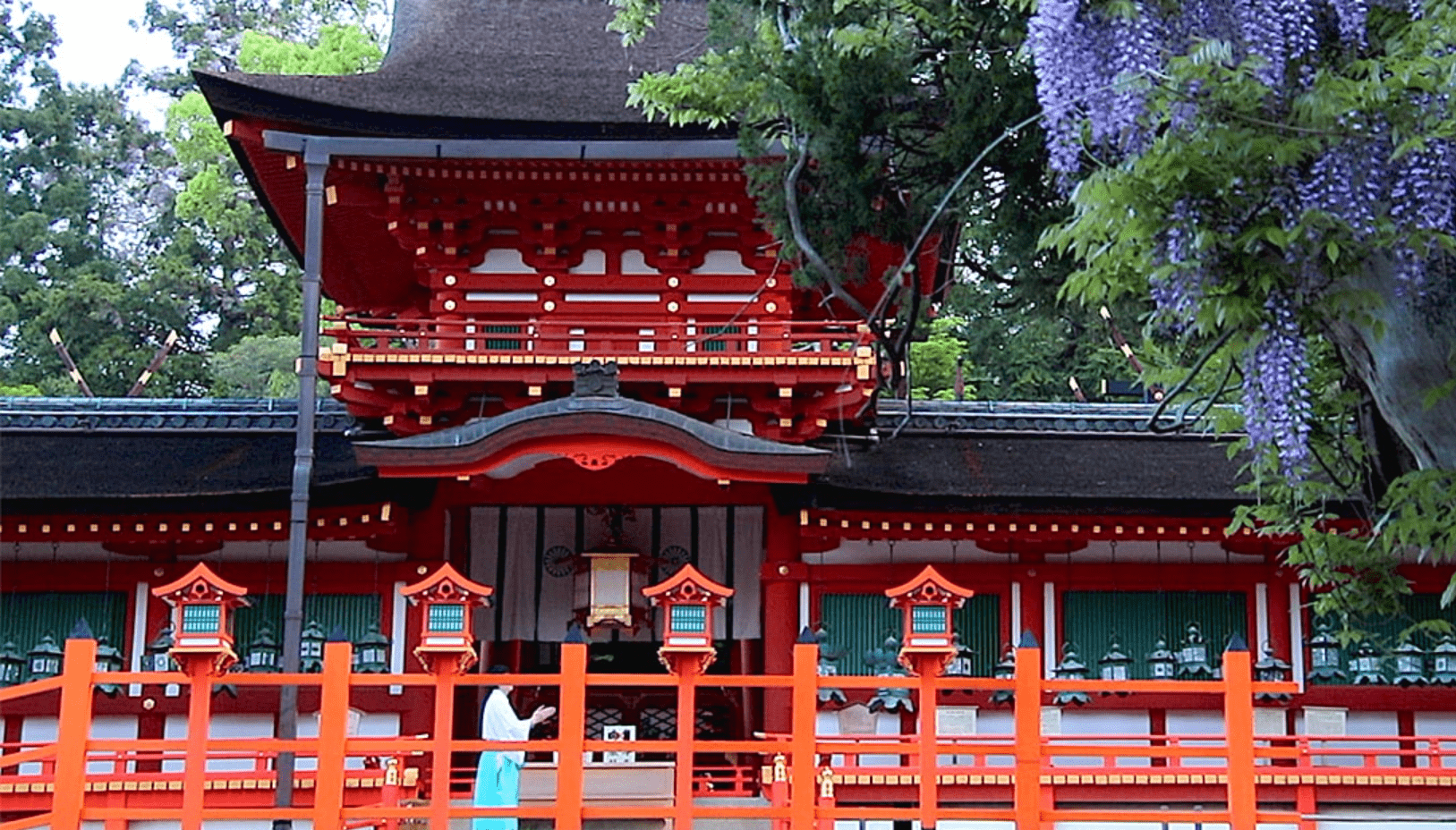
After Todaiji Temple (or lunch), we head even further into Nara Park to get to our next destination. Kasuga Taisha Shrine (春日大社) , established during the Nara period, is also part of the World Heritage Site, “Historic Monuments of Ancient Nara.” It is famous for hosting over 2,200 festivals annually, wishing for the peace and prosperity of the nation and its people.
The shrine, revered as the head of around 3,000 Kasuga shrines nationwide, is known for its striking vermillion structures within its precincts. A key attraction is the approximately 2,000 stone lanterns lining the approach and 1,000 hanging bronze lanterns around the main buildings and corridors, creating a mesmerizing sight.
Kasuga Taisha has long considered deer as sacred messengers, which is why the free-roaming deer in Nara Park are protected. The “Shiroshika-mori” talisman, featuring a white deer, is also a popular keepsake.
Check out more about this shrine from the following link!
▶Kasuga Taisha Shrine: a World Heritage Shinto Shrine in Nara
6. Gangoji Temple (15-30 mins)
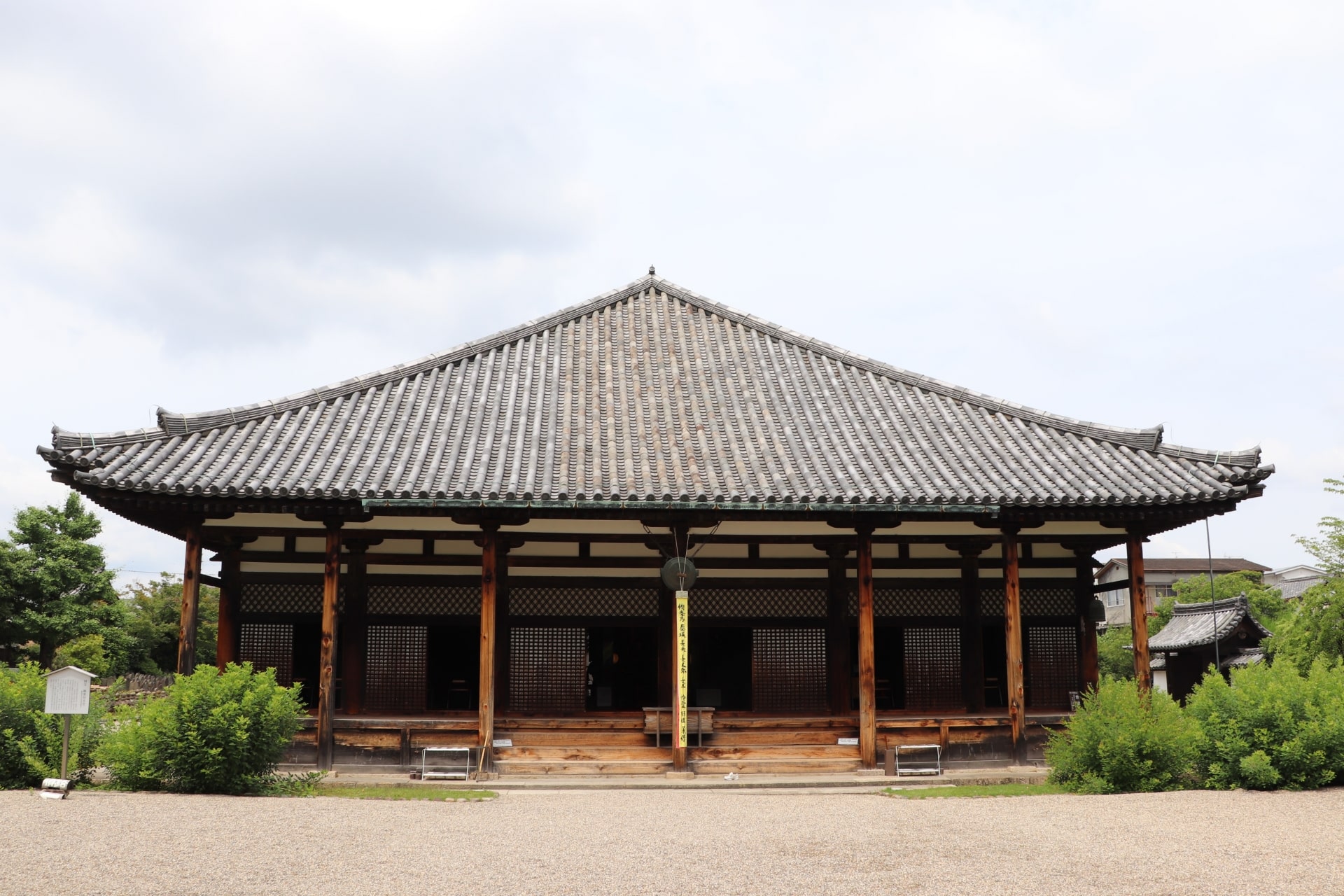
Heading west from Kasuga Taisha Shrine, we get out of Nara Park and enter the Naramachi area. After about 25 minutes walk, you will arrive at Gangoji Temple (元興寺) . Flourishing alongside Todaiji and Saidaiji as one of the “Nanto Shichi Daiji” or the Seven Great Temples of Nanto, Gangoji Temple is a World Heritage Site in Nara.
Established in 718 AD, it traces its origins to Asukadera, Japan’s first Buddhist temple, built during the Asuka period (from late 6th to early 8th century). When the capital moved to Heijo-kyo (modern Nara), the temple was relocated and renamed Gangoji.
The temple, with a history of about 1300 years, features the Gokurakudo Hall (極楽堂), notable for its use of Asuka-era wood. Remarkably, some original roof tiles from before the relocation are still in use, making them among the oldest in Japan.
7. Explore Naramachi
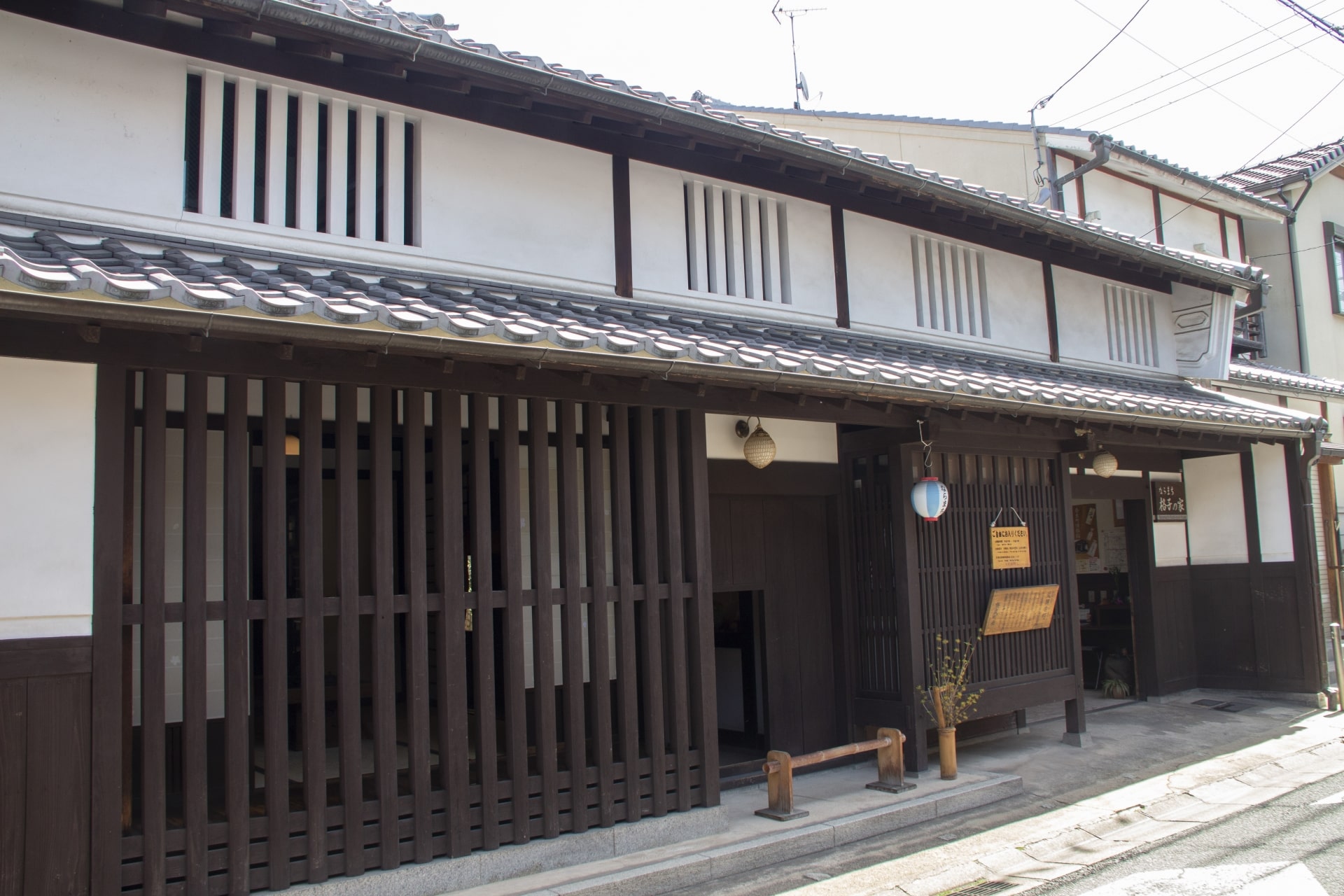
Naramachi (ならまち) , centered around the former precincts of the World Heritage Site Gangoji Temple, is a delightful area known for its historical charm. This district features narrow streets lined with traditional Edo-era wooden machiya townhouses, many of which have been repurposed into museums, unique gift shops, guesthouses, and inviting traditional restaurants.
As visitors wander through the alleys and hidden pathways, they’ll discover a mix of quaint and nostalgic scenes. Retaining many old townhouses from the Edo to Meiji periods, Naramachi also boasts contemporary attractions like the “Shika Saru kitsune Building (鹿猿狐ビルヂング)”, offering a variety of dining and shopping experiences, and the traditional “Naramachi Lattice House (ならまち格子の家)” which has been high -rated in Tripadvisor.
You’ll see many trendy cafes, nice gift shops, and a variety of restaurants. It’s a nice way to spend the rest of the afternoon before having dinner.
8. Have dinner in Naramachi
While you’re in Naramachi, you will find a wide variety of restaurants from where to choose to have dinner. You will find pretty much anything in this area. From Ramen or Sushi restaurants to more traditional Kaiseki restaurants. Be sure to make reservations in case you’re planning on going to a famous restaurant, though.
Head back to Kintersu Nara Station (End)

After enjoying your dinner, it is time to head back to Kintetsu Nara Station to take the train back to Kyoto.
One thing you should remember is that although there are trains until around 22:00 or 23:00, the giftshops will close relatively early (around 19:00 or 20:00). So my suggestion is that either you have an early dinner so that you can get to the station to look for souvenirs or you look for souvenirs while your time at Naramachi.
Either way, Nara has many unique souvenirs, so it is worth taking some time to check out these shops!
The train back to Kyoto will be the Kintetsu Kyoto Line Express (近鉄奈良線特急). Depending on the time you take this train, you might need to change trains midway at Yamato-Saidaiji Station (大和西大寺駅), which will take a little less than an hour. If not, the ride takes about 35 minutes.
I hope you enjoyed this itinerary plan I created. If you did, you can incorporate this itinerary into your Kansai trip! Check out the following article for a 1-week itinerary across Osaka, Kyoto, and Nara!
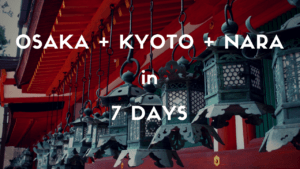
As I mentioned, this itinerary will take lots of walking. If you want to get to know Nara without walking as much, taking a tour may be the thing for you. Here are some tours you might be interested in taking.
<<Book Online: Todaiji Temple, Sake Tasting, & Craft Beer>>
<<Book Online: Kakinoha Zushi, Sake Tasting, Craft Beer, & Mochi>>
<<Book Online: Nara Afternoon Tour from Kyoto>>
Check out the following articles for more information about Nara and its surrounding area!
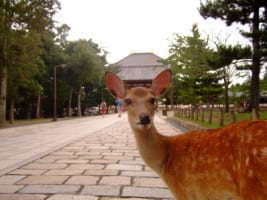
▽Related Articles▽

▼Editor’s Picks▼
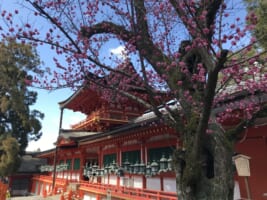
Born and raised in Costa Rica, I started living in Tokyo from college. I love traveling within Japan & around the world. Since I wasn’t born in Japan, I know the cultural impact that you can get when visiting Japan for the first time and what you might be worried about before your trip. And I’ve lived long enough to somewhat understand the nuances of the Japanese culture that make this country such an attractive place to visit. Hopefully I can provide to you both the information you’re looking for and the information you didn’t know you needed to know.
- Top Destinations
- Mexico City, Mexico
- Tokyo, Japan
- Paris, France
- Rome, Italy
- London, United Kingdom
- All Destinations
- Upcoming Experiences
- Private Walking Tours
- Small-Group Tours
- Tours for Kids
- Museum Tours
- Food, Wine and Market Tours
- Newly Added Tours
- Audio Guides
- Pre-Trip Lectures
- Admin Dashboard
- My Experiences
- My Favorites
- Cookies Preferences
- Client Orders
- Monthly Commissions
- My Advisor Profile
- Advisor Toolkit
- Guide Dashboard
Credit Balance
Transactions are based on current exchange rates and performed in USD. There maybe slight variations in the price estimates.
Nara Day Trip from Kyoto

Kasuga Shrine
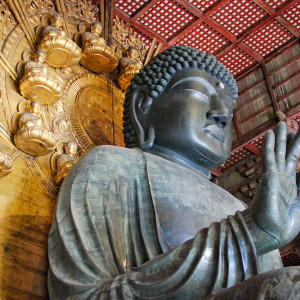
- Day trip to Nara led by an expert in Japanese history and religion
- Explore Nara's historic temples and shrines
Nara Tour - Cradle of Japanese Culture
The giant buddha.

Reviews can only be left by Context customers after they have completed a tour. For more information about our reviews, please see our FAQ .
You May Also Like

Half-Day Kamakura Day Trip from Tokyo
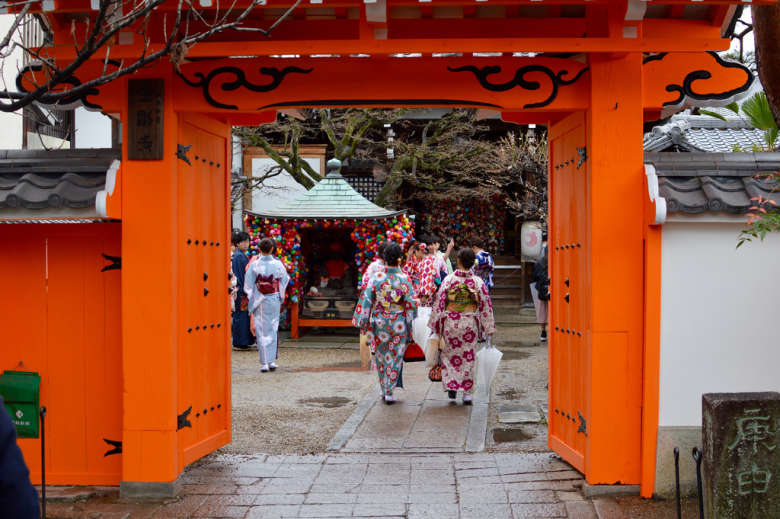
Spirituality in Kyoto Tour: Shinto & Buddhism
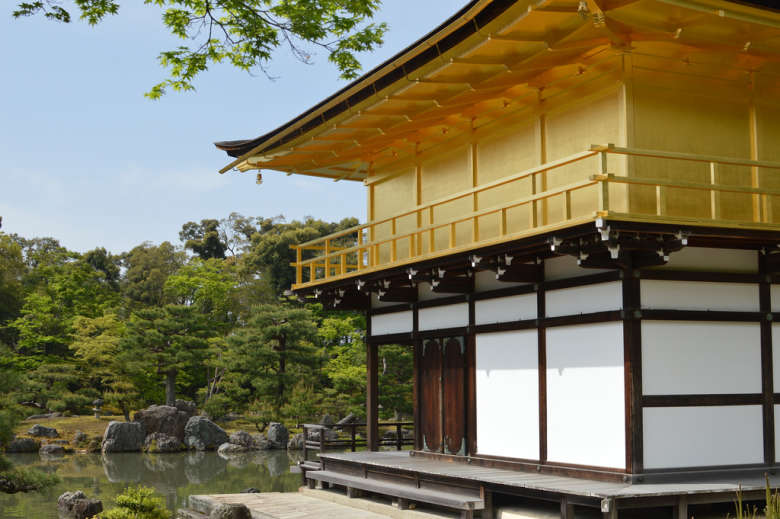
Kyoto Garden Tour: The Golden Pavilion and Ryoan-ji
Book a tour.
- Our Experts
- Working with Context
- View All Cities
- Sustainable Tourism
- Refer a Friend for $50
- Travel Updates
- Advisor Login
- Expert Portal
Subscribe to our Newsletter
- Privacy Statement & Security
- Cancellation Policy

A Kyoto to Nara Day Trip Guide
By: Author Charles
Posted on February 2, 2023
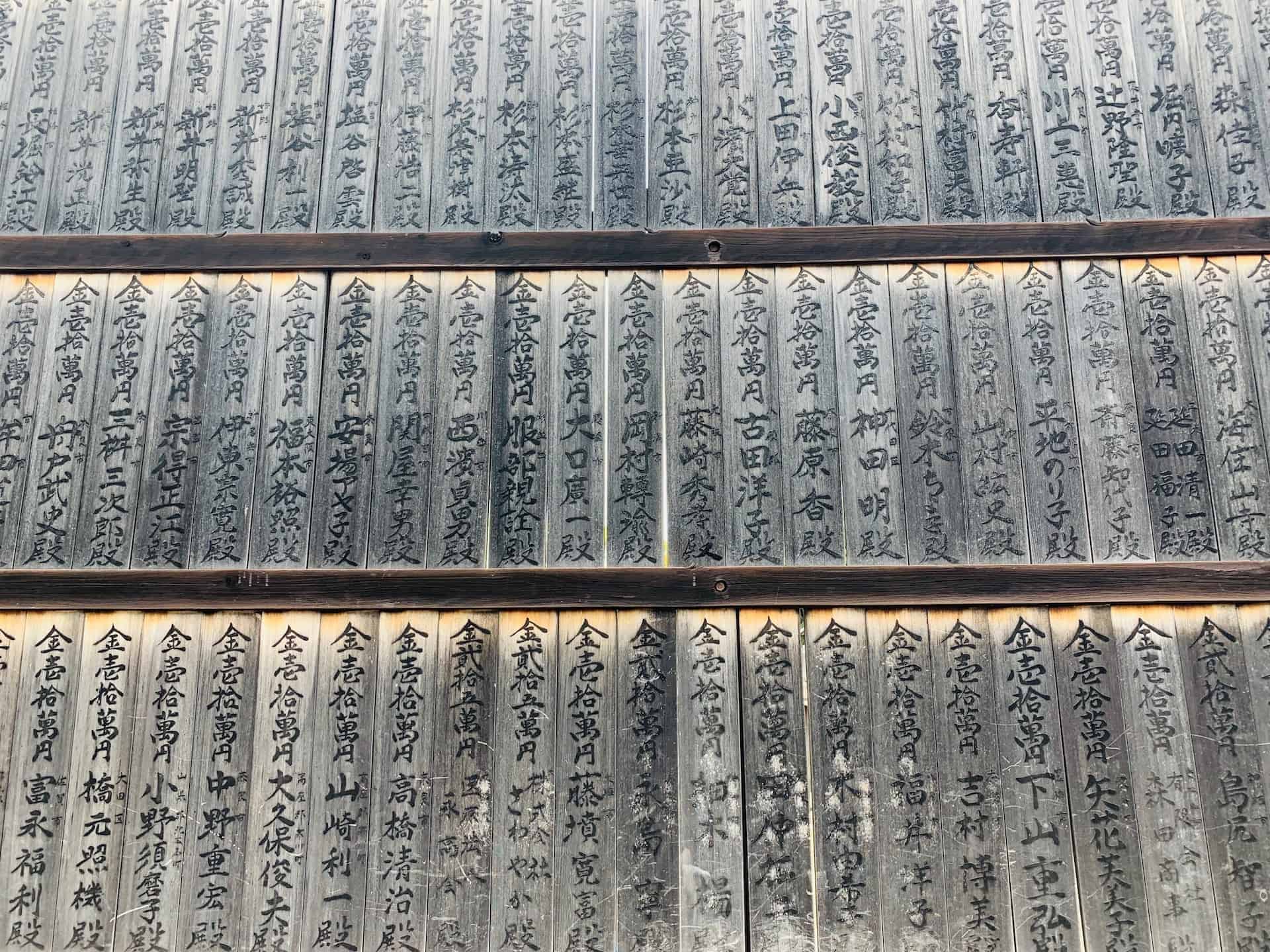
One thing I love about Japan is the opportunity to choose from easily accessible day trip options around the country. Even if you are staying in one city, you still have the possibility to visit several other cities throughout your time there.
One of these options is to the beautiful city of NARA.
It is popular option for those that are staying in either Kyoto or Osaka, as it is just a quick train ride away. This guide will go over what a Nara day trip entails and how to put together the best Nara itinerary possible when visiting Japan.
* Affiliate Disclosure : This post may contain affiliate links, which means I may receive a commission if you make a purchase through the links provided, at no additional cost to you. Thanks for supporting the work I put into TripTins!
1) Why Nara?
So, you might have heard of Nara before but what is it all about? Although Nara is just a small city between Kyoto and Osaka, it has so much to offer its visitors.
You want temples? Parks? Viewpoints? Gardens? Mochi? Deer? Well, you guessed it, Nara has ALL of that and more spread throughout the city. It really is a unique place to visit and you will not regret adding it into your itinerary.
In addition to Nara just being a quick 45-60 minute train ride from Kyoto and Osaka, it is also a place where you can spend as much or as little time as you would like exploring.
Since many of its attractions are not too far from each other, you can pick and choose which ones are best for you.
During my Nara day trip, I spent about 5-6 hours roaming the city and its various attractions. But if you are short on time, you can easily just spend a couple hours there too.
The below one day Nara itinerary will go about the day the same way I took part of my trip. If something does not seem of interest to you, go ahead and skip it (although you might regret it!) to save some time.
At the end of the day though, I have a hard time believing you won’t have a great time exploring the ins and outs of Nara, Japan.
2) How to Get to Nara
As mentioned previously, getting to Nara is super easy and quick if coming from Kyoto or Osaka. The train ride from either one is just about 45-60 minutes (depending on train routes) and there will be plenty of options to choose from throughout the day.
You will find trains going there and coming back every 30 minutes or so, giving you nothing to worry about when planning your day trip.
When looking up timetables check out the Hyperdia website for the latest schedules and prices. In Nara there are actually two different train stations to choose from – Nara JR Station and Kintetsu Station .
Either one works as they are only a 10 minute walk from one another (Kintetsu is the closer of the two to Nara’s attractions).
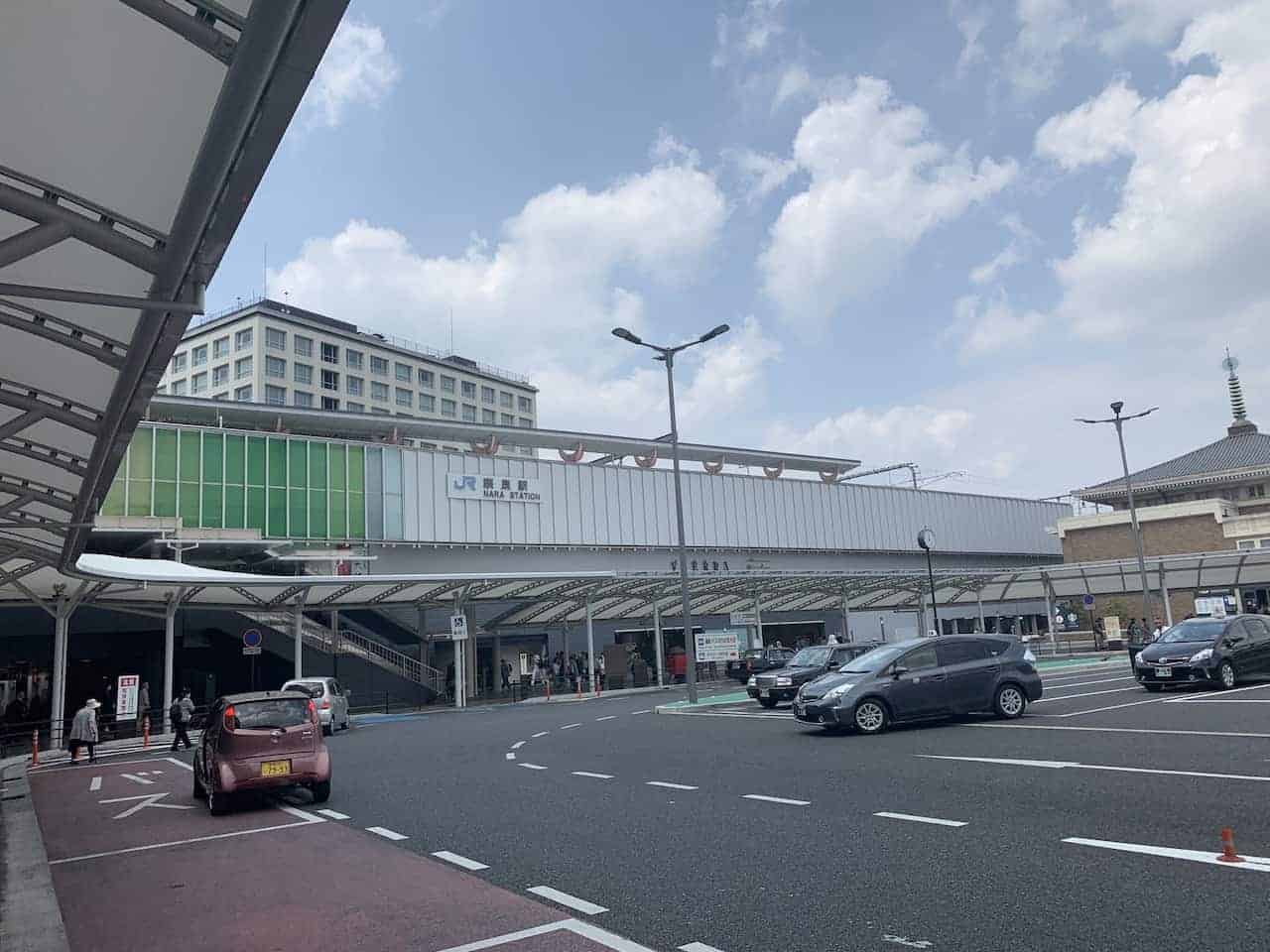
JR Pass Note: if you have a JR Pass you will want to only use Nara JR Station as the train line to Kintetsu Station is not a JR run line.
You will not need to pay anything if going to/from Nara JR Station as the trains would be included in the pass. To learn more about the JR Pass take a look at the Japan helpful travel tips article I have up on the site.
A. From Kyoto to Nara
Nara jr station.
Rapid Service: 45 Minutes; 710 JPY Local Service: 60-75 Minutes; 710 JPY
Kintetsu Station
Limited Express Service: 35 Minutes; 1,130 JPY Express Service: 45 Minutes; 620 JPY

B. From Osaka / Osaka Namba to Nara
Rapid Service: 50 Minutes; 800 JPY
Limited Express Service: 35 Minutes; 1,070 JPY Express Service: 40 Minutes; 560 JPY
Note when coming from Osaka to Nara that there are options from both Osaka and Osaka Namba station.
3) How to Get Around Nara
Well this one is really up to you. During my time in Nara I did not use any sort of transportation beyond my own two feet .
I walked from the train station to all the attractions mentioned below, before walking all the way back at day’s end.
Calculating it all up, the distance for the day would be just about 5 Miles / 8 KM or 1:45 of walking time (that is from/to Nara JR Station and it does not include the Mount Wakakusayama hiking trail). While that is definitely doable depending on your energy levels, I know that much walking may not be for everyone.
One way to cut a good 30-45 minutes out is to take a Nara bus at day’s end from Kasuga Taisha (more on that later on) to the train station. It would cost just 100 JPY and it will save you some time and energy at the end of the day.
Beyond that last part (Kasuga Taisha to the station), the average distance between attractions is only about 10 minutes, so you will not need to worry too much about long walking times.
The day is nicely broken up with attractions spread out throughout the city, and you should have a fun filled day exploring it all.
Note: You also have the option to buy a 1 day bus pass for 500 JPY that covers the main area. In addition to that you can get a 1 day pass bus pass + the train rides on the Kintetsu Line for 1,500 JPY (from either Kyoto or Osaka).
4) Nara Attractions
Below are the attractions that are part of this one day Nara itinerary.
The day will start towards the west at either Nara Station (JR) or Kintetsu Nara Station, and you will then make your way east through the main street and onto the temples, parks, gardens and viewpoints that Nara has to offer. The route will take you to:
1. Sanjo-dori Street & Nakatanidou Mochi Shop
2. Kofukuji Temple
3. Nara Park
4. Yoshikien or Isuien Garden
5. Todaiji Temple Complex
6. Nigatsudo and Hokkedo (part of Todaiji)
7. Mount Wakakusayama
8. Kasuga Taisha
Depending on your schedule (what time you start/end your day) you can either get lunch on the main street (Sanjo-dori) at the beginning or end of your trip, or you can also find some restaurants in the Todaiji temple complex.
5) A Nara Day Trip
Now that you have some more insight into how to get to Nara and some of the different attractions that the city has to offer, it is time to dive a bit deeper into what a Kyoto to Nara day trip entails.
After hopping off the train make your way to Sanjo-dori Street, where you will find the famous Nakatanidou Mochi Shop.
A. Sanjo-dori Street & Nakatanidou Mochi Shop
Sanjo-dori will be your main option when it comes to food and shopping options in Nara. You can either spend your time at the beginning or end of your day exploring all around the area.
Whatever you decide though, be sure to stop at the one and only Nakatanidou Mochi Shop. Besides for selling some delicious mochi, you can also witness the mochi making process right in the front of the shop.
It was quite entertaining seeing these two workers pounding away at the mochi batter with their hands and hammer. They do not do this constantly throughout the day, so if you arrive there and want to see them in action, be sure to hang around for a bit.
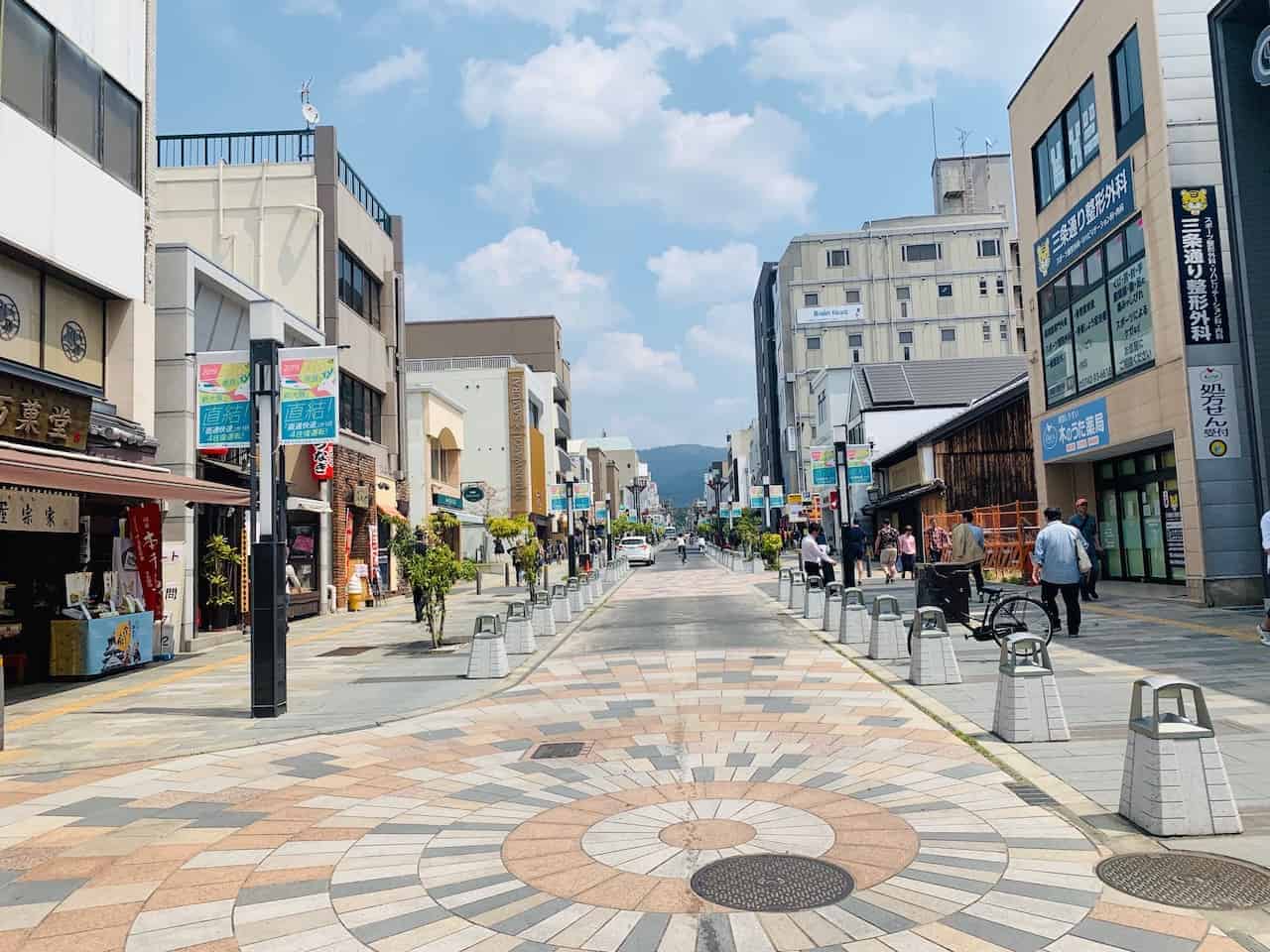
B. Kofukuji Temple
Temple Hours : Grounds area open 24 hours; National Treasure Museum and Eastern Golden Hall 9:00AM – 5:00PM Admission Fees : Grounds area is free; 500 JPY (Central Golden Hall); 700 JPY (National Treasure Museum); 300 JPY (Eastern Golden Hall)
After spending some time eating some mochi and seeing how it is made, continue along to your first attraction of the day – Kofukuji Temple (if you decide to save Sanjo-dori Street for later on, you can just head straight through the street to Kofukuji).
This historic temple complex was built all the way back in the year 710 and has been reconstructed throughout the years.
As you walk around the Kofukuji area, you are sure to pass by a few of the main structures including the Central Golden Hall and famous Five Storied Pagoda.
To walk around the complex is free of charge but if you would like to enter any of the halls you must pay the fees mentioned above. Even if you do not head into the halls themselves, taking it all in from the outside will be very enjoyable.
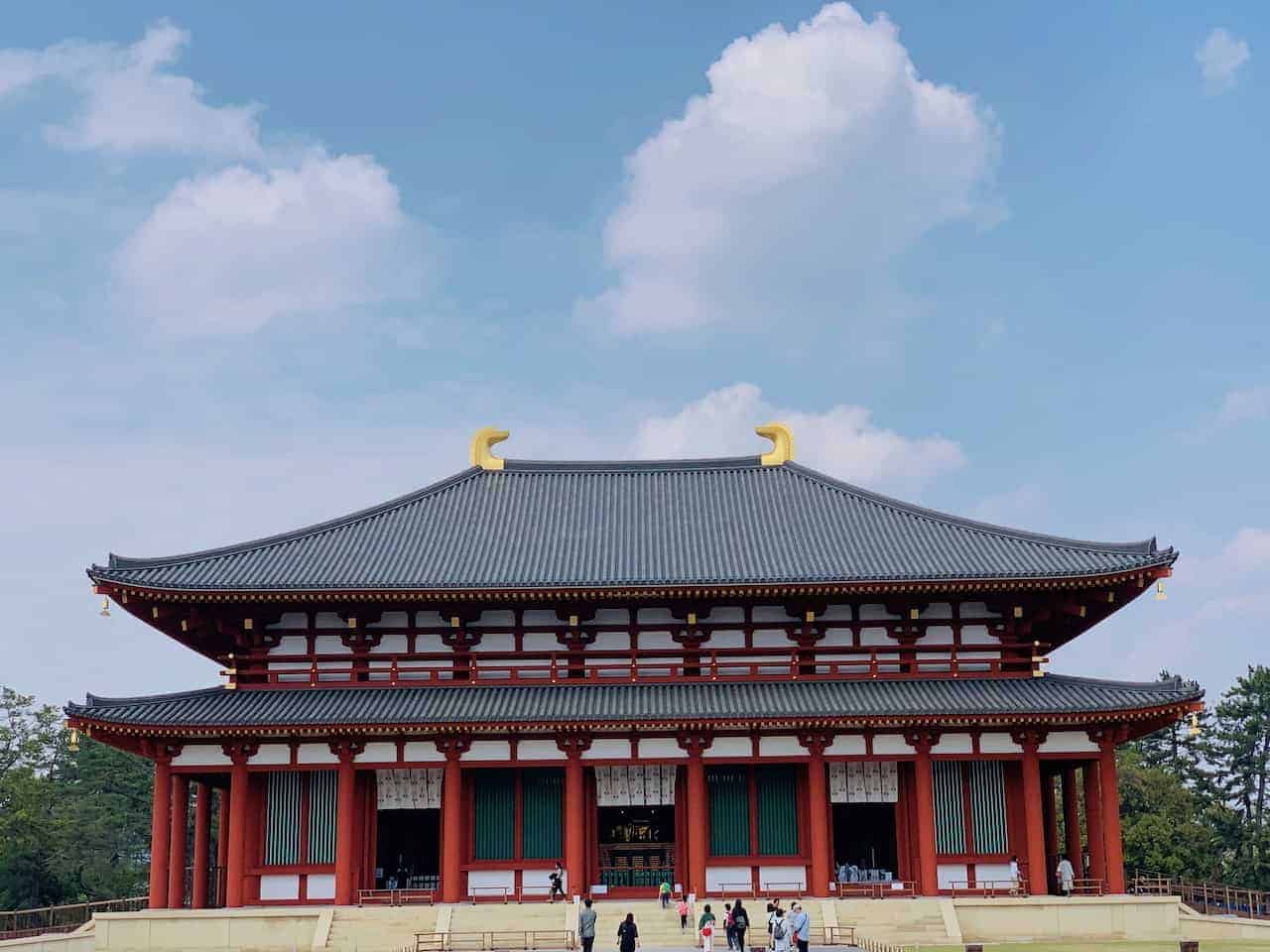
C. Nara Park
Shortly after exiting the main Kofukuji area, continue walking along to Nara Park (technically you will already be in Nara Park as it makes up a great deal of land but you will come across a more open area nearby).
You will know you are entering the main park area when you begin to see the hundreds of deer roaming all around.
The deer of Nara are everywhere and this will be your first opportunity to get up close and personal to them.
If you want, you can buy some treats for the deer from the nearby vendors and feed them yourself. For the most part, the deer are friendly and just are hanging out and enjoying the area just like you!
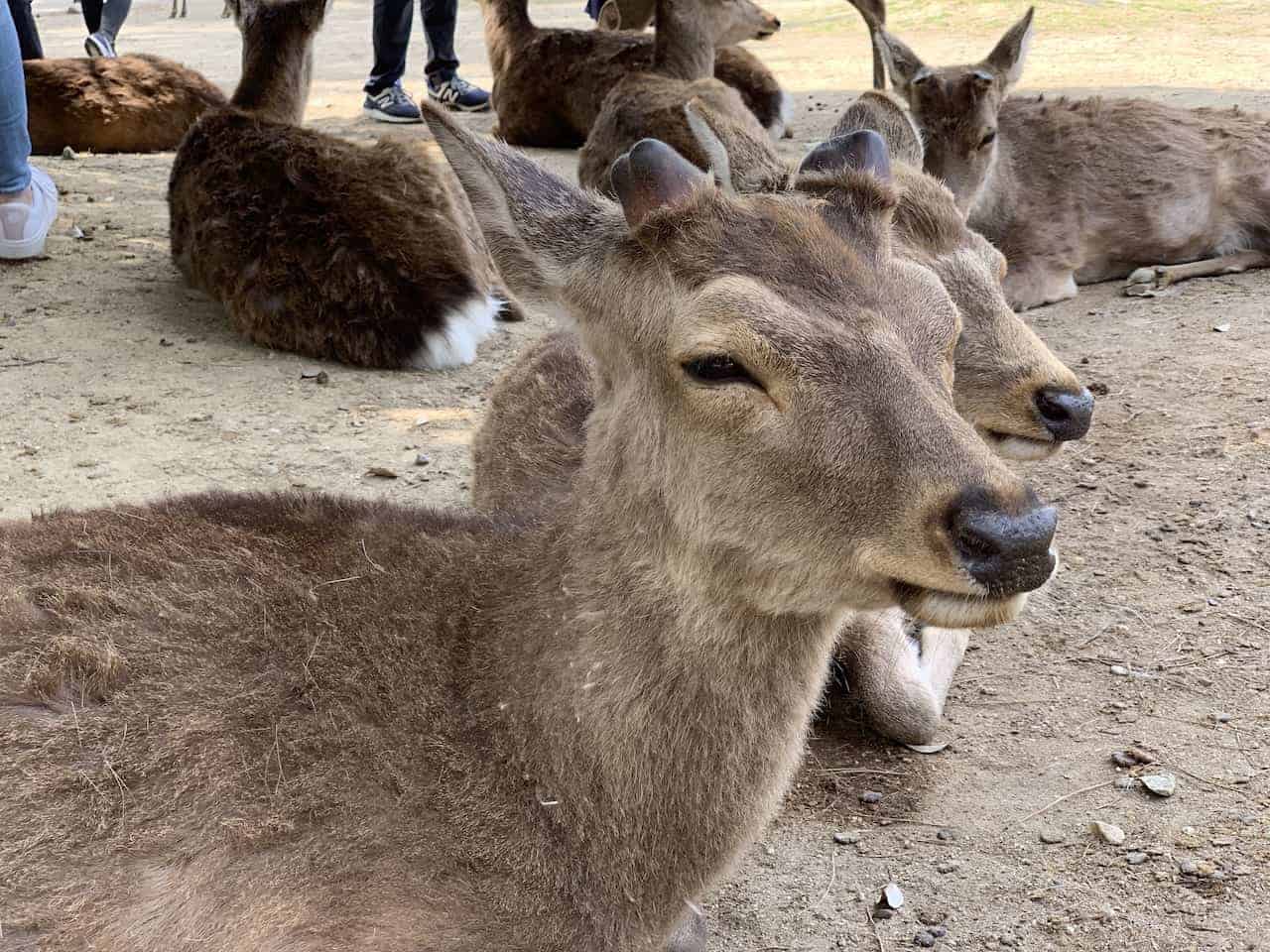
D. Yoshikien or Isuien Garden
Temple Hours : Yoshikien 9:00AM – 5:00PM; Isuien 9:30AM – 4:30PM (closed Tuesdays except in April, May, October, November) Admission Fees : Yoshikien Free for Foreigners; Isuien 900 JPY
Once you had enough time walking alongside Nara’s deer, it is time to head to one (or both) of Nara’s gardens – Yoshikien and Isuien. Coming from Kyoto, I am sure you have seen your fair share of gardens as part of larger temple complexes. If you want to see what Nara has to offer now is your chance.
I was not initially planning on heading to the gardens but I realized that Yoshikien is actually free for foreign visitors so why not right? You can make the loop around, taking in the greenery, ponds and wildlife sprawled throughout.
Note: I did not head into Isuien but hear very good things – do note the entrance fee though.
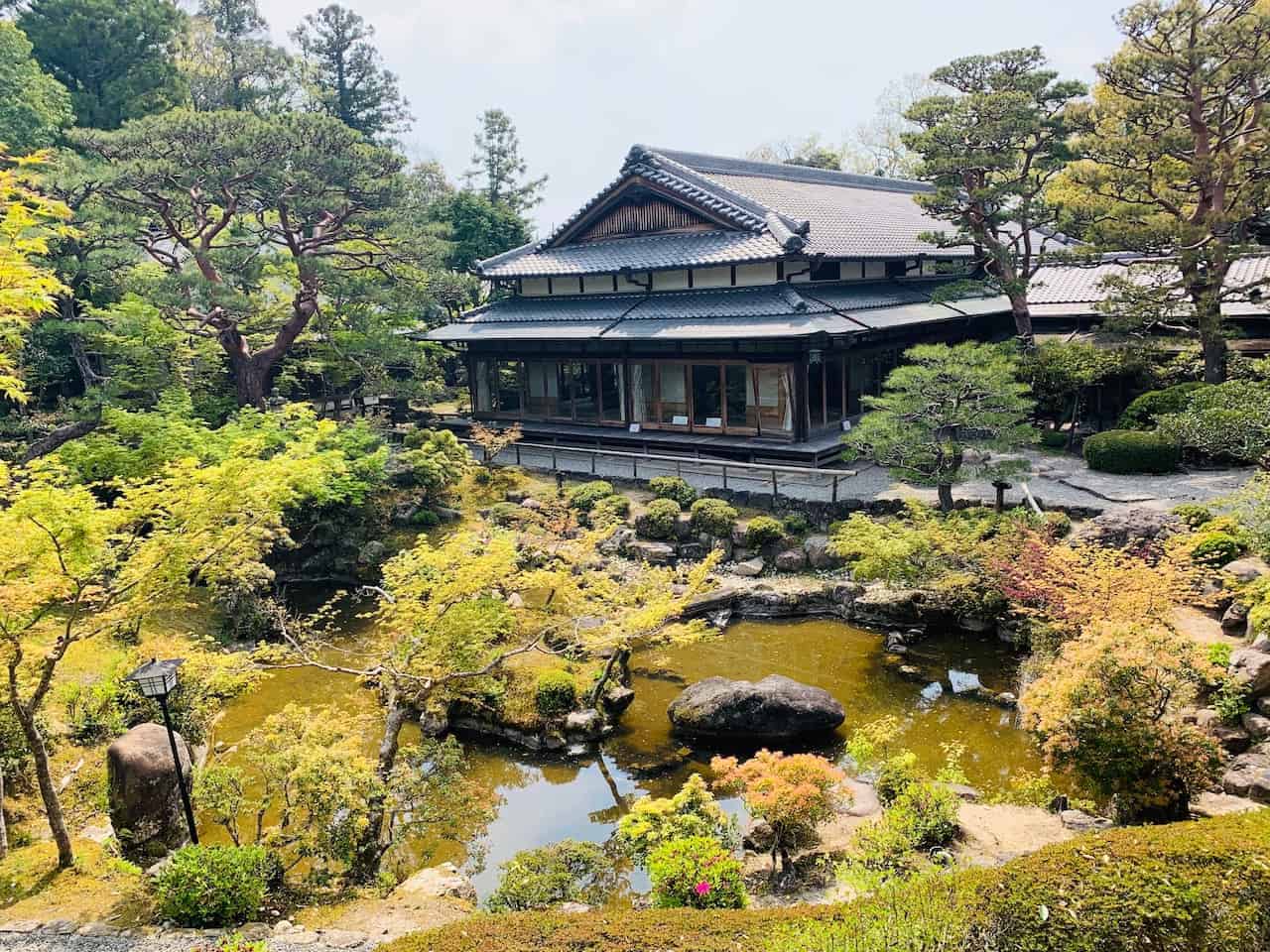
E. Todaiji Temple Complex
Temple Hours : 7:30AM – 5:30PM (April to October) / 8:00AM – 5:00PM (November to March) Admission Fees : 600 JPY (Great Buddha Hall)
One of the highlights of Nara is its massive Todaiji Temple Complex. There are a variety of buildings and structures sprawled throughout the complex but the main draw here is the Great Buddha Hall itself – the largest wooden building in the world, which houses one of Japan’s largest bronze Buddhas!
From the gardens, first make your way to the Great South Gate (Nandai-mon), where you can then walk through the main entranceway.
If you want to head closer to the Great Buddha Hall, you must pay the entrance fee. If not, the furthest you can go is the gate right outside the Buddha Hall complex.
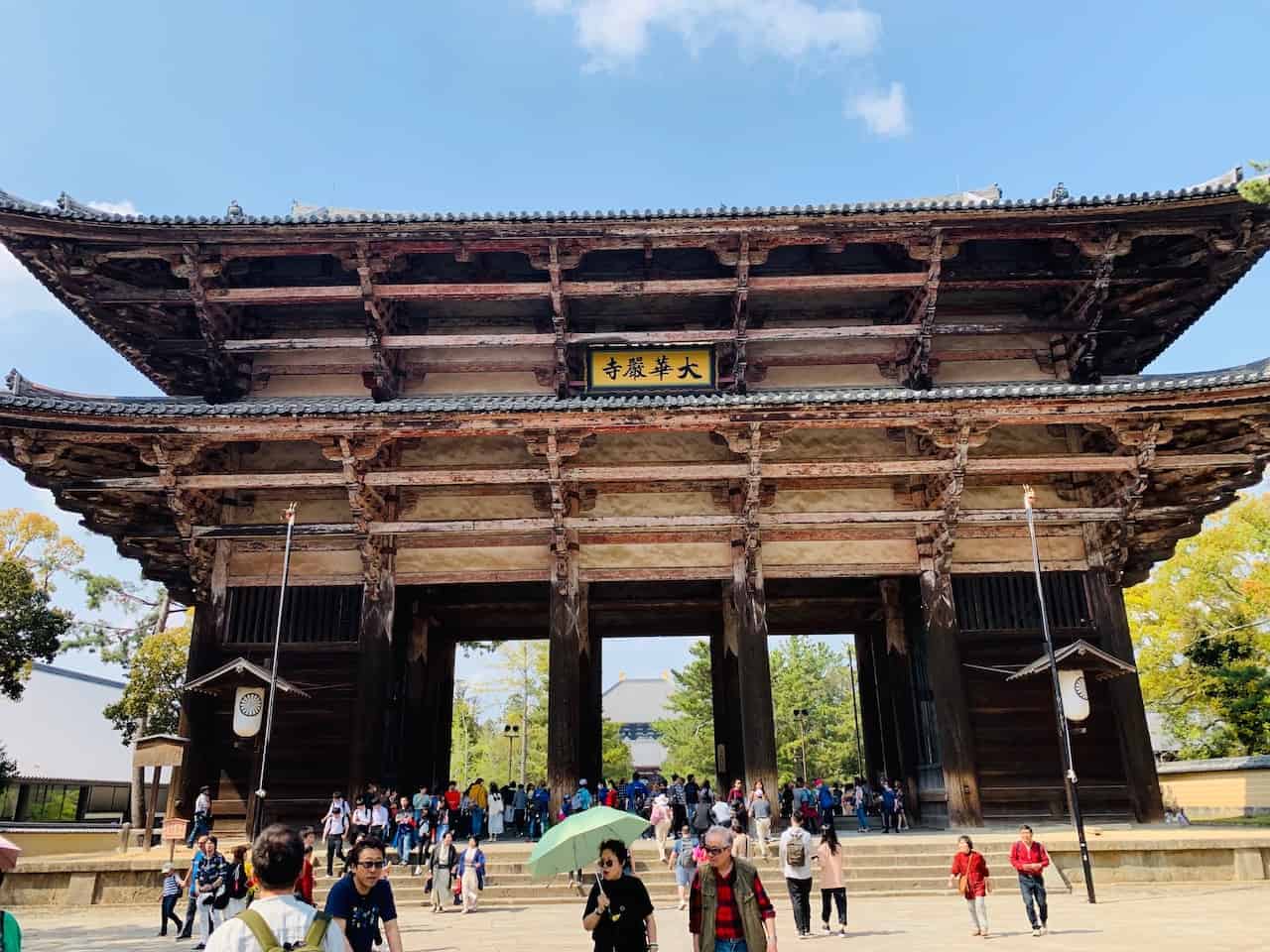
Note that there are many other buildings part of the complex (two of which I mention next). Feel free to explore as much or as little as you would like when making your way around the area.
F. Nigatsudo and Hokkedo (part of Todaiji)
Temple Hours : Nigatsudo 24 Hours; Hokkedo 7:30AM – 5:30PM (April to October) / 8:00AM – 5:00PM (November to March) Admission Fees : Nigatsudo Free; Hokkedo 600 JPY
After taking in the largest wooden building in the world, continue the walk along to Nigatsudo and Hokkedo, which are both still technically part of the larger Todaiji complex. Nigatsudo is free to enter and you can head up top to take in some great views of the city down below.
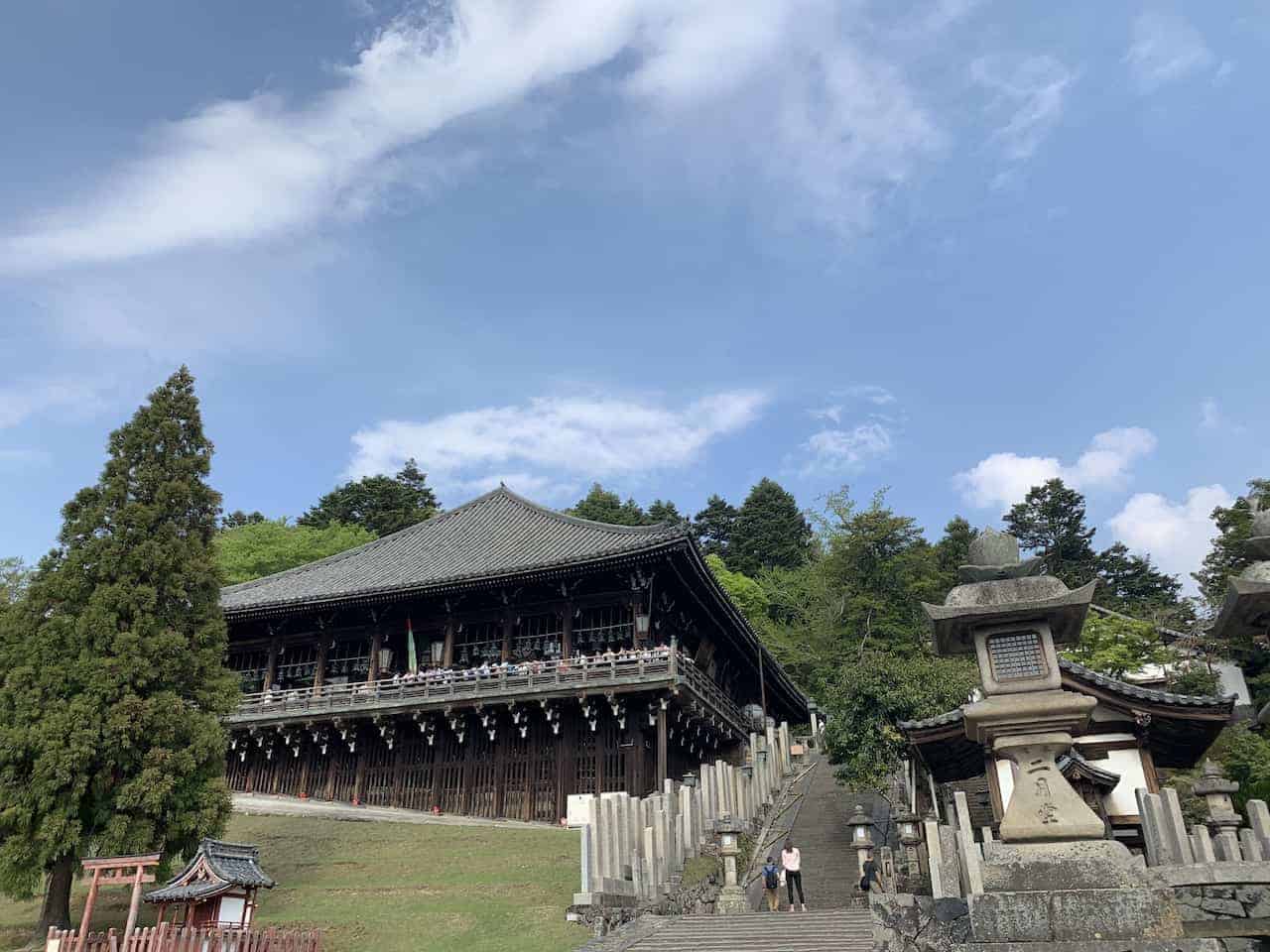
Note here that there are some small restaurants nearby if you would like to have some lunch around the area.
G. Mount Wakakusayama
Mountain Hours : 9:00AM – 5:00PM; Open from third Saturday in March until second Sunday in December Admission Fees : 150 JPY
After enjoying the Todaiji complex (and grabbing some food if you decided to), continue the walk towards the highest part of Nara – Mount Wakakusayama.
There are a few different entrance points to Mount Wakakusayama, but as you make your way south (towards Kasuga Taisha – the last stop on the day), you will see an entrance point up the mountain.
From here you can head up and then continue the loop around the other side so you will end up closer to Kasuga Taisha once at the bottom.
Mount Wakakusayama also has a few different lookout points – the first one is about a 20 minute walk up and is the most popular but then you can continue the walk for another 10-20 minutes to get to the very top with some other stop off points along the way.
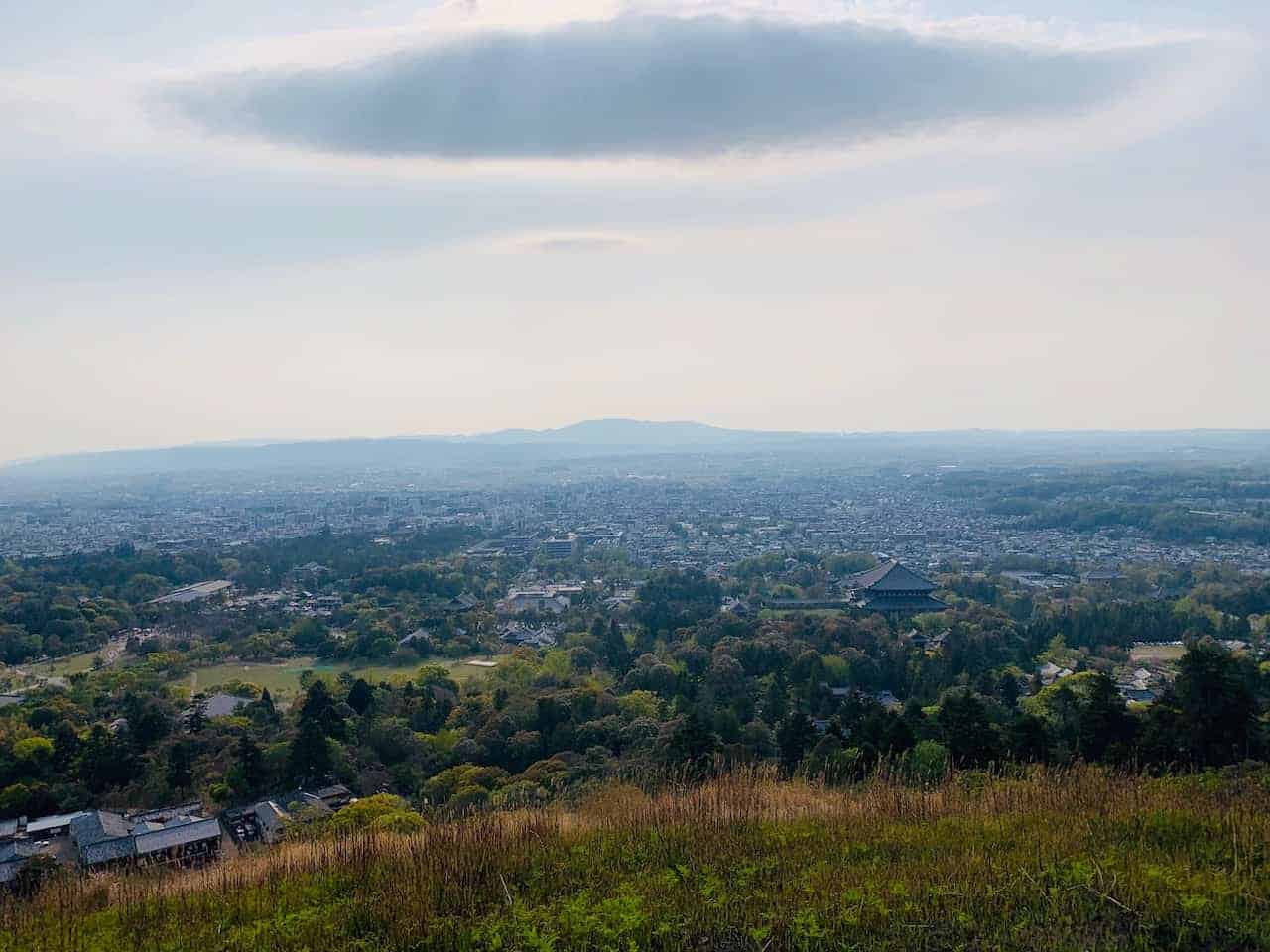
Once complete with Mount Wakakusayama, head on down the mountain (you can continue the loop from the first lookout point), and onto the final stop of the day – Kasuga Taisha.
H. Kasuga Taisha
Temple Hours : 6:00AM – 6:00PM (April to September); 6:30AM – 5:00PM (October to March); Inner Temple Area 8:30AM – 4:00PM Admission Fees : 500 JPY for Inner Temple Area ; Outside Area is Free
After getting your hiking in for the day, make your way to Kasuga Taisha. What makes Kasuga Taisha different than many other temples you may come across, are its hundreds of thousands of lanterns lining the pathways and inner temple complex.
They have a variety of gold, bronze, and stone lanterns all around, and it is quite a site to be seen. You are able to walk most of the complex for free but if you do want to enter the inner temple, you will need to pay the fee.
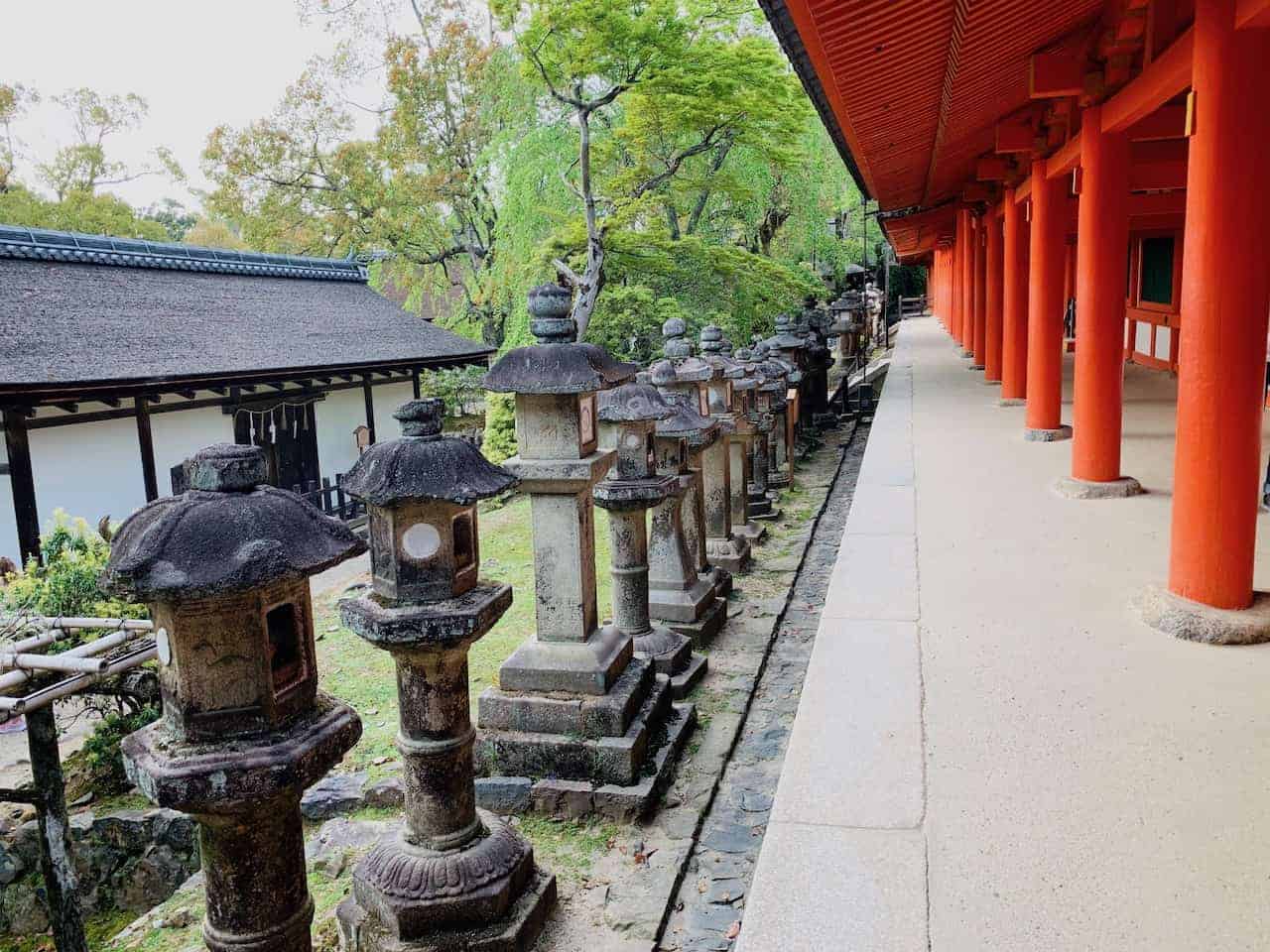
Once your time at Kasuga Taisha is all finished up, it is time to make your way back to the train station to end your day (or to Sanjo-dori Street to enjoy some food and shopping).
As I mentioned earlier on in the Kyoto to Nara day trip guide, this is a longer walk – 40 minutes or so. You can shave off some walking time by catching a bus towards the main street or train station(s).
As your time in Nara comes to a close, head back to Kyoto (or Osaka) from either Nara JR or Kintetsu station and end a successful day enjoying this one of a kind city.
From its temples and shrines to its viewpoints and deer (and mochi!), you are sure to enjoy your time here.
6) Where to Stay in Kyoto
If taking part of this Kyoto to Nara day trip you will need to find a place to stay while visiting Kyoto. While there are many different neighborhoods to choose from I would recommend staying near the downtown Kyoto area.
Here you will find plenty of accommodation options at various price points alongside all the restaurant and shopping you can imagine.
It also offers easy accessibility to visit all other parts of Kyoto either by bus or by subway. Below are some mid range and luxury options all within walking distance from downtown (a few being a 20 minute or so walk).
Also be sure to check out the 3 day Kyoto itinerary up on the site to help you out with your time in the city.
1. The Royal Park Hotel Kyoto Sanjo
2. Hotel Grand Bach Kyoto Select
3. Kyoto Granbell Hotel
4. Super Hotel Kyoto Shijokawaramachi
5. Nest at Nishiki Kyoto
1. Hotel Alza Kyoto
2. Kizashi The Suite
3. The Ritz Carlton Kyoto
4. Hotel The Celestine
5. Mitsui Garden Hotel Kyoto Shinmachi Bettei
There are plenty of other city guides that I put together including Tokyo , Hakone , Kanazawa , Takayama and plenty of others!
Take a look at some of the other Japan itineraries and guides up on the site and if you have any questions or comments feel free to write them in below! Have fun out there!
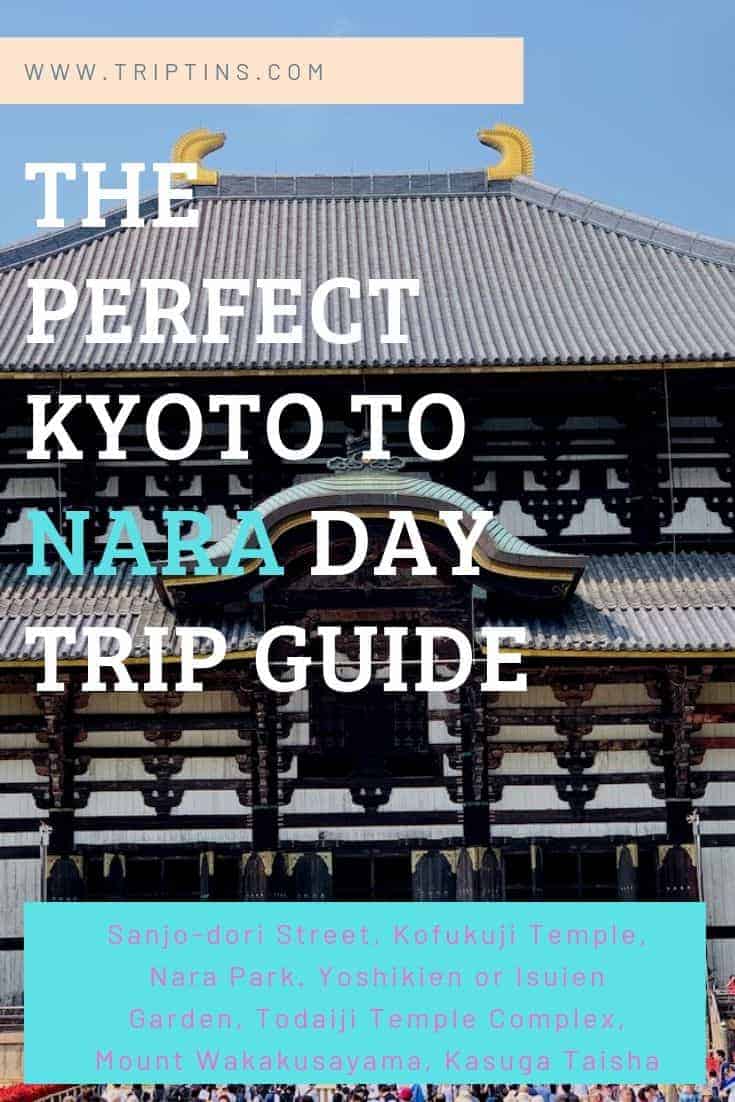
Related posts:
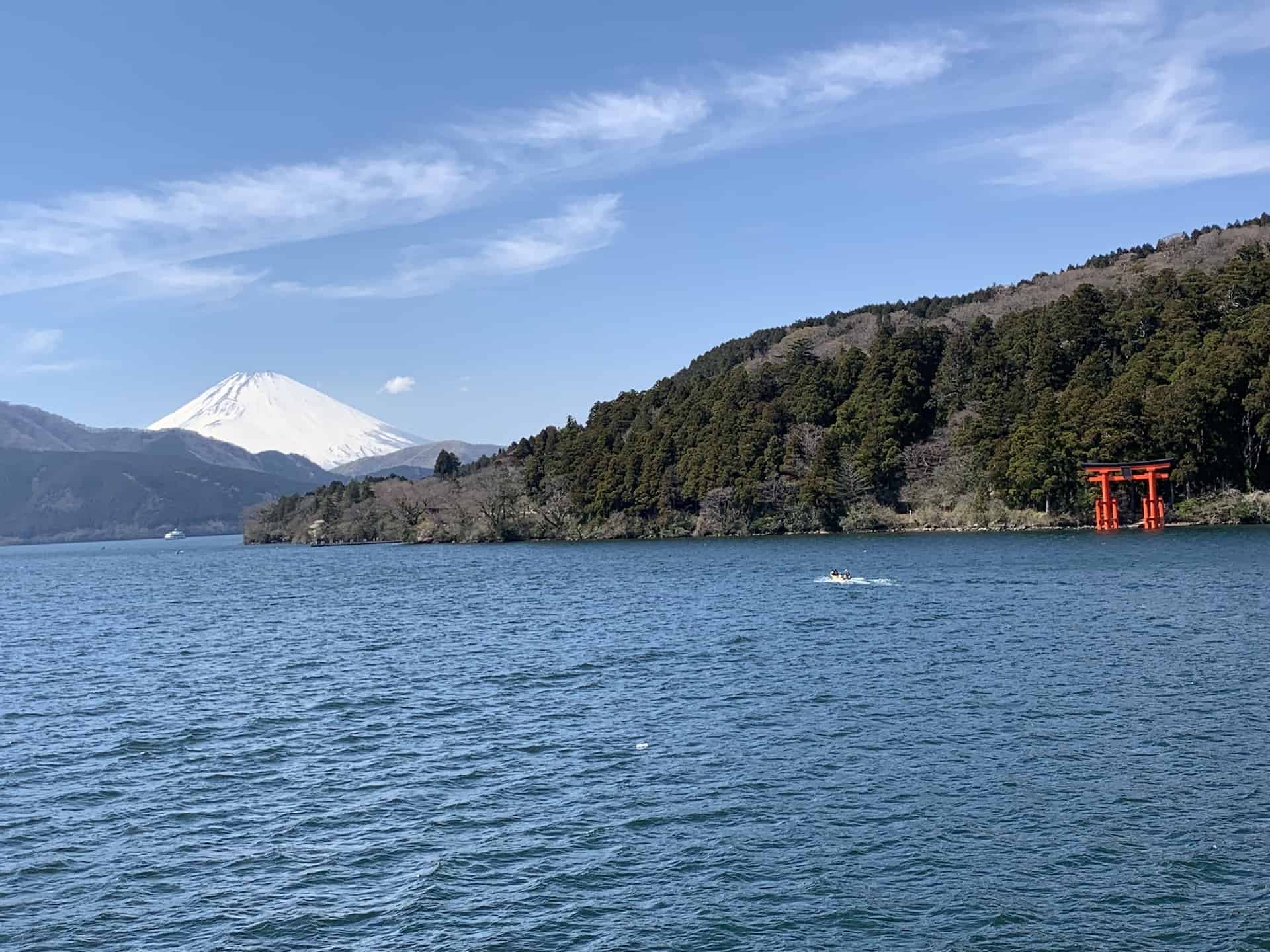
Sharing is caring!

NARA ITINERARY: 1 DAY / DAY TRIP FROM OSAKA OR KYOTO
by thepinay solobackpacker | Jan 8, 2019 | Itinerary , Japan , Nara | 0 comments
With so many places to explore in Japan, repeat visits beckon, each ancient city here offers a unique Japanese culture, just like Nara. Despite having 8 UNESCO World Heritage Sites, Nara is largely overshadowed by its more famous neighbors – Osaka and Kyoto. Most tourists often skip this first permanent capital of Japan, while those who drop by here oftentimes only have a day to spend. Thankfully, the city is condensed so it is possible squeeze in the top attractions in Nara in one day. Here’s a sample Nara Itinerary for one day tour from Osaka and Nara day trip from Kyoto with breakdown of expenses.
TRAVEL BLOG CONTENTS
NARA ONE DAY ITINERARY WITH BUDGET
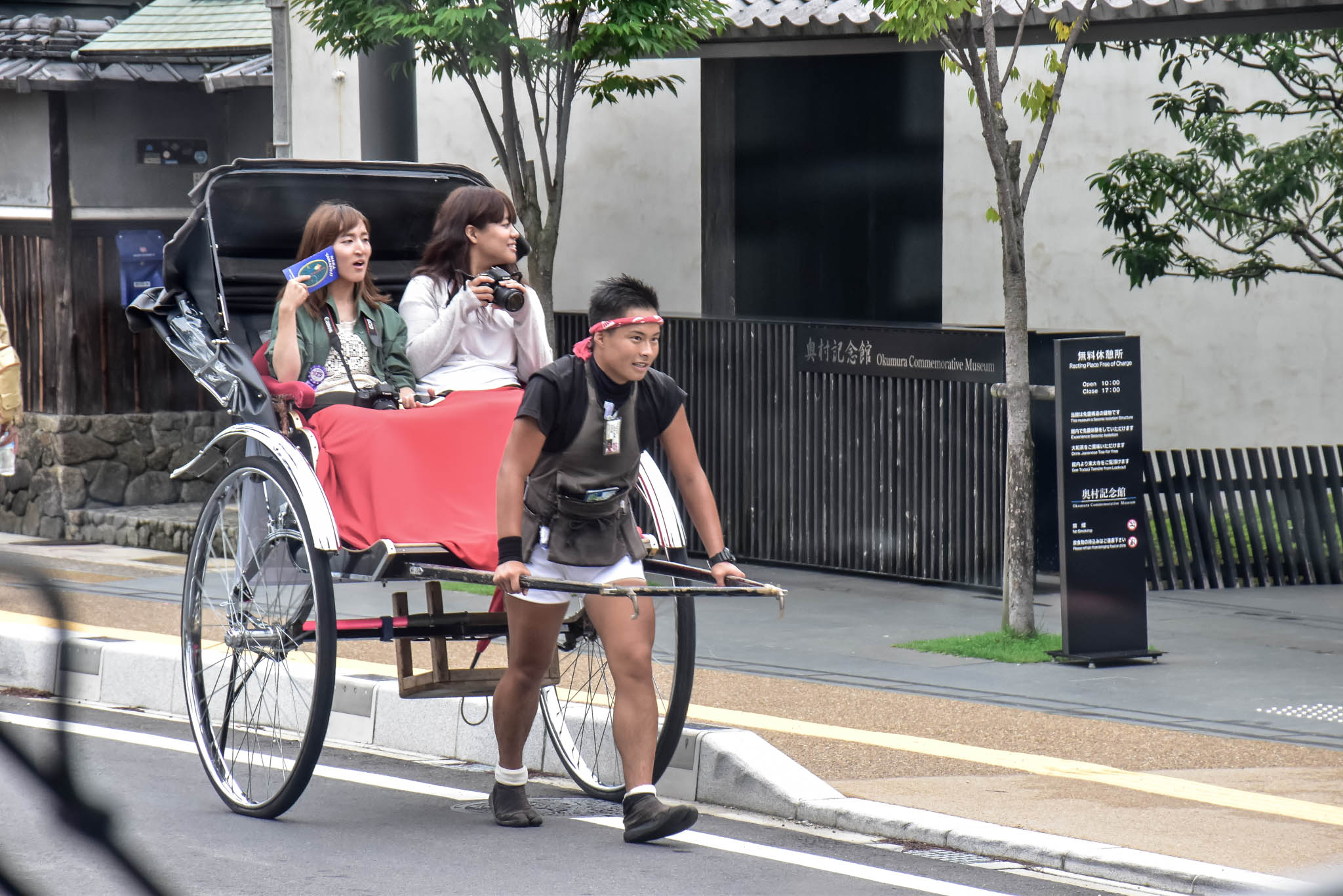
The sample budget below is supposing you will enter all the temples with entrance fees. If you don’t intend to enter all the temples, budget will be lower/span>. I recommend entering the Todaiji Temple, which houses the world’s largest bronze statue of Buddha enshrined in the largest wooden building in the world.
ALSO READ: WHAT TO DO IN NARA IN 1 DAY
Cheap nara day tour from kyoto.
If you are pressed for time or you want a hassle-free tour of Nara, you can actually book a Nara day tour from Osaka. Here are some of the cheapest tour I’ve seen that includes Kyoto + Nara Tour from Osaka.
Kyoto, Nara & Arashiyama Day Tour from Osaka
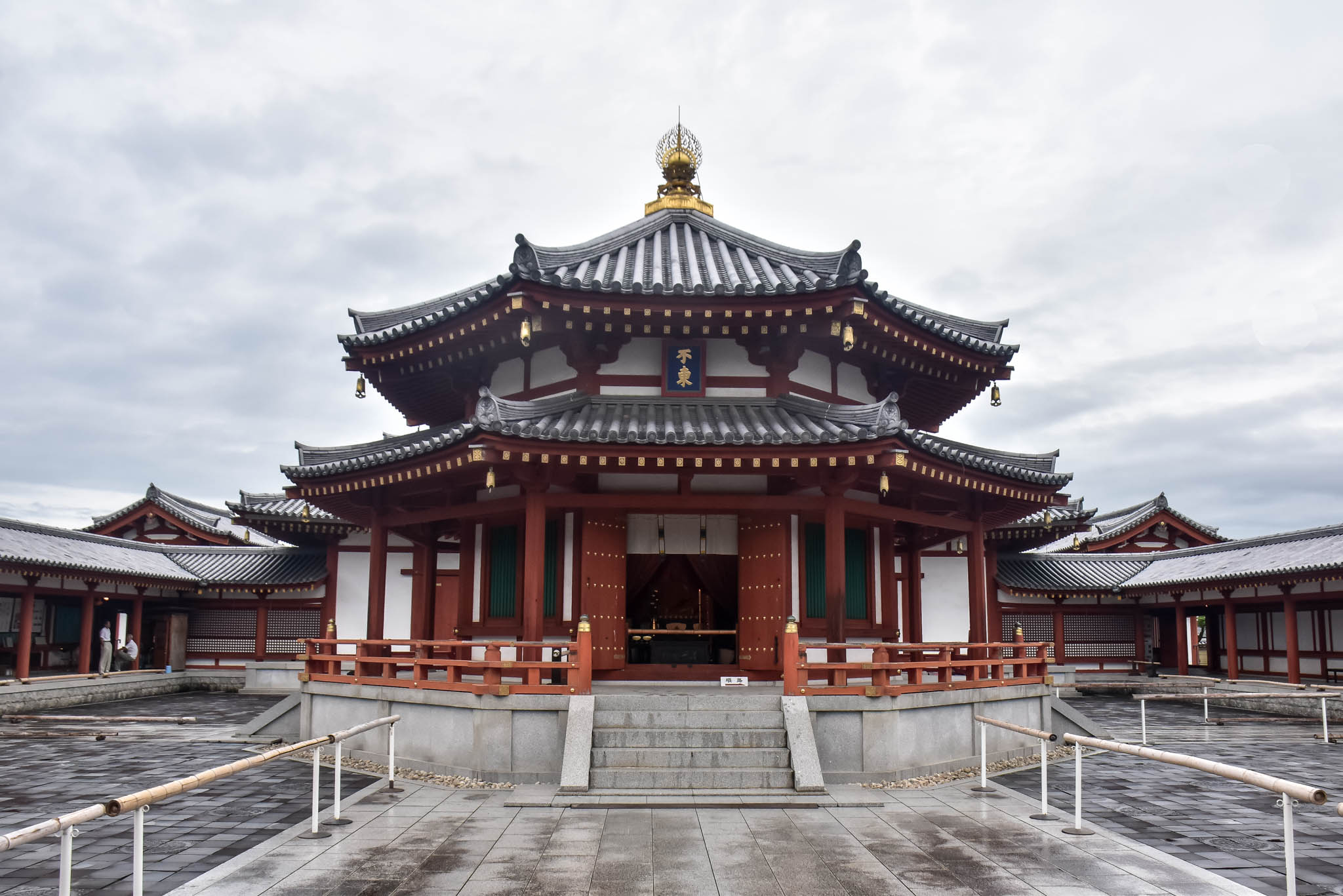
This is a perfect day tour to Kyoto and Nara for those who are pressed for time. Not to mention that the tour package is cheap. You will visit the main sites of Nara such as Nara Park, Tōdai-ji Temple and Kasuga Taisha Shrine. By lunch, you will have free time to explore Ninenzaka, Sannenzaka and Kiyomizu-dera temple before heading to Arashiyama. Additionally, you get a bonus – a FREE Harukas 300 Observatory Pass valued at JPY 1,500 (PHP 681/ USD 14/ SGD 18/ MYR 58).
Tour package includes: Hotel pick up and drop off (please indicate your hotel details at checkout), guide and driver service fee, Transportation and HARUKAS 300 Observatory Pass.

ARASHIYAMA AND NARA DAY TOUR FROM OSAKA
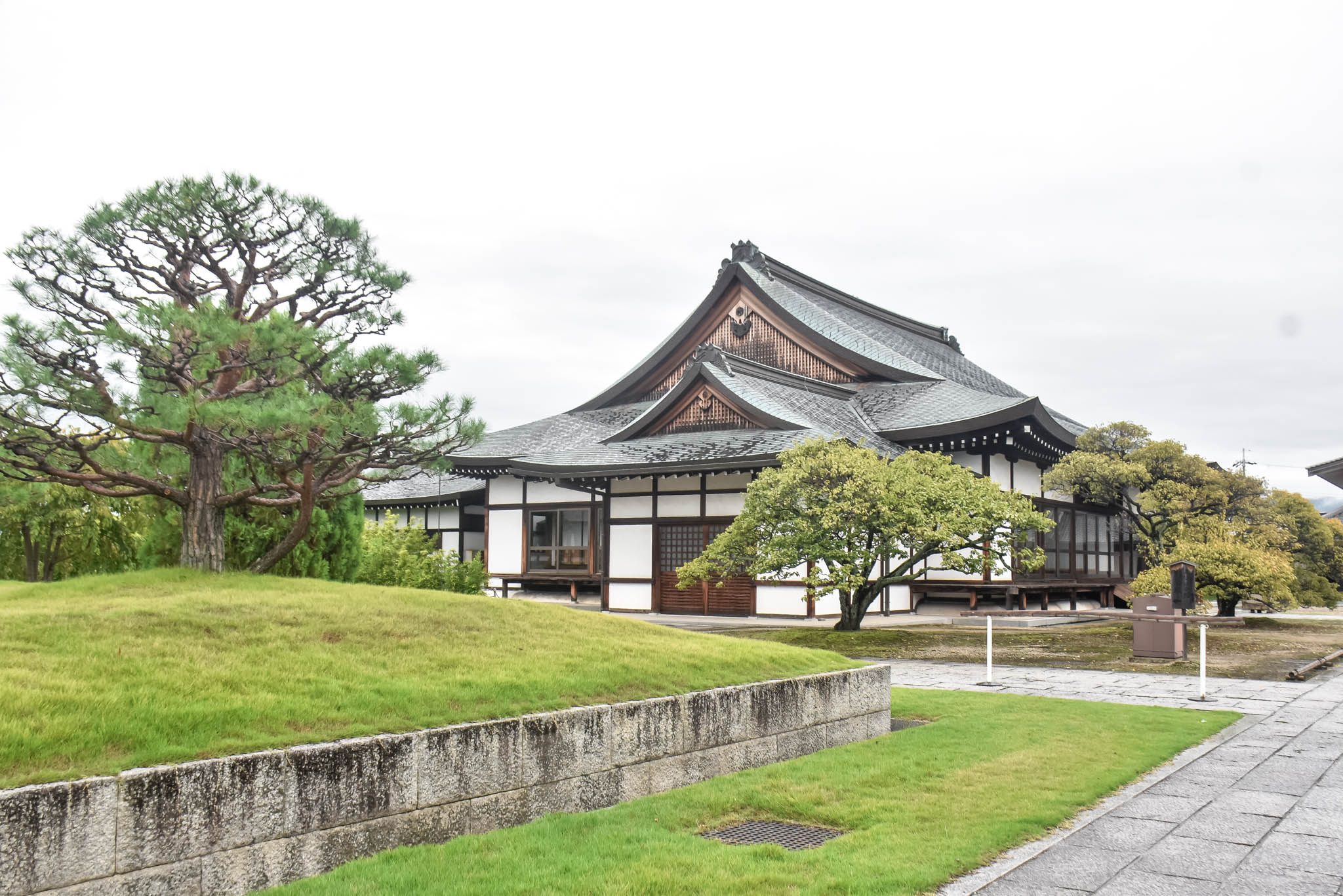
The full day guided tour will take you to the picturesque Arashiyama where you can walk along the Bamboo Forest. You will also get to explore Nara that is peppered with 8 UNESCO World Heritage Sites. Here you can get up close with the Japanese national treasures of Todaiji Temple and Daibutsu Buddha and get a chance to feed the sacred deer of Nara Park. Roundtrip transport and English-speaking guide is included in the tour package. Lunch is optional.
HOW TO GET TO NARA FROM OSAKA
Nara is closer to Osaka than Kyoto. So if you are coming from Osaka, you can ride either JR Line or Kintetsu Line. If you choose JR Line, the train departs from Osaka Station. On the other hand if you opt for Kintetsu Line, the train departs from Kintentsu Namba Station.
From Osaka-Namba Station walk to JR Namba Station for about 9 minutes. At JR Namba Station, take the tain at JR Yamatoji Line to Nara Station. Alight at Nara Station. Transit time is roughly 44 minutes. Train fare is JPY 560/PHP 262 (EURO 4/USD 5/SGD 7/MYR 22). From Nara Station, Nara Park is about a 20 minute walk. You may also take a bus to Nara Park from Nara Station. Just look for the Bus terminal at JR Nara Station East Exit. Board the City Loop Line Bus #2 (it’s a yellow bus) from bus stop 2. Transit time is about 20 minutes and fare is JPY 210 / PHP 95 (EURO 2/USD 2/SGD 3/MYR 8). Alight at Nara Park.
NOTE: If you have a JR WEST RAIL PASS, you can use it here.
PURCHASE JR PASS HERE
(KINTETSU LINE)
From Osaka-Namba Station, you can take the train at Kintetsu Nara Line. Alight at Kintetsu Nara Station. Train fare is JPY 560/PHP 262 (EURO 4/USD 5/SGD 7/MYR 22) and travel time is 39 minutes. From Kintetsu Nara Station, Nara Park is about a 5 minute walk.
HOW TO GET TO NARA FROM KYOTO
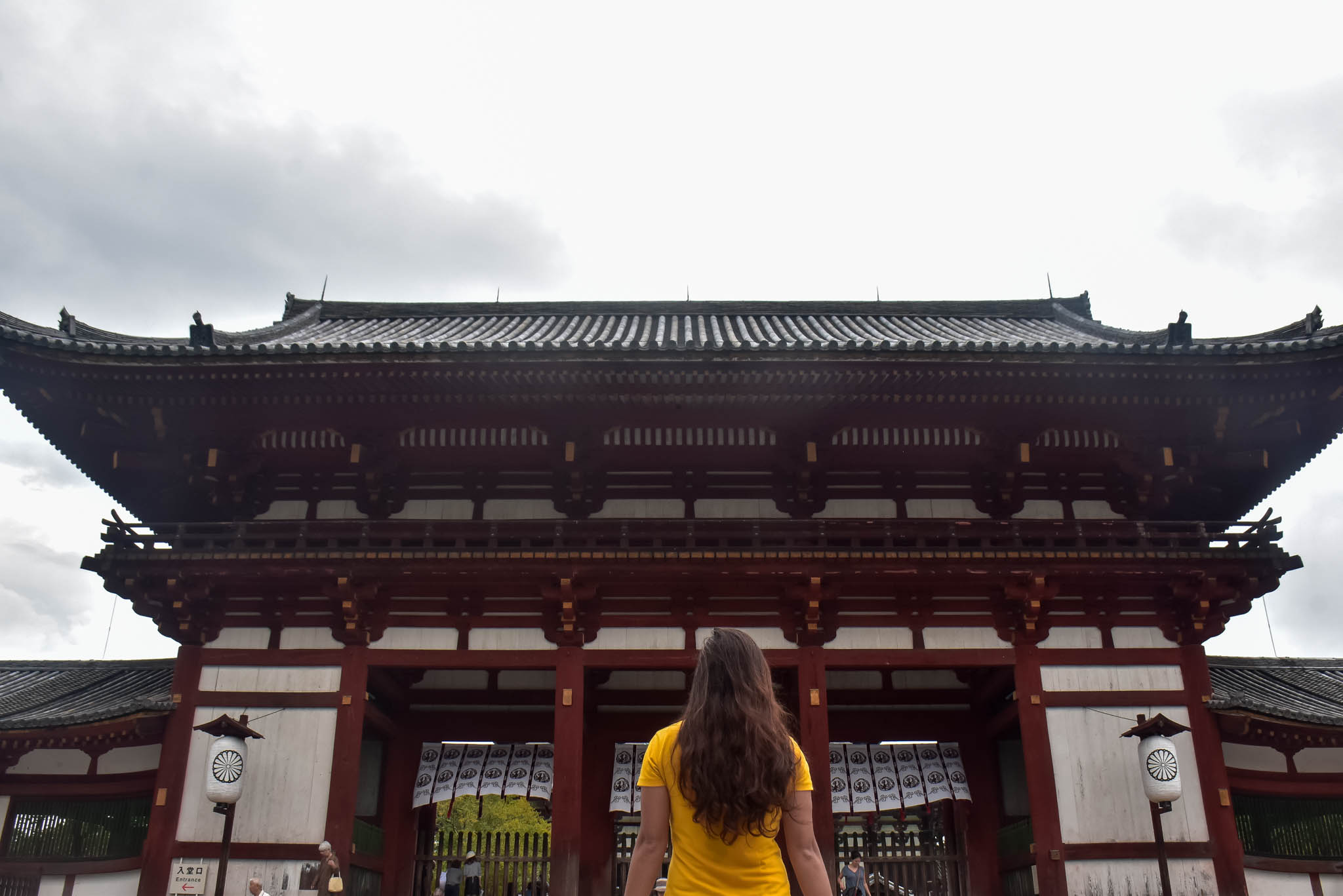
From Kyoto, you have two options by train to get to Nara .
If you have a JR Rail Pass, you can opt for this option since you can use your pass here. From Kyoto Station, take the train at JR Nara Line to Nara. Travel time is 45 minutes and fare is JPY 710 /PHP 332 (EURO 6/USD 7 /SGD 9/MYR 30). From Nara Station, you can reach Nara Park (where most attractions are concentrated) for about 20 minutes by foot. Alternatively, you can take a bus to Nara Park from JR Nara Station East Exit Bus Terminal. Board Bus # 2, the yellow bus for City Loop Bus for JPY 210 / PHP 95 (EURO 2/USD 2/SGD 3/MYR 8). Transit time is about 20 minutes.
If you don’t have a JR Pass, your best bet is to take the express Kintetsu Line train at Kyoto Station. From Kyoto Station, take the Kintetsu Kyoto Line Exoress for Kintetsu Nara Station. Travel tim is 49 minutes and fare is JPY 620/PHP 289 (EURO 5/USD 6/SGD 8/MYR 24). From Kintetsu Nara Station, Nara Park is about a 5 minute walk.
TIP: For train schedules and fare rates, visit Hyperdia.com
POCKET-WIFI RENTAL JAPAN

Since English is not widely-spoken in Japan, asking for directions can be hard. Best to stay connected online to use Google Maps and Google Translate. You can rent pocket Wi-Fi in advance before you fly to Japan and just pick it up at the airport. Wi-Fi devices are in demand and may ran out quickly, so booking in advance is highly recommended, not to mention you will avoid long lines. You can reserve pocket Wi-Fi through the link below.
RESERVE POCKET WI-FI HERE
WHERE TO STAY IN NARA
Should you decide to stay in overnight or for 2 days in Nara, there are a couple of budget hotels around the city center. Don’t forget to ask about the check-out time and their luggage policy, some budget hotels (like the one we stayed at) doesn’t allow guests to leave their luggage after check out. If this is the case, you can leave your luggage at Nara Tourist Center near Nara Station for JPY 500 / PHP 234 (EURO 4 / USD 10/ SGD 13/ MYR 42).
Here’s a list of best budget hotels in nara, near Nara Park.
NARA BUDGET HOTELS
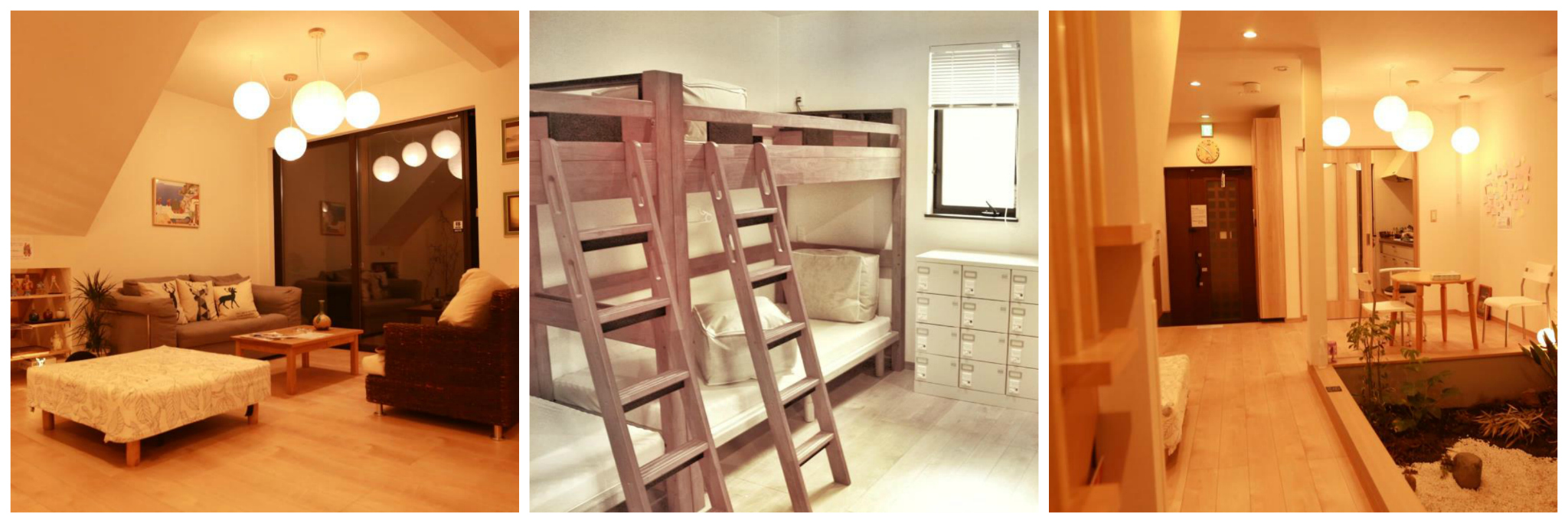
Nara Deer Hostel
593-17 Sanjōchō, Nara City Center, Nara
CHECK RATES HERE
Guest House Iki
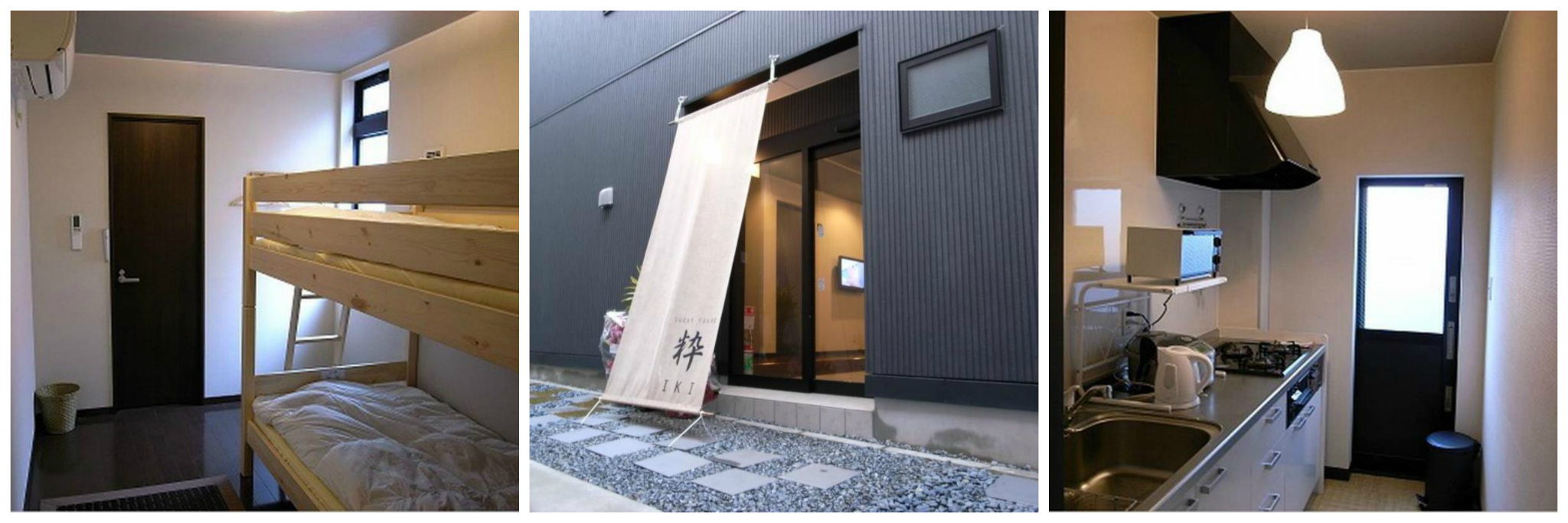
1-5 Kamisanjo-cho, Nara City Center, Nara
Guest House Route53 Furuichi
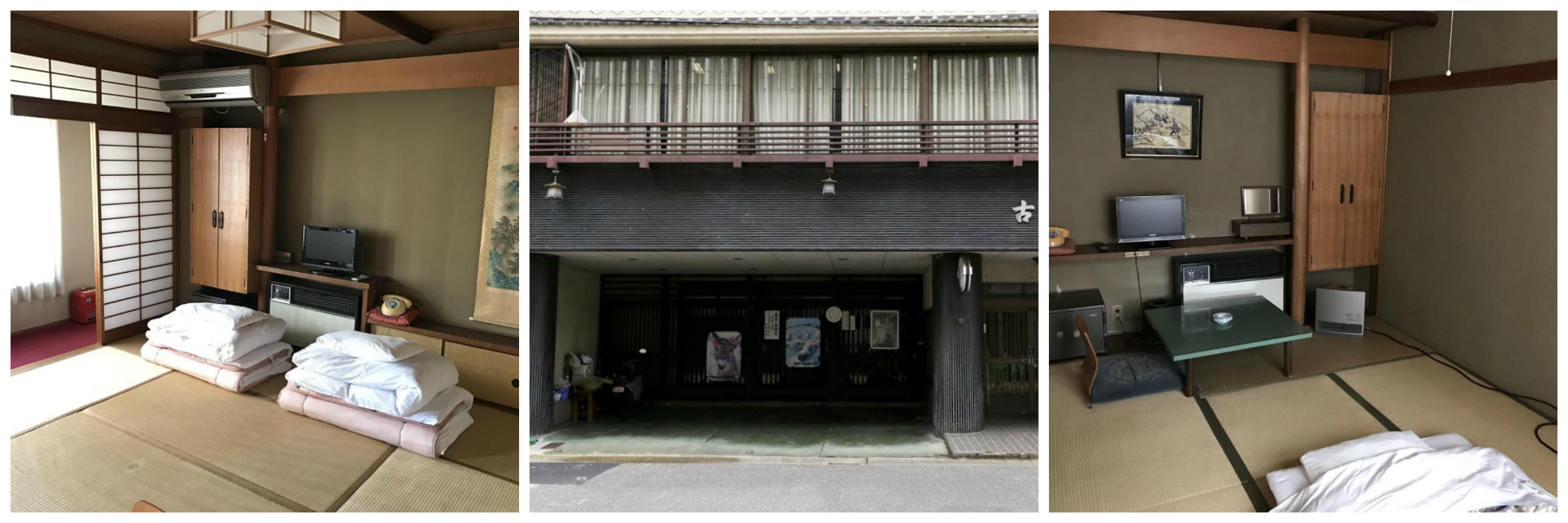
6 Higashiterabayashi-cho, Nara City Center, Nara
NARA JAPAN TRAVEL TIPS
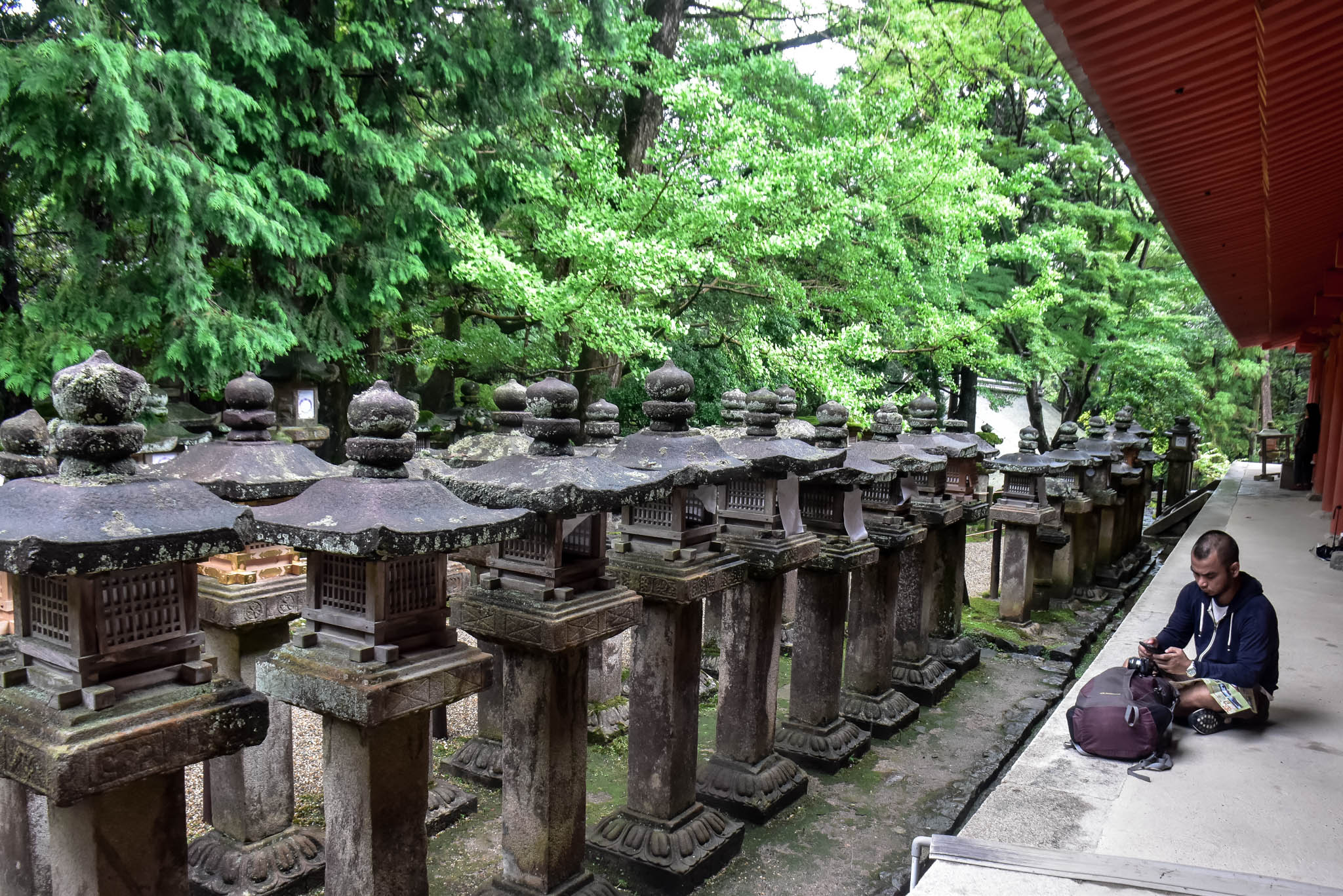
⊗ If you are taking the City Bus Loop in Nara, fixed fare is JPY 210 (PHP 95/USD 2/SGD 3/MYR 8) for adults and JPY 110 (PHP 50/USD 0.99/SGD 1.35/MYR 4.25) for children.
⊗ If you will stay overnight in Nara, make sure your hotel allows luggage storage as the check-out time here is quite early – 9:00 AM.
⊗ You can leave your luggage at Nara Tourist Information Center near Nara Station for JPY 500 / PHP 234 (EURO 4 / USD 10/ SGD 13/ MYR 42) per luggage for one day.
OSAKA KYOTO ITINERARY With Budget (5 days)
NARA TRAVEL BLOG (Budget + Itinerary)
TRAVEL GUIDE TO OSAKA (Budget + Itinerary) 2017
TRAVEL GUIDE TO KYOTO (Budget + Itinerary) 2017
TRAVEL GUIDE TO NAGOYA (Budget + Itinerary) 2017
FOLLOW ME ON FACEBOOK FOR TRAVEL GUIDE UPDATES
FOLLOW ME ON INSTAGRAM

Related Posts

2024 Kuala Lumpur Itinerary (5 Days 4 Nights) with Budget

TUBA BENGUET TOURIST SPOTS + ITINERARY (2024)

PUERTO GALERA ITINERARY (TRAVEL GUIDE + BUDGET) 2024
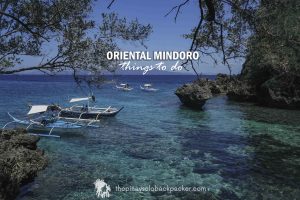
ORIENTAL MINDORO: Things to Do in Puerto Galera + Itinerary 2024
Submit a comment cancel reply.
Your email address will not be published. Required fields are marked *
- BEACH RESORTS
- BORDER CROSSING BY BUS
- Cruise Guide
- FERRY SCHEDULE AND RATES
- General Santos
- Historical Sites
- Hotels and Resorts
- Shiragawago
- SHIRAKAWA-GO
- Cameron Highlands
- Kota Kinabalu
- Kuala Lumpur
- New Zealand
- Cagayan North
- Camarines Norte
- Caramoan Island
- Catanduanes
- Davao del Sur
- Ilocos Norte
- Lanao del Norte
- Kalanggaman
- Mindoro Occidental
- Puerto Galera
- Negros Oriental
- Nueva Ecija
- SAN TEODORO
- Puerto Princesa
- San Vicente
- Quezon Province
- Northern Samar
- Surigao del Norte
- Surigao del Sur
- Capones island
- Zamboanga City
- Zamboanga del Norte
- Solo Female Travel 101
- South Cotabato
- Star Cruises
- Kanchanaburi
- Tourist Spots
- Travel Apps
- Travel Gadget
- TRAVEL GADGETS
- Travel Guide
- Uncategorized
- UNESCO World Heritage Site
- HO CHI MINH CITY
COPYRIGHT NOTICE:
Terms of use:.

- Privacy Overview
- Strictly Necessary Cookies
This website uses cookies so that we can provide you with the best user experience possible. Cookie information is stored in your browser and performs functions such as recognising you when you return to our website and helping our team to understand which sections of the website you find most interesting and useful.
Strictly Necessary Cookie should be enabled at all times so that we can save your preferences for cookie settings.
If you disable this cookie, we will not be able to save your preferences. This means that every time you visit this website you will need to enable or disable cookies again.

Girl Eat World
A girl's adventure in food and travel around the world, nara day trip itinerary: things to do in the capital of ancient japan.
Nara was the first permanent capital of ancient Japan. It held the permanent capital city title for most of the 8th century before Kyoto took that title in the year 794. Nowadays, Nara is popular as a day trip from Osaka, to visit the big Buddha and feed Sika deers. If you are visiting Osaka or Kyoto and have a day to spare, you definitely want to make a stop in this quaint and quiet city.
Read on to find out what you can expect when visiting Nara!
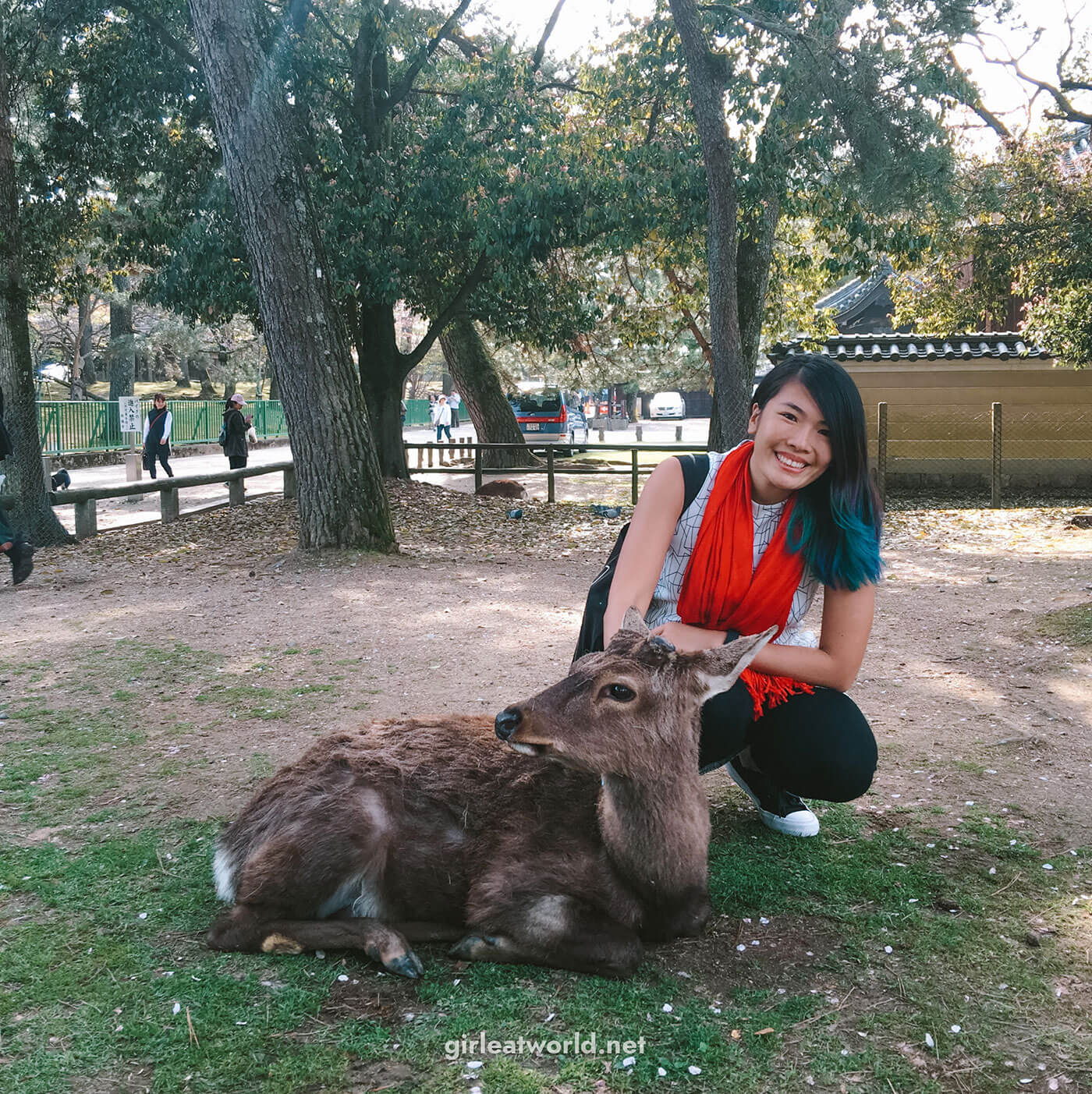
When is the best time to visit Nara?
How much time should i spend in nara, how to get to nara, nara day tours, where to stay in nara, how to get around in nara, essential nara day trip itinerary, what and where to eat in nara.
Much like the rest of Japan, the best time to visit Nara would be around spring during Sakura time , or autumn during Momiji time . I would try to avoid the Summer months in Japan as the weather could get really hot and humid. I would also avoid September to early October due to the typhoon season.

I have personally visited Nara during spring and winter time. I encourage you to visit during springtime because the Sakura flowers make the entire country feel extra dreamy. That said, I had a pleasant visit during winter due to the lower density of crowds.
Dive Deeper: Read about my experience visiting Japan during the Sakura (Spring) or Momiji (Autumn) season!
Nara is an easy day trip from Osaka or Kyoto . While there are plenty of things to see and do in Nara to warrant a visit, all the attractions are very close together and easy to get through in one day .
If you intend to make this a day trip, I suggest leaving as early as possible in the morning. You’ll need at least 6 hours to explore Nara and see the essential things to do.
Spending overnight in Nara is optional. If you have a lot of extra time in Japan or if you are really interested in being away from a big city, it could be worth it. Especially if you have an interest in temples and want to see all eight UNESCO World Heritage sites in Nara.
The most convenient way to reach Nara is by train from Osaka or Kyoto. Nara can be reached in under an hour from both destinations.
Rail Pass: If you’re mainly interested in visiting Osaka, Nara, and Kyoto, consider getting the Kintetsu Rail Pass , which will save you money and let you use the bus in Nara.
1. Get to Nara from Osaka
From Osaka, you could go from Osaka-Namba station to Kintetsu-Nara station using the Kintetsu rapid express trains which takes around 40 minutes.
Alternatively, Nara JR Station can be reached via the Osaka Loop line from the Osaka Station. This line is covered by JR Pass if you already have one, but if not, they cost about 820 yen one way.
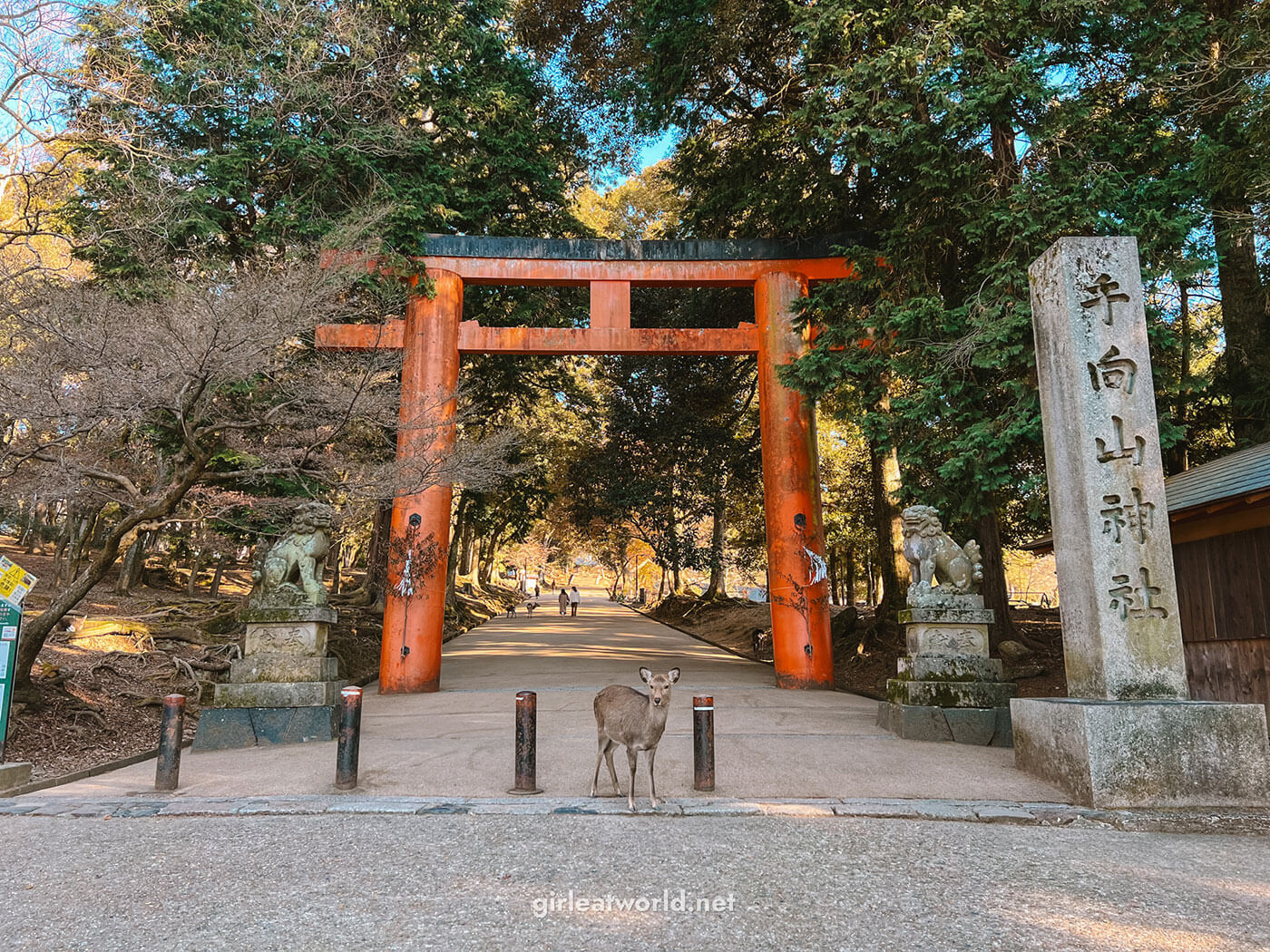
2. Get to Nara from Kyoto
From Kyoto, the most straightforward way to get to Nara is using the Kintetsu Express train from Kyoto Station to Yamato Saidaji Station. From there, you can switch trains to reach Kintetsu-Nara Station. This takes about 45 minutes.
Please note that Kintetsu Rail Pass does not include rides on the limited express trains, which are supposed to be faster. If you ask me though, the limited express train is not worth the price for travel from Kyoto to Nara. At this distance, it only ends up being a few minutes faster than the regular rapid express trains, so I suggest just getting the Kintetsu Rail Pass and using the rapid express trains.
While I think Nara is totally doable on your own, Nara is a city rich in history. You might benefit from joining a tour with a dedicated guide. Here are a few options if you want to have a guide who can explain more about Nara to you:
- Essential Nara 3-hour tour – If you just want to see the essentials of Nara similar to what I have outlined below, you’ll want to book this tour.
- Private full-day tour of Nara – If you want a tour guide just for yourself and the ability to customize the tour, this one is for you!
- Nara Tour from Kyoto – For those of you coming from Kyoto. This tour includes transport to Nara from Kyoto
- Nara and Wakayama Tour from Osaka – This tour includes transport to Nara from Osaka. It will also go to Wakayama, which would be beautiful during autumn time.
As I said before, spending overnight in Nara is completely optional. However, if you want to, you could consider staying close to the main train stations for convenience’s sake.
Here are a few hotels where you can stay near the station:
- Kasuga Hotel – Located conveniently close to Kintetsu-Nara station and all the attractions you want to see in Nara.
- Machiya no Yado – A traditional Japanese house located a short walk from the stations, but closer to the attractions in Nara.
- Residence Ferie Nara station – Located within a block away from the Nara JR Station.
But if you are after unique stays and can sacrifice proximity to the train station, I recommend looking into the following accommodations:
- Kotonoyado Musashino – A ryokan (traditional Japanese inn) located in the Nara Park, near Kasuga Taisha shrine
- Tsukihitei – Another ryokan in Nara Park, with a more secluded location. You won’t see many other people in this area!
Everything was so close by in Nara that we just explored the city on foot. I even had my toddler in tow for my second visit to Nara, and I still find it doable to explore on foot.
That said, this being Japan, you can always rely on public transport! If you have the Kintetsu Rail Pass , you’ll have access to the Nara Kotsu bus , which you can use to get around Nara. Click here to view the Nara bus route .

As I said before, Nara is best done as a day trip from Osaka or Kyoto. Here is an itinerary you can follow if you’re interested in exploring Nara in just one day!
- Arrive early at Nara Station in the morning
- Visit the Great Buddha at Todai-ji
- Nigatsu-do and Sangatsu-do (February and March Hall)
- Nandaimon (Great South Gate)
- Stroll around Nara Deer Park
- Kasuga Taisha Shrine
- Explore Naramachi before you go
1. Arrive early at Nara Station in the morning
Approximate time needed: ~30-45 minutes
Start your day bright and early at the Nara station. While there are trains arriving in Nara as early as 6 am, I don’t think you need to arrive until 8 to 9 am. That’s when most temples and shops will start to open.
However, if you do arrive early and the weather is cooperating, I suggest going to Mount Wakakusa for an easy hike with a nice view of Nara from above. By the time you’re done, you should be able to explore the rest of Nara!
Otherwise, from the train stations, start to make your way towards Todai-ji temple. It takes around 30-45 minutes by foot from the train stations, and it’s a very easy and peaceful morning walk!
2. Visit the Great Buddha at Todai-ji
Approximate time needed: ~30-45 mins
Todai-ji, meaning “Great Eastern Temple”, is one of the most significant temples in Japan. The temple ground in Todai-ji is massive. Follow the signs to purchase tickets at the entrance.
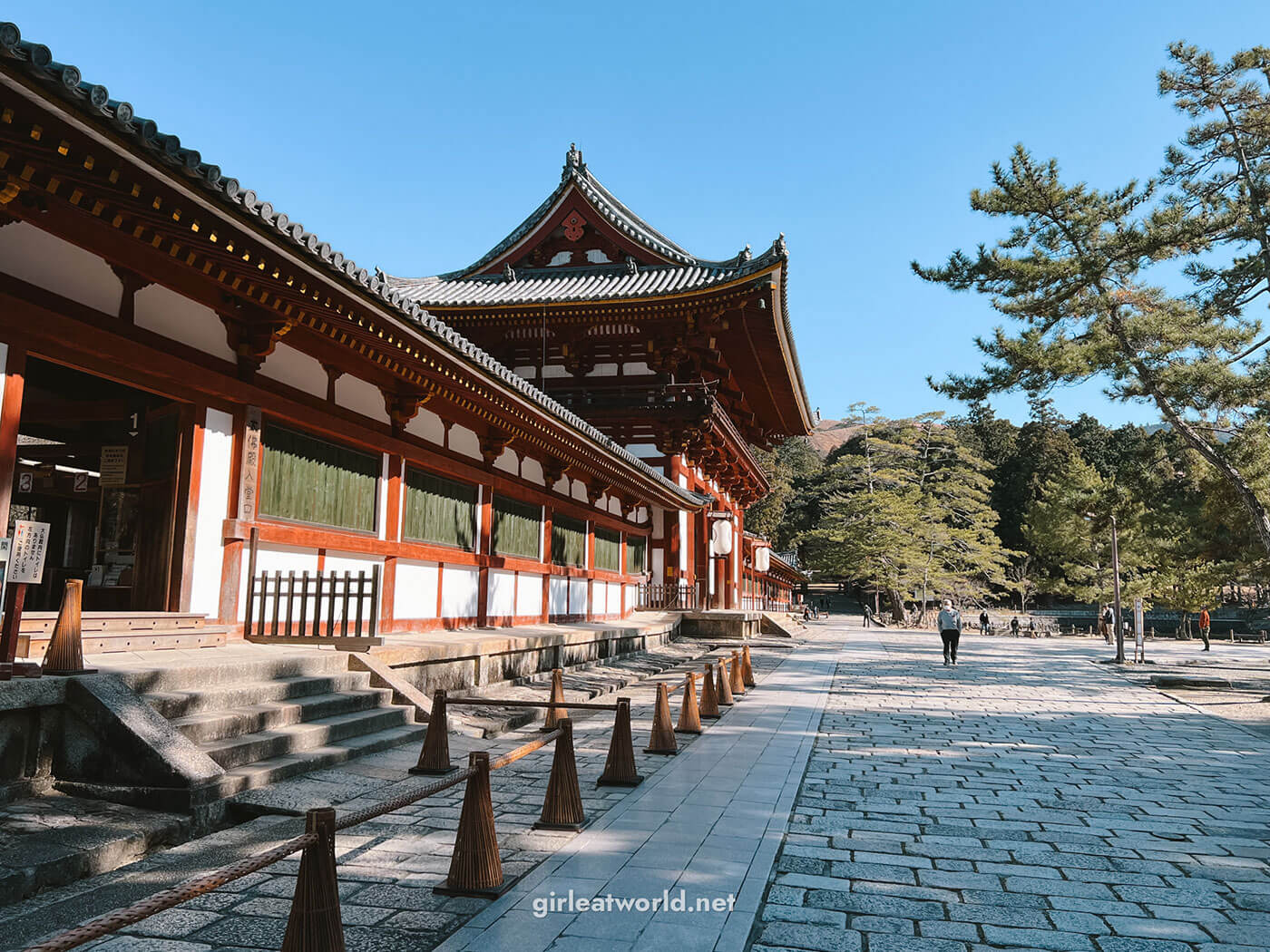
Admission to the temple is 600 yen per person over 13 years old, and 300 yen for kids 6-12 years old. Kids below 6 enter for free
Admission Fee: Check the most recent Todai-ji admission price here
Inside the temple, you’ll immediately greeted by the sight of this massive wooden structure. Stay on the left side to enter the hall.
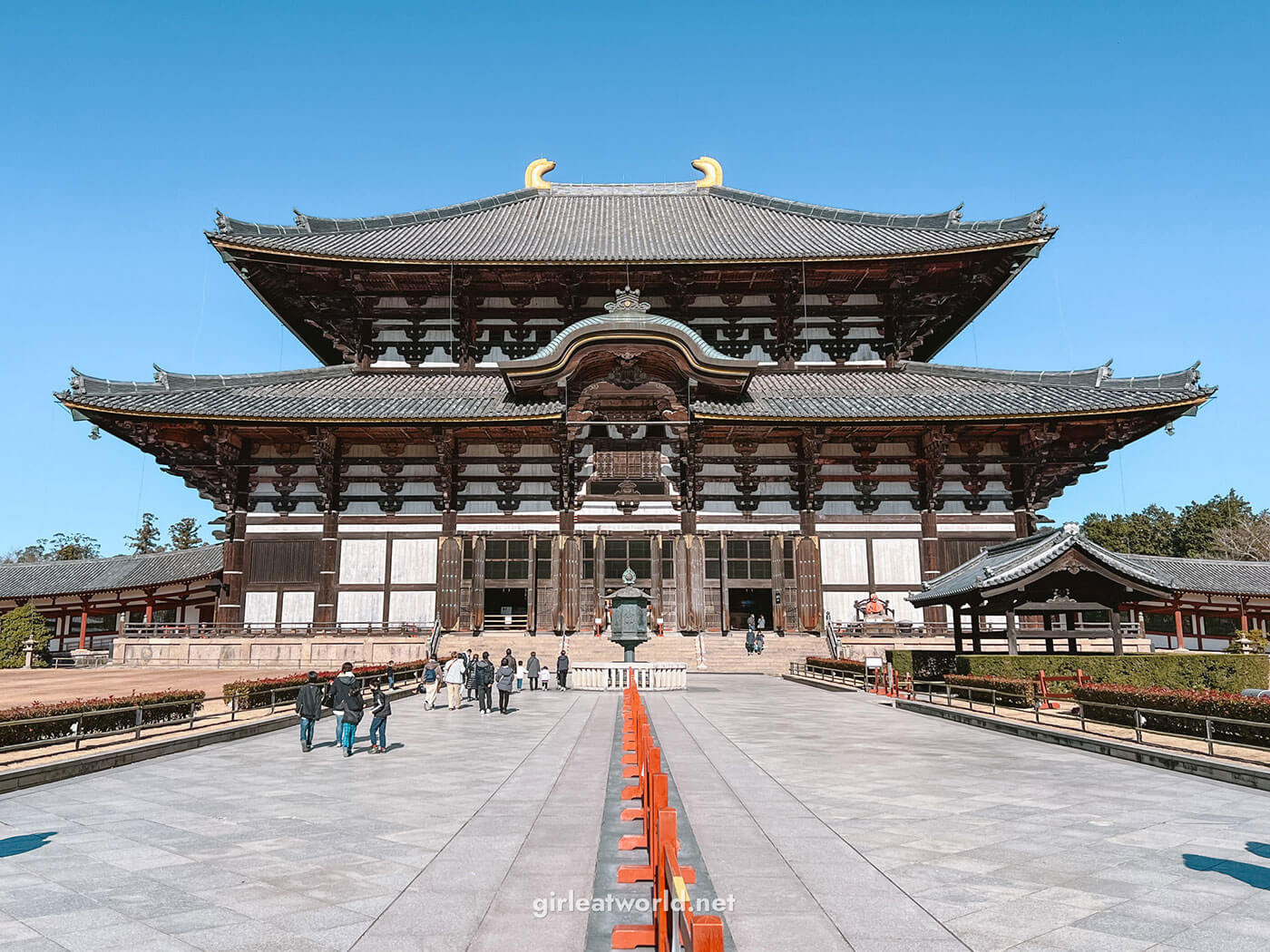
At the entrance is the Great Buddha Hall (Daibutsuden). As the name greatly implies, the hall houses a large bronze statue – a massive, 49-meter tall statue!
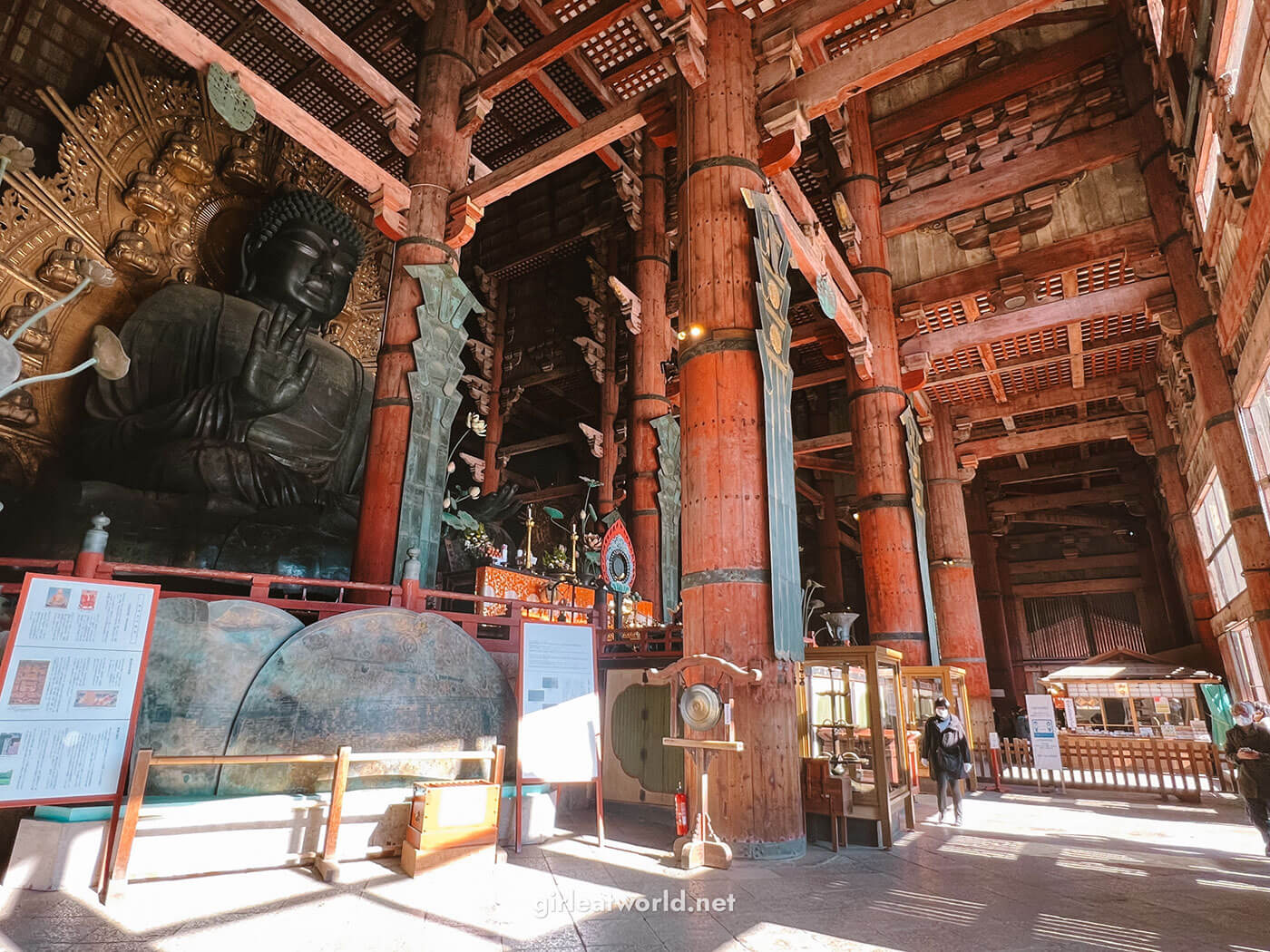
The Great Buddha statue has been rebuilt twice after fire incidents which was common in Japan at that time. The current statue was built in 1709, and although it is already massive, it’s still only 30% of the size of the original statue!
Make your way around the Great Buddha statue in a clockwise direction, which is a Buddhist tradition called circumambulation – a way of showing respect and devotion. You’ll find an exit at the end and that’s where you’ll be able to walk out.
Take note of the souvenir shop at the end, where you’ll also be able to buy some omamori , which are Japanese good-luck amulets commonly sold at Shinto shrines.
3. Nigatsu-do and Sangatsu-do (February and March Hall)
Admission fee: Nigatsu-do and Sangatsu-do are free to visit
Right off the exit of Todai-ji, head west for a peaceful walk on a cobbled pathway to Nigatsu-do, the February Hall. You might even start to see Sika deers around this area.
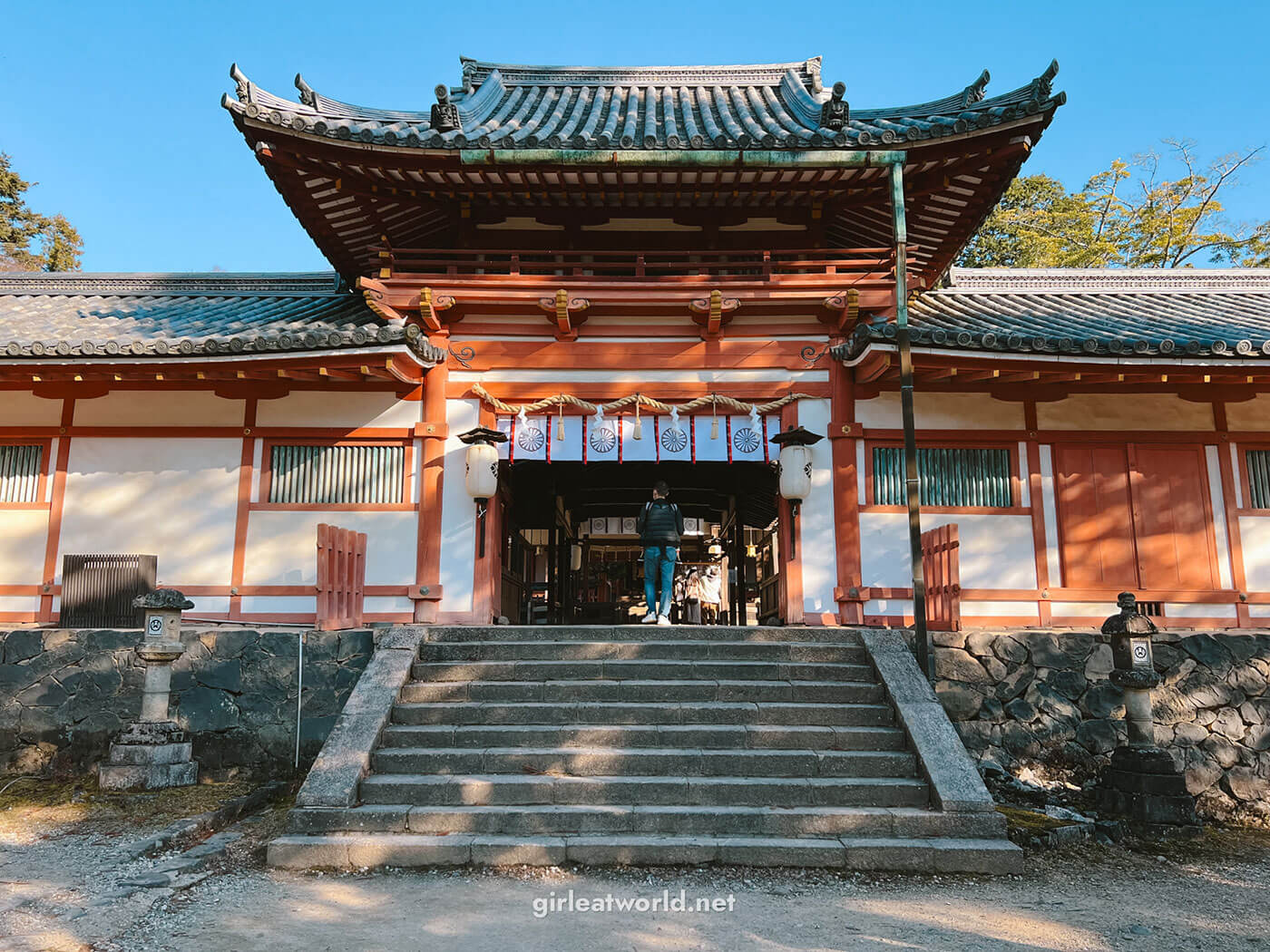
At Nigatsu-do, there is a second level with a large balcony that overlooks Nara. On March 12-13 every year, there is a fire and water ceremony called Omizutori at Nigatsu-do, where flaming torches are lit up on these balconies.
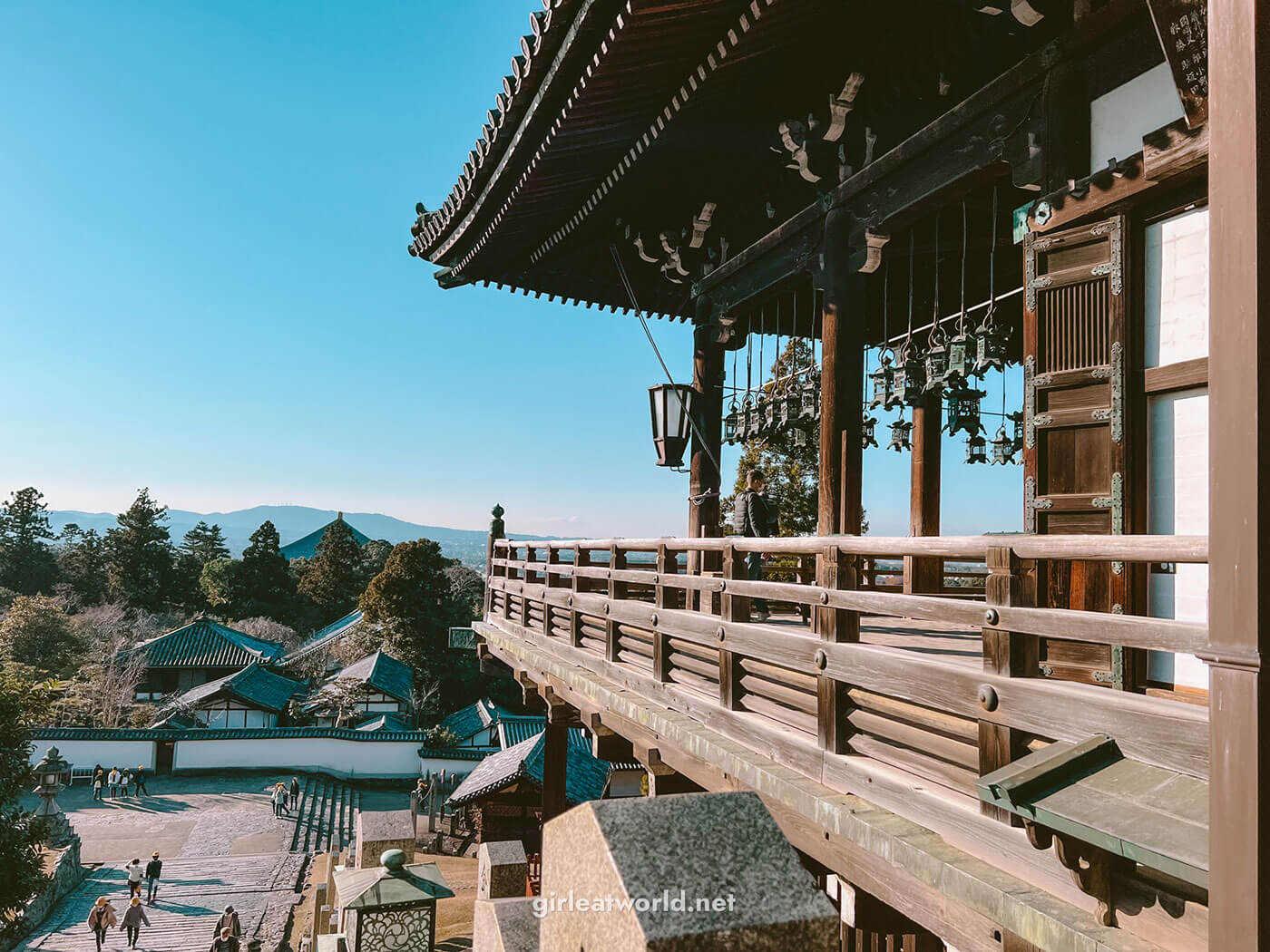
Just slightly south below Nigatsu-do is Sangatsu-do (March Hall), a lesser-known part and the oldest structure in Todai-ji. You’ll be able to view carved Buddha statues in this hall.
4. Nandaimon (Great South Gate)
Once you are done with Nigatsu-do and Sangatsu-do, head back to Todai-ji and then head south to Nandaimon, or the Great South Gate. This gate is the largest wooden gate in Japan, completed in 1203.
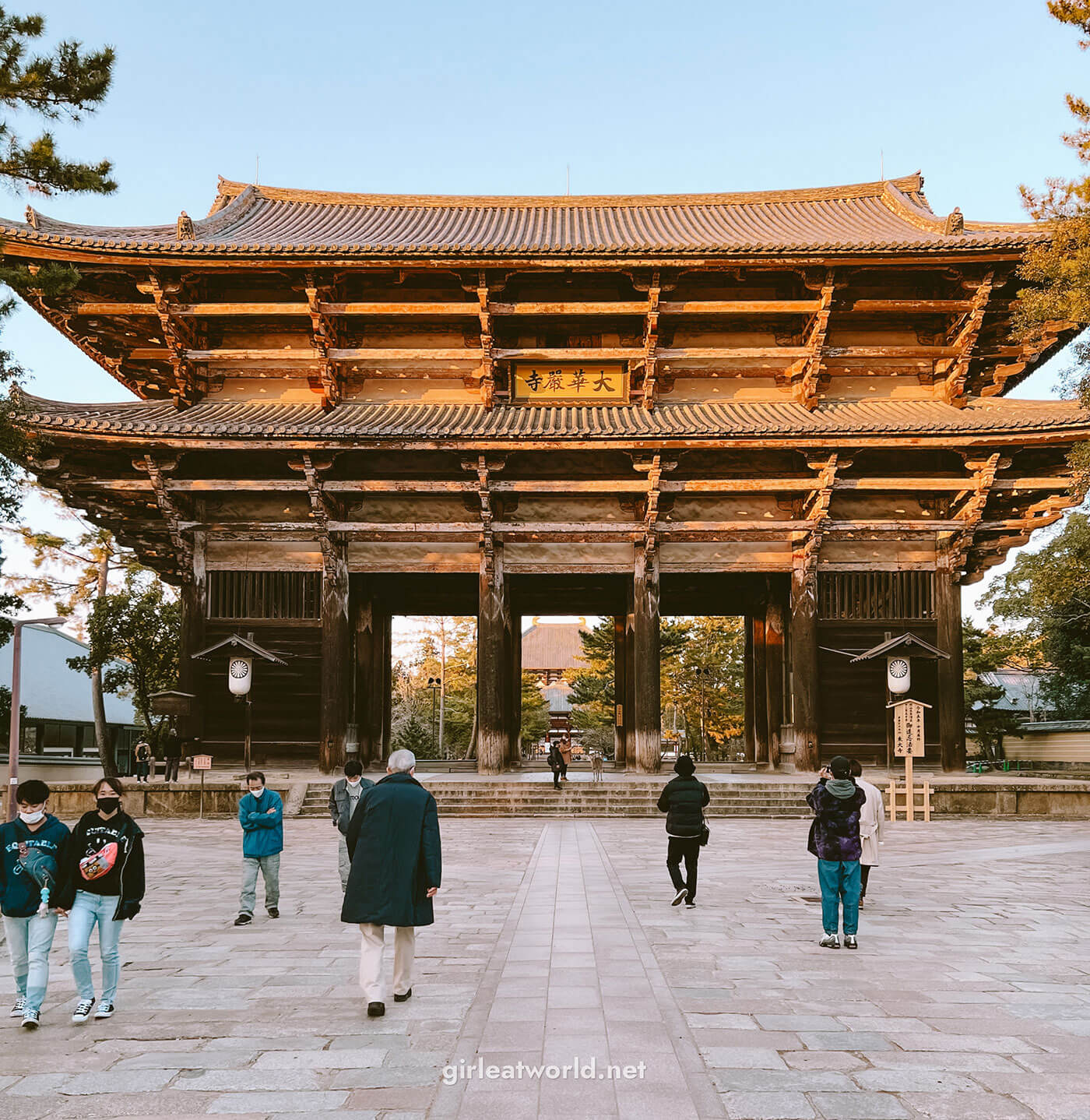
In front of Nandaimon, just a short walk away, you’ll start to see a row of souvenir shops and hungry Sika deers, waiting for you to feed them. You can purchase plain Shika-Senbei (sugarless rice crackers specially made for deer) for 150 yen at the shops and feed the deer!
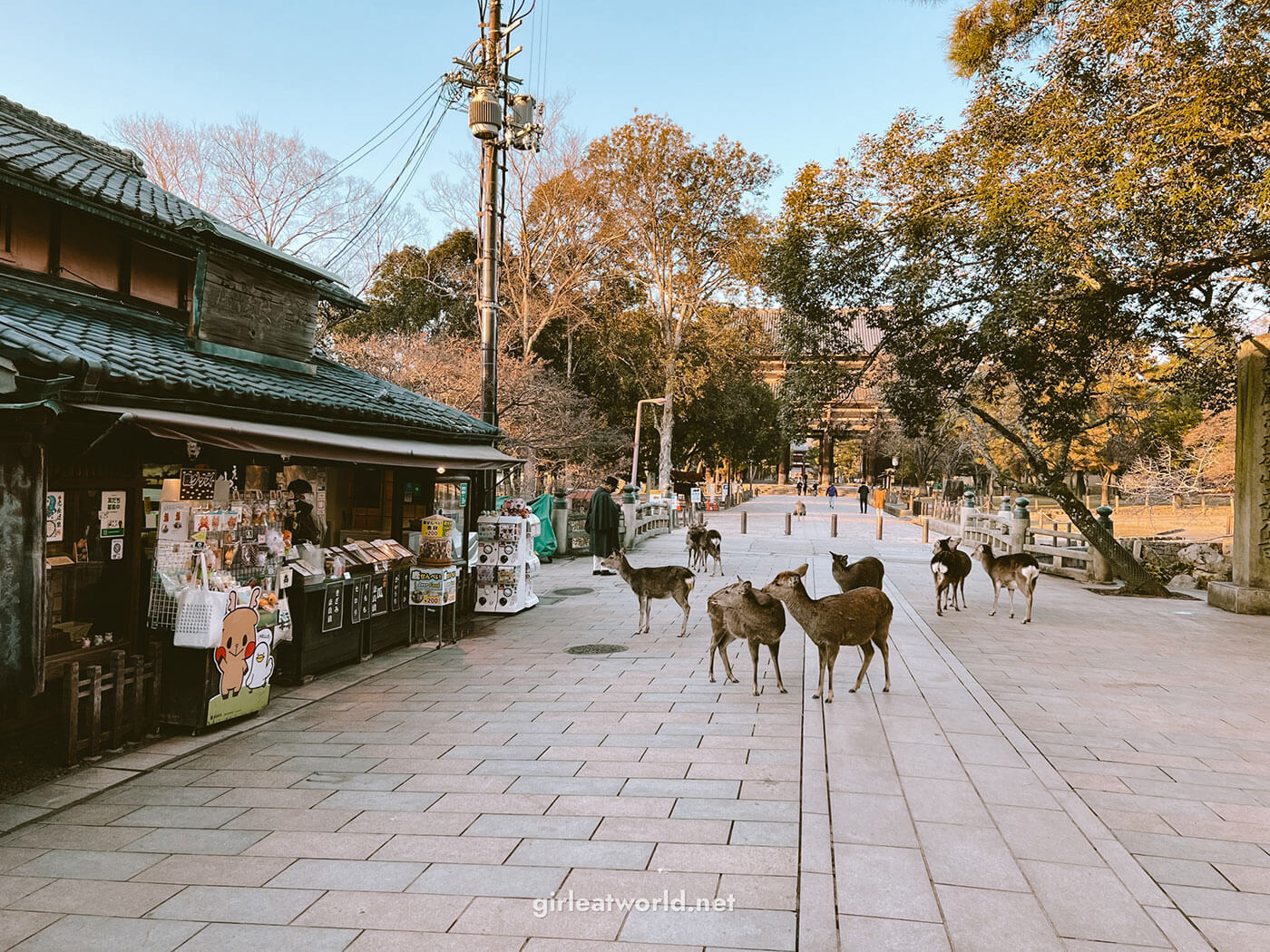
And guess what, you can also try one of those Senbei for yourself! Unlike the Shika-Senbei you buy for the deer, which are plain and sugarless, the ones for human consumption are thankfully more flavorful. There are sweet and savory variations – I tried the soy senbei (savory), zarame senbei (sweet with sugar crystals) and the plum-flavored senbei (sweet and sour).
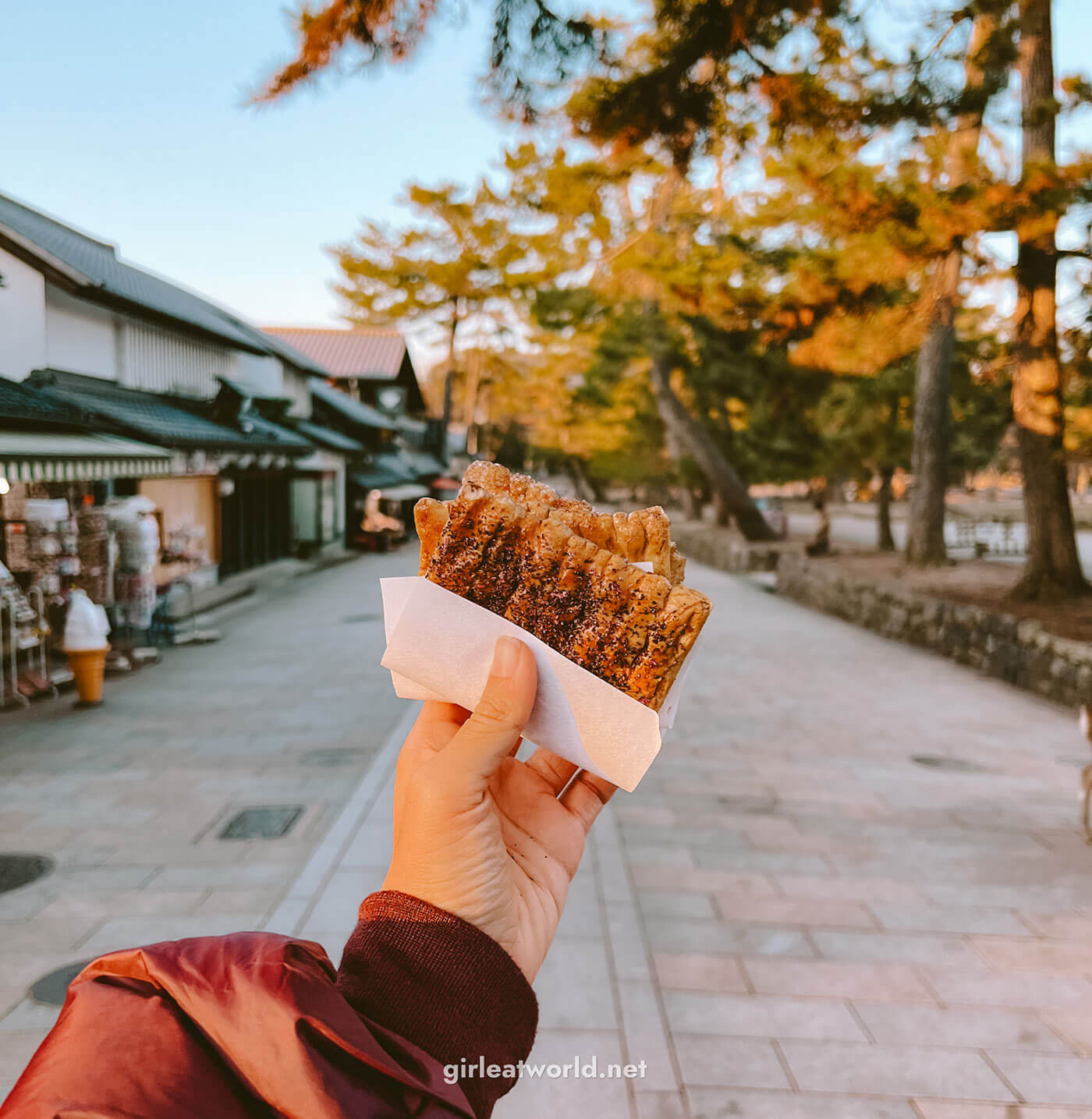
5. Stroll around Nara Deer Park
Approximate time needed: ~1 hour
From Nandaimon, start to walk southwest towards Kasuga Taisha shrine through Nara Deer Park, where you’ll be more than likely to see more Sika deer, a protected animal believed to be the messenger of Shinto gods.
The Sika deer are considered a national treasure of Japan. There are around 1,400 deer estimated to be living in Nara and most of them would be hanging in and around the park.
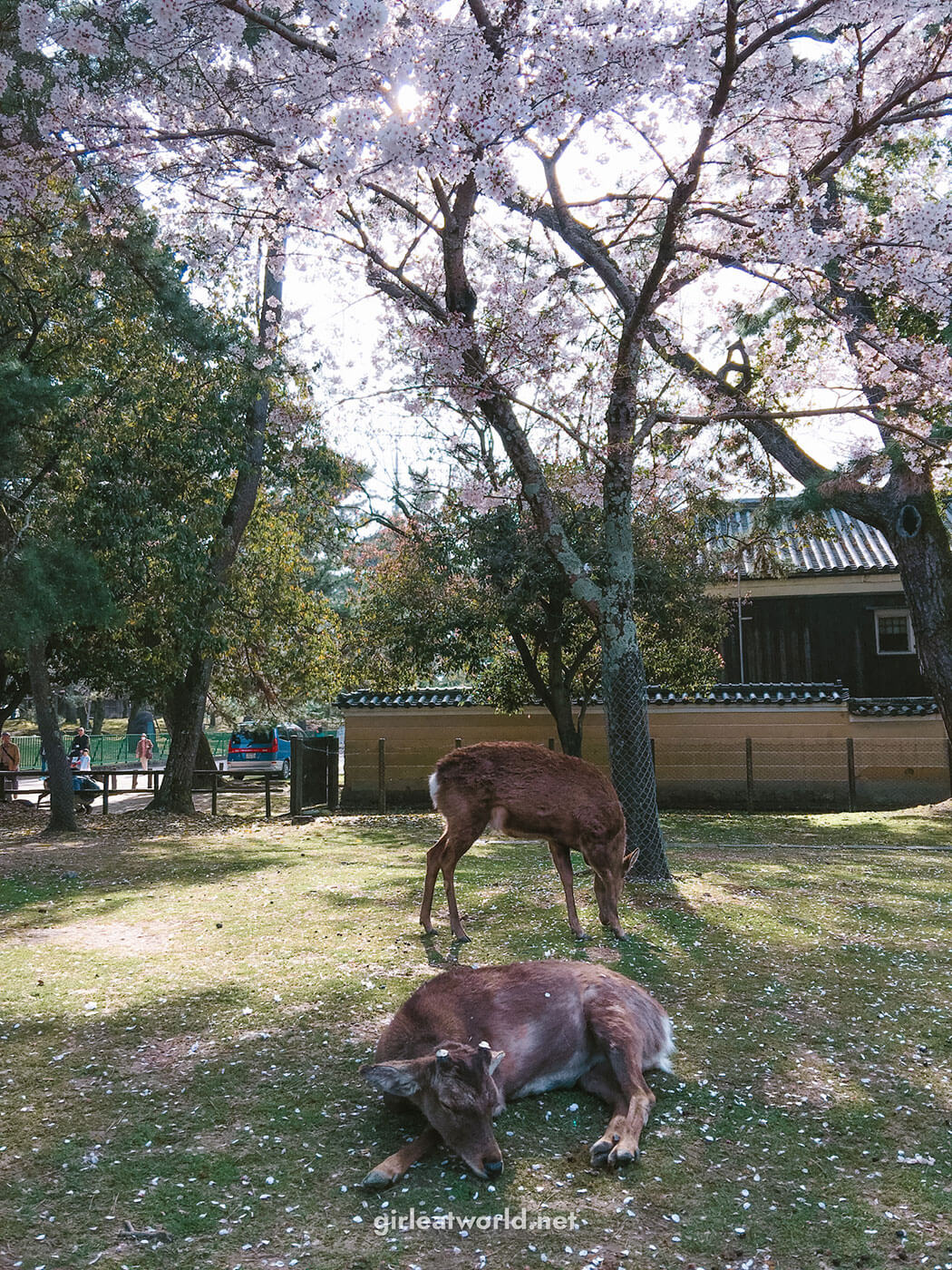
Similar to the shopping street in front of Nandaimon, you’ll be able to purchase Shika-Senbei around the park for 150 yen if you are keen to feed the deer. Shika-senbei is a sugarless rice cracker specially made for deer.
They are very used to humans and not scared of us! My only advice about the Sika deer is to heed the warning posted all over the park. While Sika deer are not violent or overly aggressive, they are still wild animals. They might occasionally attack or chase you if they think you have Senbei on you, so be very careful when interacting with them! Especially if it’s their mating season.
Once you have Shika-senbei, the deer would just come running to you – in fact, the hungry ones would chase you down if they know you have some Senbei, and eat them straight off your hands.
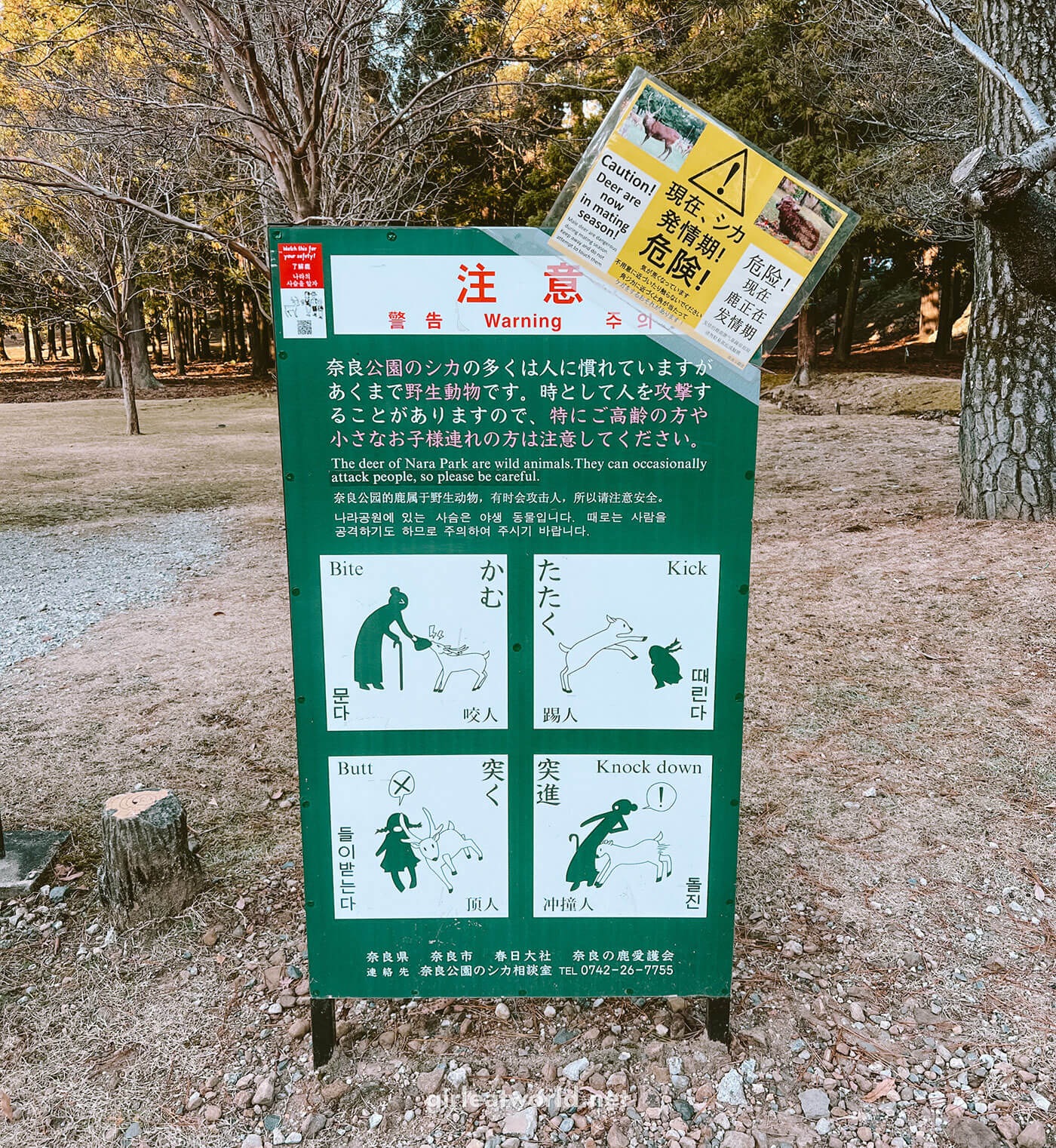
Aside from that, it should be a very peaceful walk among the trees before you get to Kasuga Taisha shrine. You’ll get to experience Shinrin-yoku , which is literally translated as “forest bathing”. It means taking a slow walk in nature and appreciating nature through our senses.

6. Kasuga Taisha Shrine
Finally, you’ll reach Kasuga Taisha shrine, one of the most worshipped shrines in Nara. The shrine is free to visit, but there is a paid section inside. I did not go for the paid section here due to time constraints, but I regret that now. I’ve read that it’s worth it! In the inner area, you’ll be able to see the lanterns that made this shrine popular.
Admission Fee: 500 yen for the inner area, free for the outer courtyard area
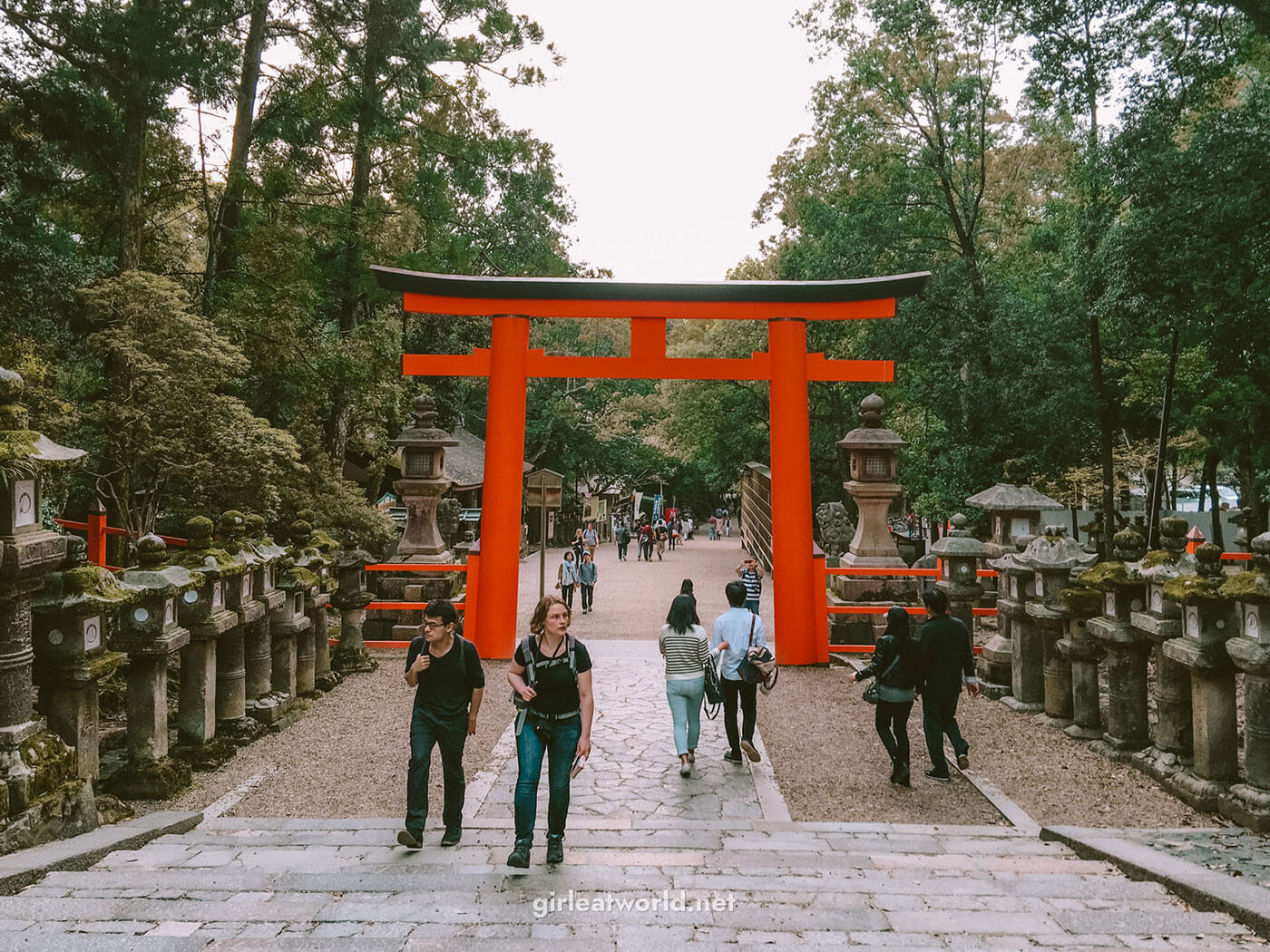
7. Explore Naramachi before you go
On your way back to the station, be sure to explore Naramachi (Nara town) before you leave. There are shops and restaurants to occupy your time with. Just make sure you’re here before 6pm, as most shops in Nara close early.
Stop by Higashimuki Shopping Street for some souvenir shopping! The whole street is covered, making it good to visit any time – rain or shine.

One of my favorite things to do in Naramachi is to watch the Yomogi mochi (sticky rice cake) pounding at Nakatanidou . It’s quite a sight to see – I was amazed by the synchronization and speed at which they were pounding the mochi. You can watch this video on Youtube to see what you can expect here!
You’ll also be able to purchase the freshly pounded mochi at the shop, which I highly recommend. You can find mochi anywhere in Japan, but to find one that is this fresh is quite rare.
8. (Optional) Mount Wakakusa Hike
Approximate time needed: ~2-2.5 hours
Mount Wakakusa hike is an easy hike you can do in Nara. It takes about 35-45 minutes to reach the peak, which is only about 350 meters high. It is actually more of a hill than a mountain.
The trail to go up to the peak can be found behind Todai-ji, so you could easily do this hike as the first thing in your itinerary, then explore Todai-ji and the rest of Nara.
If this is of interest to you, set aside about 2 hours to climb up and back down, and some time to spend at the summit for the view of Nara.
While you’re in Nara, here are some local specialties dishes you can try:
1. Kakinoha Zushi (柿の葉寿司)
Kakinoha Zushi means Persimmon Leaf Sushi. Unlike the sushi you might know, which is usually a piece of raw fish served on vinegared rice, Kakinoha Zushi is pressed inside persimmon leaf, and the fish slices are salted to preserve the ingredients.
This style of sushi dates back to the Edo period. Back then, here was no technology or freezer to preserve fish, and people needed to figure out a way to transport sushi to the inland areas that are far from the ocean. Persimmon leaf is used to preserve sushi for its antibacterial properties.
Where to try Kakinoha Zushi
- Izasa ( Google Maps )
- Hiraso ( Google Maps )
2. Chagayu (茶粥)
Chagayu is a tea rice porridge special to Nara. It is simply made by simmering rice in a broth of tea. The tea used is usually Houjicha, which is green tea made from roasted leaves which gives it a smoky flavor.
Where to try Chagayu
- Tou no Chaya ( Google Maps )
- Tsukihiboshi ( Google Maps ) – A mostly vegetarian restaurant that specializes in pickled vegetables. They serve Chagayu as one of the options!
3. Narazuke (奈良漬)
Narazuke is a traditional pickled vegetable, made from soaking vegetables in salt and sake yeast deposit, which gives the vegetable a deep red-brown color. Narazuke is usually eaten with rice.
Where to try Narazuke
- Mori Narazuke ( Google Maps ) – Opens Daily 9am – 6pm
- Imanishi Honten ( Google Maps ) – Authentic Narazuke
- Tsukihiboshi ( Google Maps ) – A mostly vegetarian restaurant that specializes in pickled vegetables, and Narazuke is one of them.
4. Other restaurants you can try in Nara
- Mizuya Chaya ( Google Maps ) – Good option to eat if you’re inside the Nara Park.
- Soba-dokoro Kitahara ( Google Maps )- While Soba is not a Nara specialty, this restaurant does it well and warrants a visit. They are located very close to Todai-ji. They are open daily from 11am-4pm and closed on Tuesdays.
- Kamaiki Udon ( Google Maps ) – Award-winning udon near the Kintetsu Nara train station.
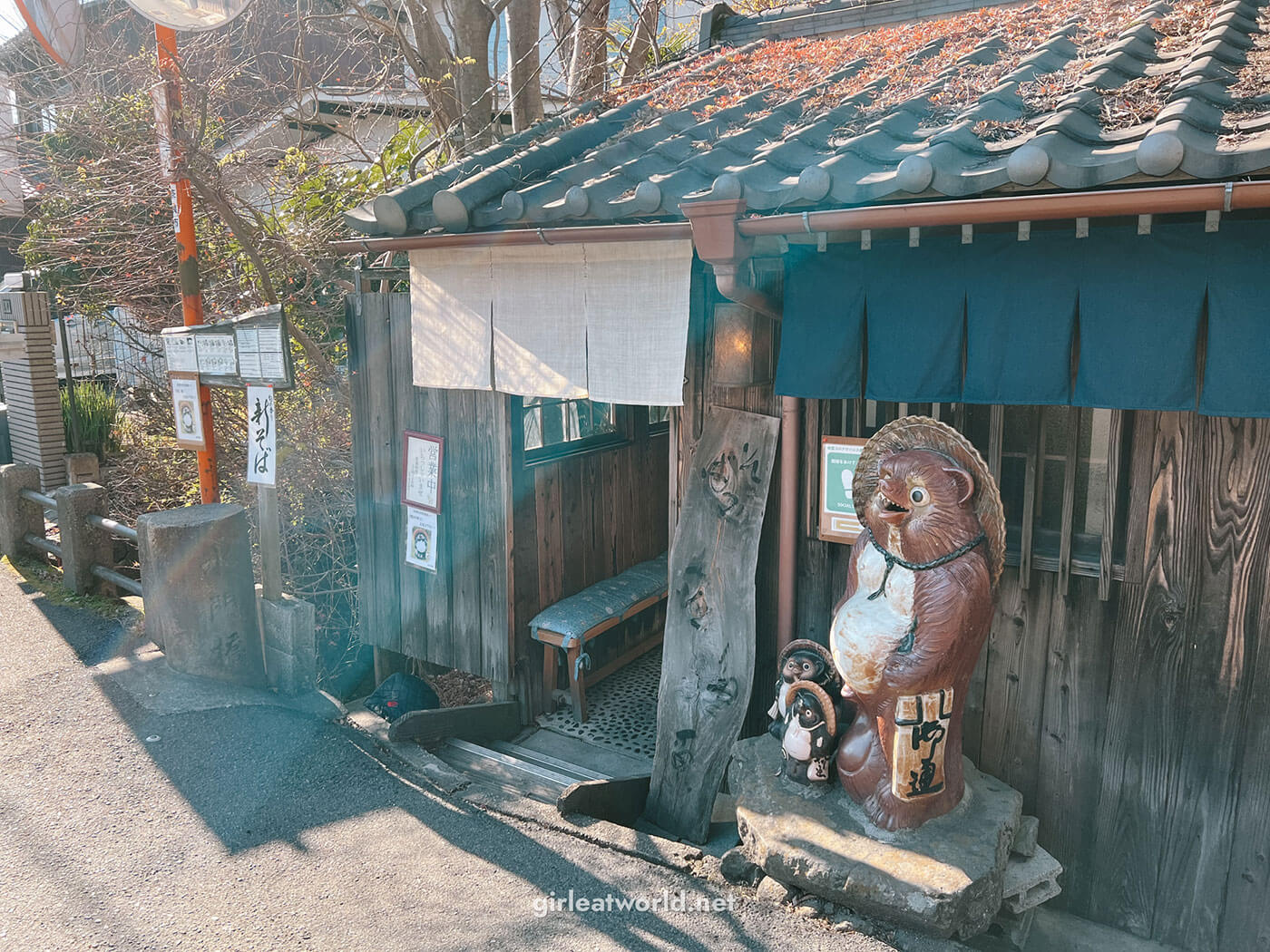
And that’s all I know about visiting Nara! I hope this guide helps you plan your visit. If you have any questions or comments, please comment below and let me know what you think!
Until next time 👋
- June 25, 2024
Thank you for such details trip to Nara! Save me some work thinking where to start.
- March 12, 2024
Last year, while discovering Nara, we passed by Tsukihiboshi. We are not vegetarians but wanted to try pickles. It was so good, with a lot of choices and pickles I never eat before. I love the rice maker ! The staff is very nice.
Leave a Reply Cancel reply
Your email address will not be published. Required fields are marked *
Save my name, email, and website in this browser for the next time I comment.
This site uses Akismet to reduce spam. Learn how your comment data is processed .

Home » Travel » Destinations » Nara Day Trip Itinerary: The Magical Deer City of Japan
Nara Day Trip Itinerary: The Magical Deer City of Japan

When people ask me about the must see places in Japan, I always recommend a Nara day trip. With eight UNESCO World Heritage sites, roaming deer, and a stunning Japanese garden, you won’t regret spending one day in Nara!
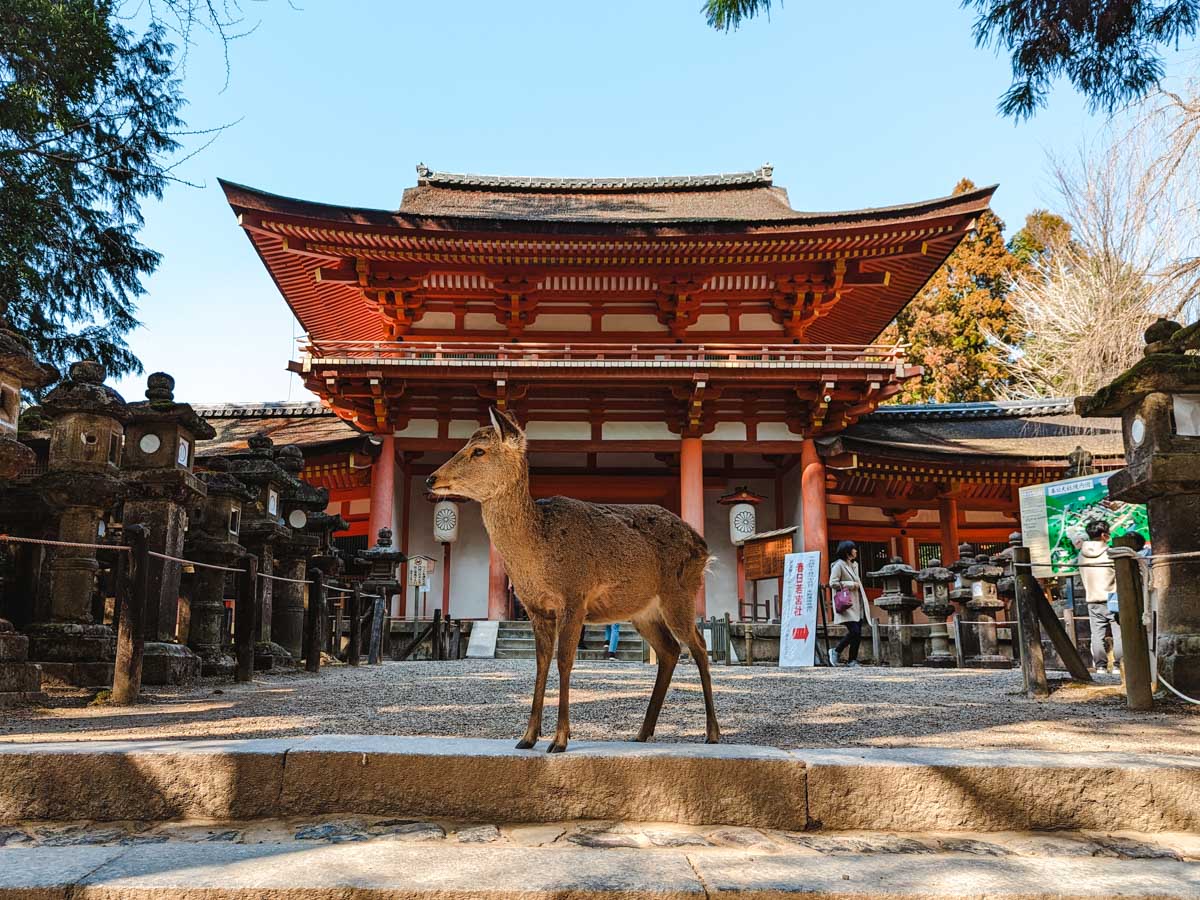
Once an ancient capital of Japan, Nara is home to some of the country’s most important cultural places, including the world’s largest wooden structure. Buddhist temples and Shinto shrines dot the landscape, and sacred deer wander the city’s green spaces.
Taking a Nara day trip feels like stepping back through time. In fact, many Japanese travelers wear traditional yukata as they explore the city.
Luckily, modern conveniences like the Shinkansen bullet train make it possible to see Nara in one day! Visitors coming from Kyoto or Osaka will have the most time to spend in the city, but it’s also possible to do a short day trip from Tokyo.
This post contains affiliate links. For more information, click here .
Table of Contents
— Taking a Nara Day Trip from Kyoto — Taking a Nara Day Trip from Osaka — Taking a Nara Day Trip from Tokyo — Getting Around Nara — 1 Day Nara Itinerary — One Day in Nara Itinerary Map
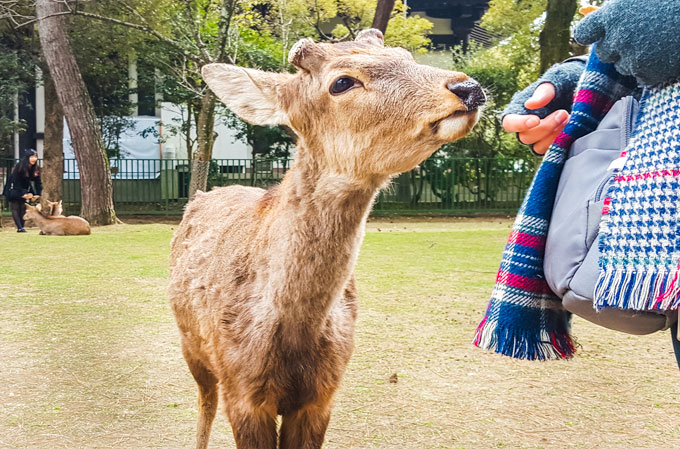
Taking a Nara Day Trip from Kyoto
Nara is the most popular day trip from Kyoto , and there are two train operators for lines running between Kyoto and Nara: JR West and Kintetsu Railways.
JR Nara Line
Japan Rail Pass holders can take the JR Nara line from Kyoto Station to JR Nara station. Local lines run about three times an hour, and the journey takes about 70 minutes.
There are also the Miyakoji Kaisoku express trains that travel from Kyoto to Nara in 45 minutes. However, they don’t start running until after 9:30am. You could take the first rapid line service from Kyoto to Nara station and arrive by 10:20am.
However, for this 1 day Nara itinerary, you’ll want to arrive in Nara no later than 9:30am. Otherwise, you will need to cut your trip short.
Kintetsu Railways
There are several Kintetsu train options from Kyoto Station to Kintetsu-Nara Station.
The fastest option is the Kintetsu-Limited Express, which runs twice an hour and takes 35 minutes. However, you must have a seat reservation for Limited Express trains, so you need to buy a ticket at the machine or counter beforehand (no using an IC card).
Alternatively, the Kintetsu-Kyoto local line takes 45 minutes, with some trains running directly to Nara.
You’ll need to take care when traveling on the Kintetsu lines, as some trains require a transfer at Yamato-Saidaiji Station before continuing on to the Nara line.
Here are some very detailed instructions on how to use the Kintetsu machines to purchase tickets.
Regardless of which train operator you choose, you can get to the heart of Nara Park from Kyoto in just over an hour. You’ll have plenty of time for exploring Nara in one day.
RELATED: 12 Essential Things to Avoid in Japan While Traveling
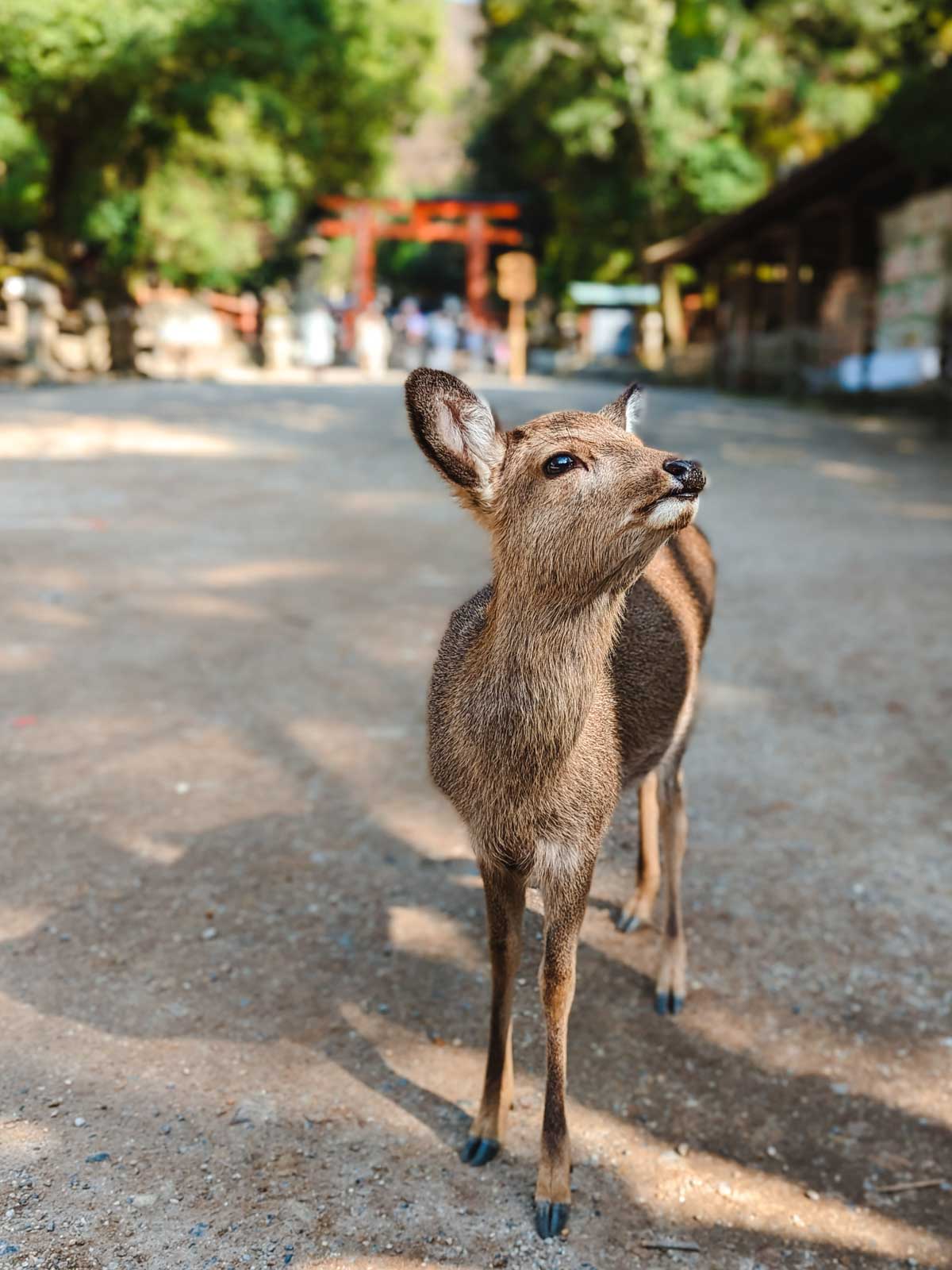
Taking a Nara Day Trip from Osaka
Osaka may seem far away, but you can get from Osaka to Nara in under an hour by train!
The fastest and easiest way is to take the JR Yamatoji Rapid Service from Osaka Station. It departs roughly three times an hour and takes about 55 minutes to reach JR Nara station.
This quick travel time makes spending one day in Nara a no-brainer if you’re based in Osaka.
RELATED: 23 Essential Travel Phrases Every Globetrotter Should Know
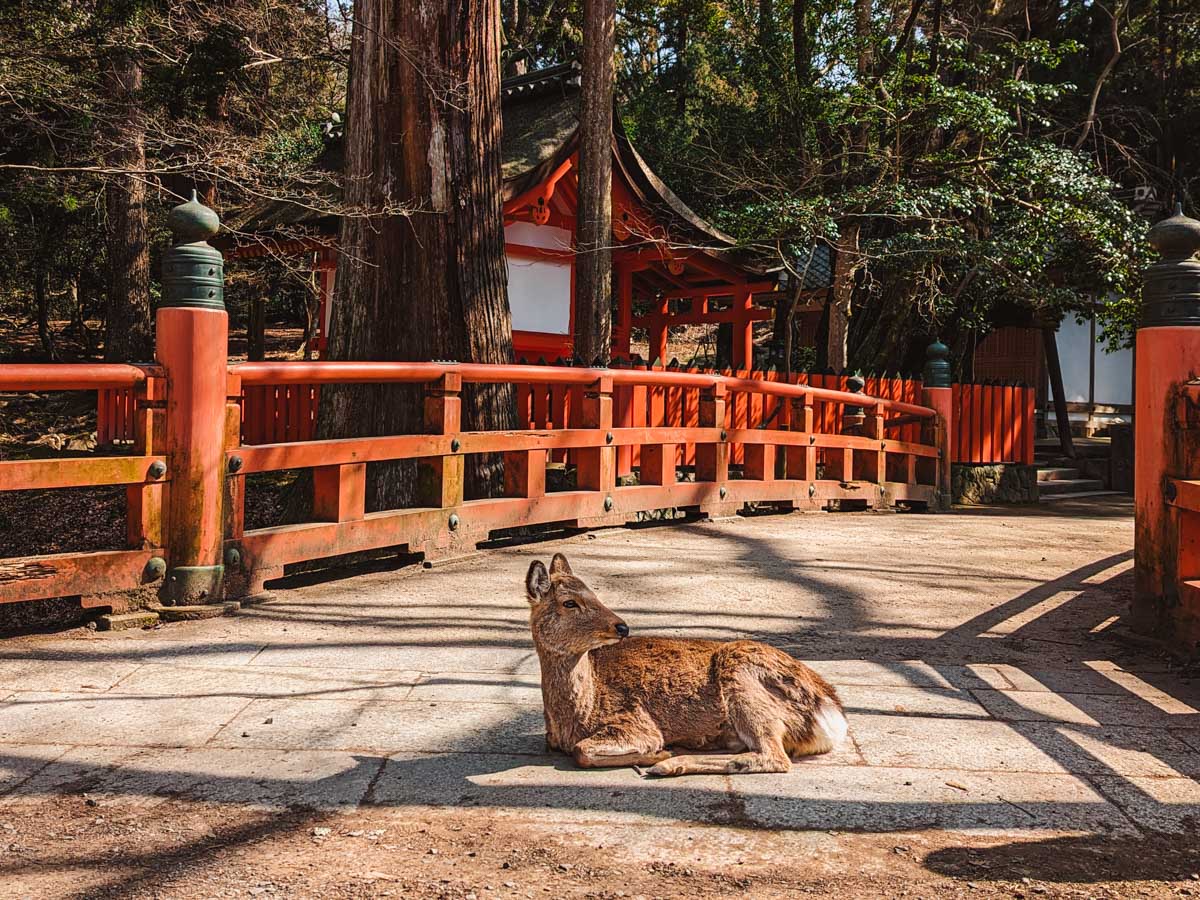
Taking a Nara Day Trip from Tokyo
If you’re determined to do a Nara day trip but aren’t staying in the Kansai area, it’s possible to get here all the way from Tokyo.
Take the Tokkaido-Sanyo Line shinkansen from either Tokyo Station or Shinagawa Station, all the way to Kyoto Station.
The Kodama and Hikari trains ( covered by JR pass ) take about 2 hours and 40 minutes to go from Tokyo to Kyoto. From Kyoto Station, take either the JR Nara line or one of the Kintetsu lines as outlined in the Kyoto transit section above.
RELATED: Tokyo Itinerary: 6 Days of Sightseeing and Hidden Gems
After all the transit and walking, it would take nearly 4 hours to reach Nara Park from Tokyo. And at more than ¥13,000 per Shinkansen ticket, this would be one expensive day trip! Thus, I wouldn’t recommend it unless you have a JR Pass .
Don’t Forget Your JR Pass!
Having a Japan Rail Pass can save you a ton of time and money when traveling around Japan. I’ve used a JR pass for two out of three Japan trips, and here’s why:
– Easy to use: Just show your pass to the gate attendant!
– Free bullet trains: Quickly travel all over Japan to maximize vacation time.
– Affordable day trips: Visit popular places like Nara, Takayama, Nikko, and more without spending a fortune!
Order your Japan Rail Pass today!
Getting Around Nara
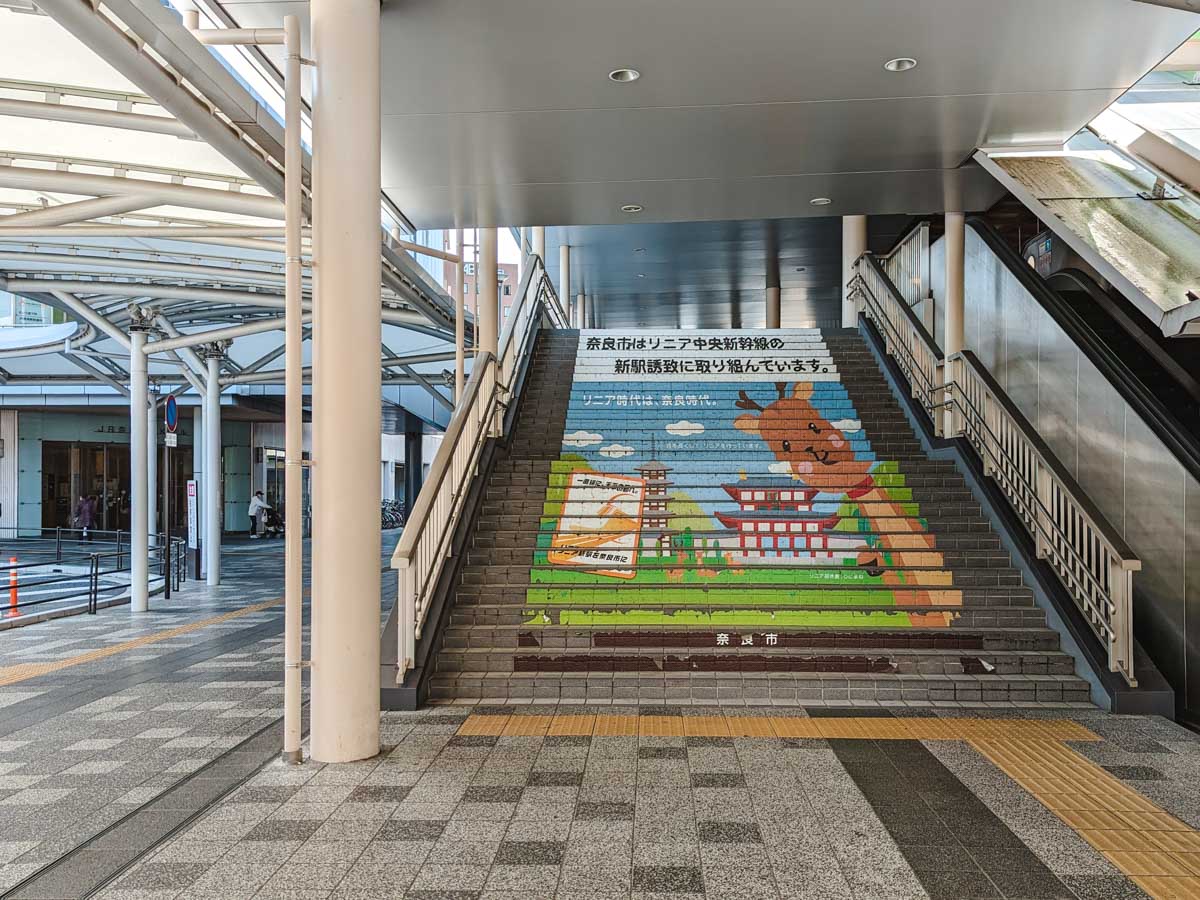
This Nara day trip itinerary was designed to be completely walkable. However, should you need transportation, Nara is well-connected by public buses.
If you’re following this guide and arrive at JR Nara station, you might make use of the red Gurutto bus.
It runs from 9:00am-5:00pm and makes a circular route, with stops including Nara Park Prefectural Office and JR Nara Station. The fare is only ¥100, making it a cost-effective option for those who can’t/don’t want to walk to and from the JR station.
1 Day Nara Itinerary
Kofukuji temple (kōfuku-ji).
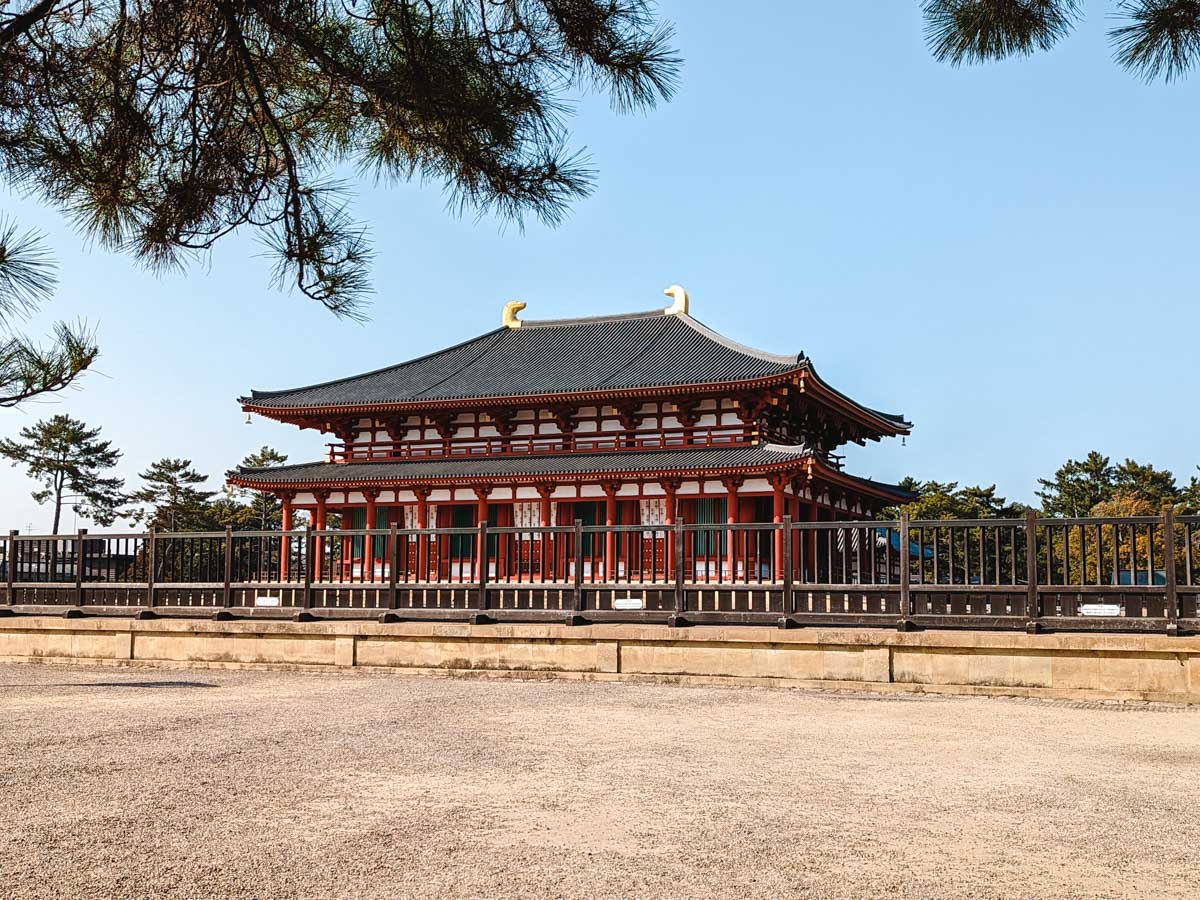
Located a few minutes’ walk from Kintetsu-Nara station, Kōfuku-ji is one of eight structures that form the UNESCO Historic Monuments of Ancient Nara. Kōfuku-ji’s main temple was originally located in Kyoto, but it was taken apart and rebuilt in Nara when the city became Japan’s capital.
The beautiful Buddhist temple grounds house seven buildings, including the iconic five-storied pagoda that’s visible in the Nara skyline.
Visitors can enter the grounds for free, but it costs ¥800 for a ticket to the National Treasure Hall and Eastern Golden Hall.
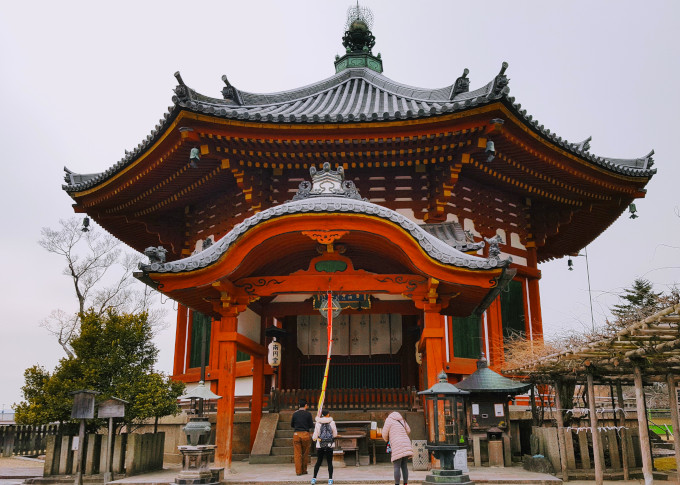
Isuien Garden
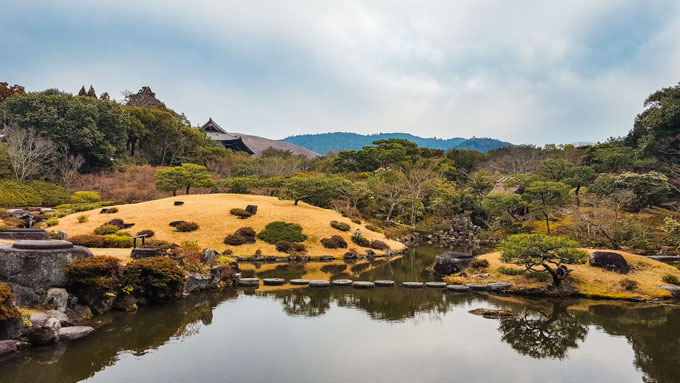
Isuien is one of my favorite gardens in Japan. With reflecting ponds, a tea house, and gorgeous views of Mount Wakakusa, Isuien is a relaxing escape in the heart of the city.
The garden is split into front and back sections, which were each designed in different historical periods (Edo and Meiji). Stepping stones and a water wheel add a charming touch, and always make me think of Studio Ghibli films.
The ¥900 admission is money well spent, and includes access to the small pottery museum adjacent to the garden.
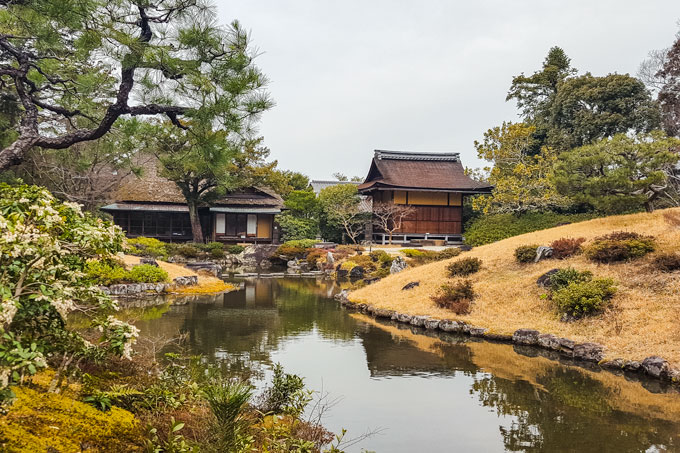
RELATED: Essential Guide to Hiking in Kamikochi Japan
Todaiji Temple (Tōdai-ji)
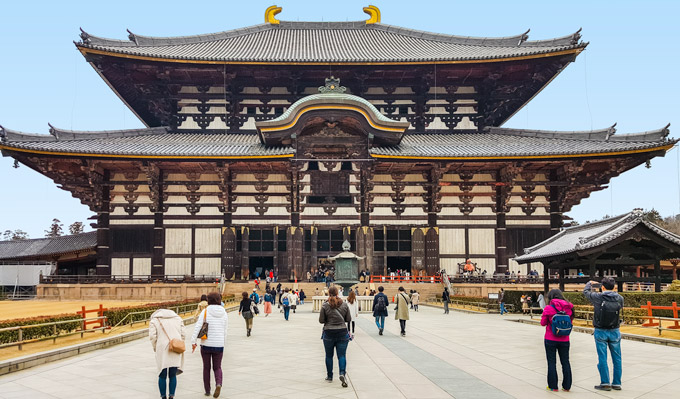
Tōdai-ji is the architectural highlight of this one day Nara itinerary. Housing the world’s largest Daibutsu (bronze Buddha statue), the Great Buddha Hall is also the world’s largest wooden structure and a must-visit place in Japan .
Approaching Tōdai-ji is a surreal experience, as the sacred Nara deer freely roam the temple grounds. It’s also hard to believe that a 1,300-year-old building could be so large and well-preserved!
Pay the ¥600 fee to enter the Great Buddha Hall ( daibutsuden ), where you’ll see the giant Buddha statue flanked by a golden Nyoirin-kannon statue. Take care not to disturb the people at prayer when you pass through the hall.
As you walk through the daibutsuden, , don’t miss the wooden scale model that shows the original Tōdai-ji temple grounds, complete with two towering pagodas.
Important things to do before your Japan trip
From packing the right clothes to brushing up on etiquette, there’s a lot to do before traveling to Japan. Use my detailed Japan travel checklist to ensure you don’t forget anything before your trip!
Save me for later!
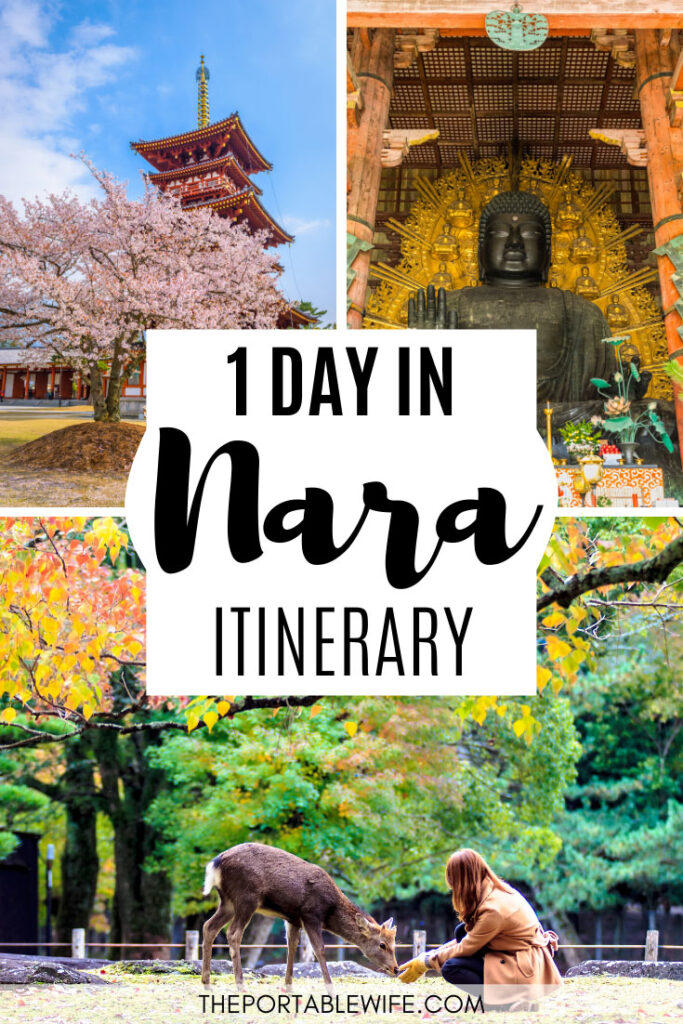
In the spirit of Japanese tradition, use your lunch time to try some local Japanese dishes you haven’t yet eaten on your trip. The Kansai region is best known for okonomiyaki, takoyaki, and tofu.
My personal recommendation is Mizuya Chaya, a beautiful and historic cafe within Nara Park that I discovered during my second visit to the town. Their udon and sweet matcha was outstanding, and you can choose to eat inside or outside among the deer.
If you’re feeling budget-conscious or short on time, there’s nothing wrong with getting a cheap and tasty meal from the local Lawson, Family Mart, or 7-Eleven.
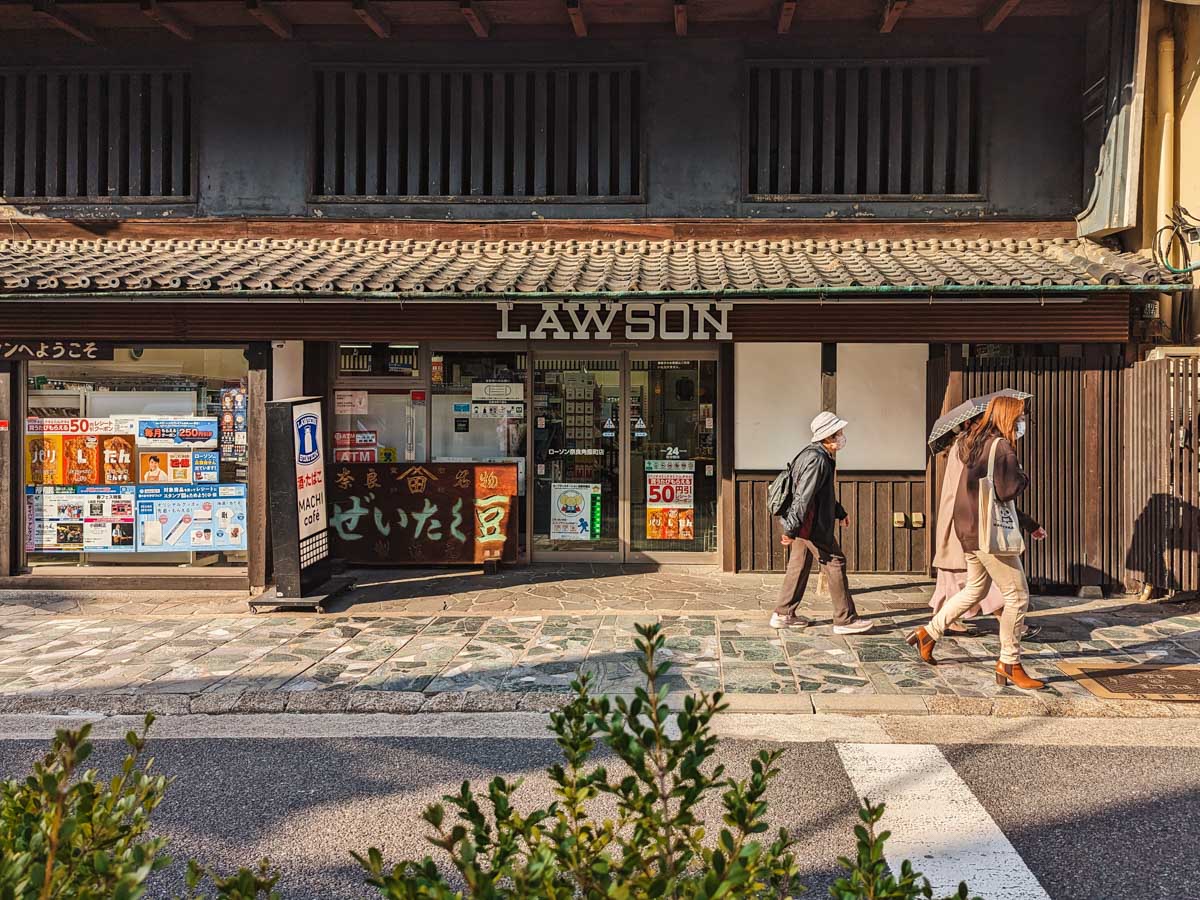
Nara Park and Mt. Wakakusa
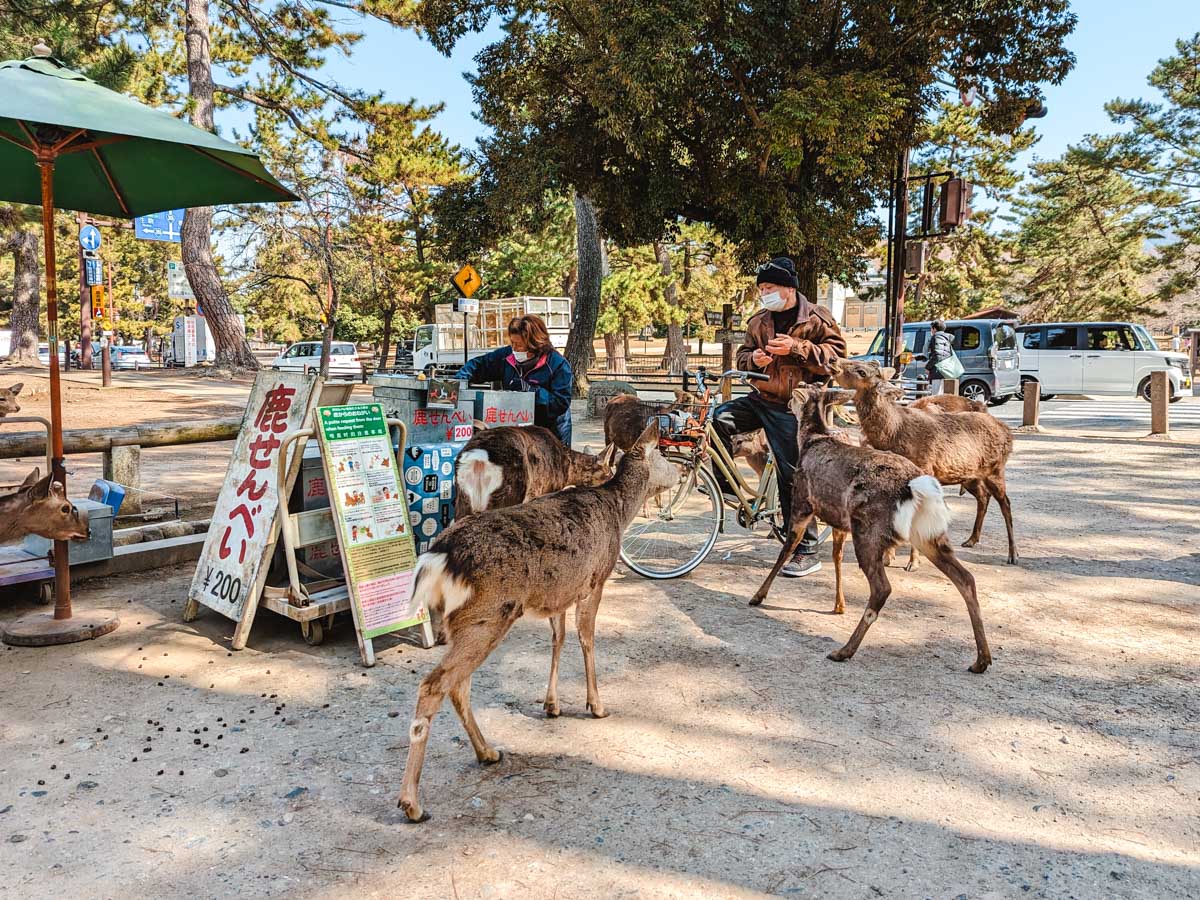
If you were hoping for more deer encounters after Tōdai-ji, you’re in for a treat. Nara Park is full of the city’s beloved animal residents, and they aren’t afraid to say hello!
Licensed street vendors sell packages of biscuits that are specially formulated and controlled for the health of the deer. If you’re shy about animal encounters, do not buy the biscuits. As soon as a deer sees you holding one in your hand, it will follow you around until it gets a snack.
I had a fun time watching tourists nervously offer biscuits to eager deer, dance away once a deer approached, and then get chased around the park until they finally dropped some treats on the ground.
It should go without saying, but under no circumstances should you feed the deer anything but the special biscuits. It’s actually a crime to do so, or to mistreat the deer in any other way.
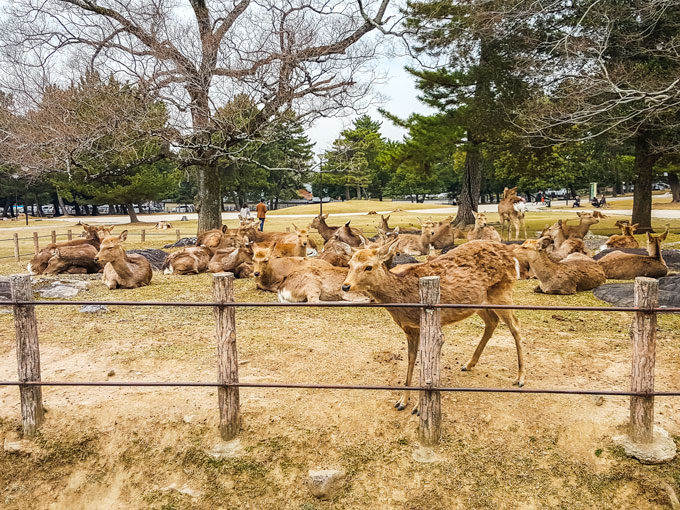
Once you’ve finished off your pack of treats, head east on the path leading to Mount Wakakusa.
It’s a fairly easy 40 minute walk to the mountain’s peak, where you can take in panoramic views of Nara. You’ll also pass more Nara deer as you make your way upward, which adds to the peaceful atmosphere. And if you’re visiting Japan in October , you might catch some early fall foliage!
Note that the direct walking trails up Mt. Wakakusa are closed during the winter season. I ended up hiking the long way around (a more strenuous hour of steeper slopes) during my second Nara day trip, and while it was a lovely journey, you probably won’t have the time or energy to pull it off during this packed itinerary.
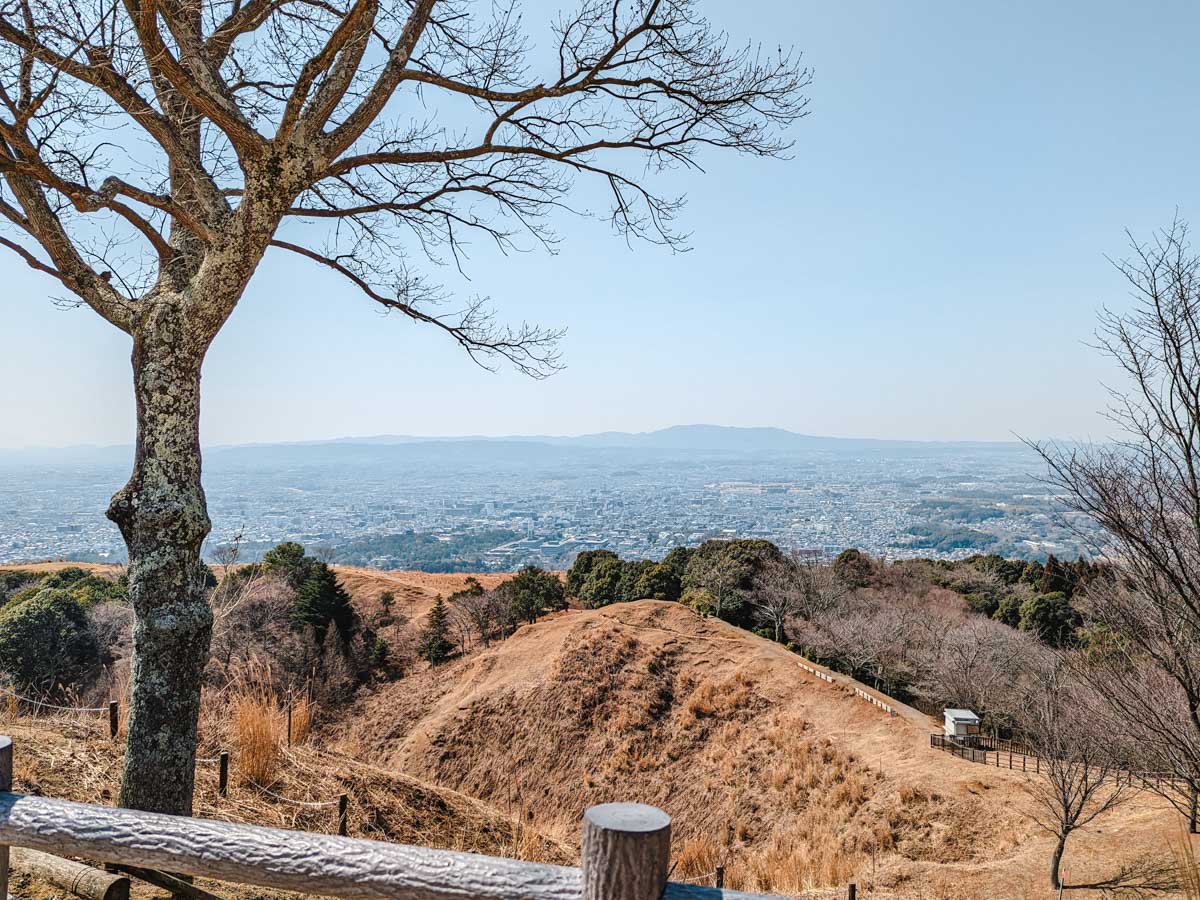
RELATED: 5 Day Japan Itinerary Ideas to Suit Any Travel Style
Kasuga Grand Shrine (Kasuga-Taisha)
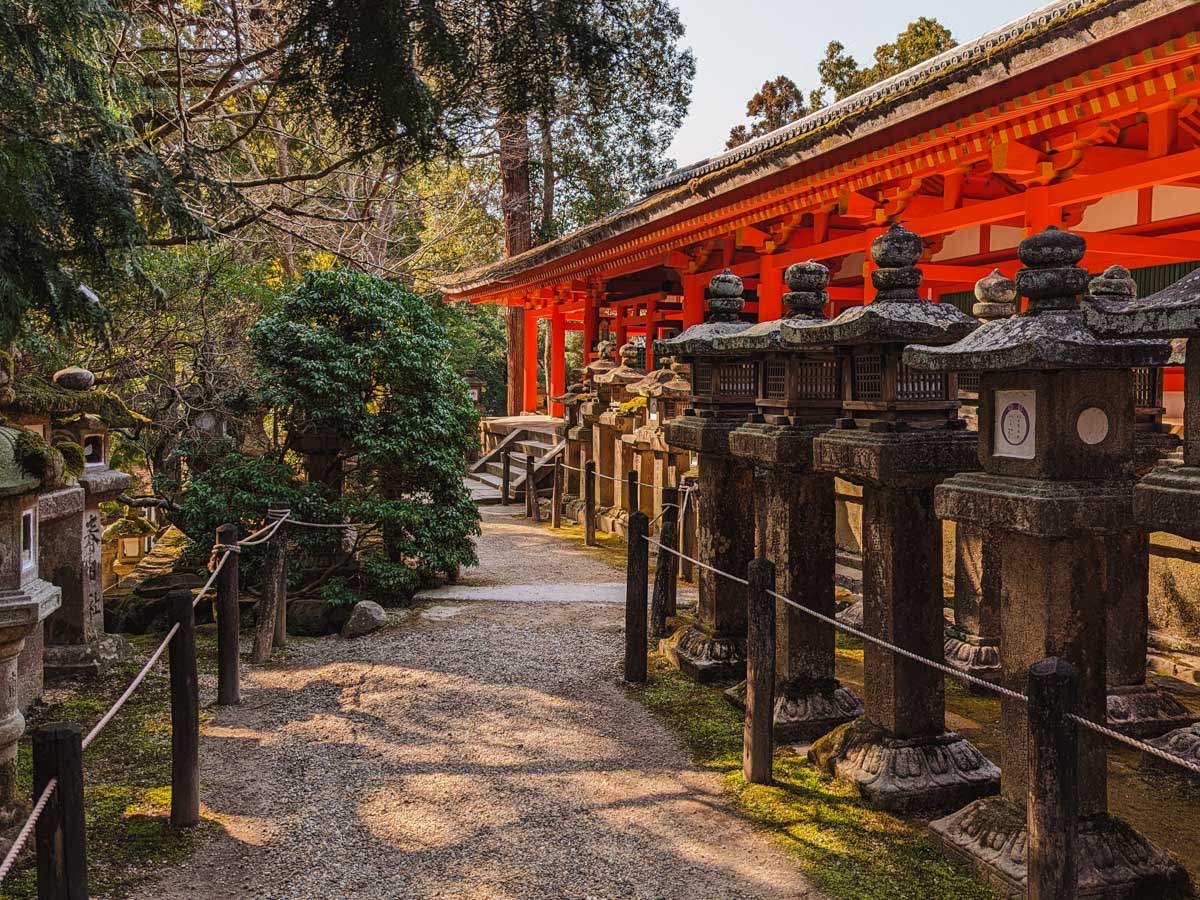
Rounding out the day’s shrine visits is Kasuga-Taisha, another one of Nara’s UNESCO Historic Monuments and my personal favorite spot on this Nara itinerary. Kasuga Grand Shrine is most famous for its thousands of stone and bronze lanterns that line the walkways and fill the corridors.
Admission to the temple grounds and main offering hall is free, while it’s ¥600 to walk the inner area and main sanctuary.
The surrounding primeval forest makes visiting Kasuga-Taisha a truly magical experience that cannot be missed on a Nara day trip. And if you’re wondering what to do at Nara in the spring, the cherry blossoms lining the main walkway are a must see.
Given the timing of your visit, you should get to Kasuga-Taisha a bit before golden hour. It’s ethereal to see the deer amidst the light filtering down through the tall trees.
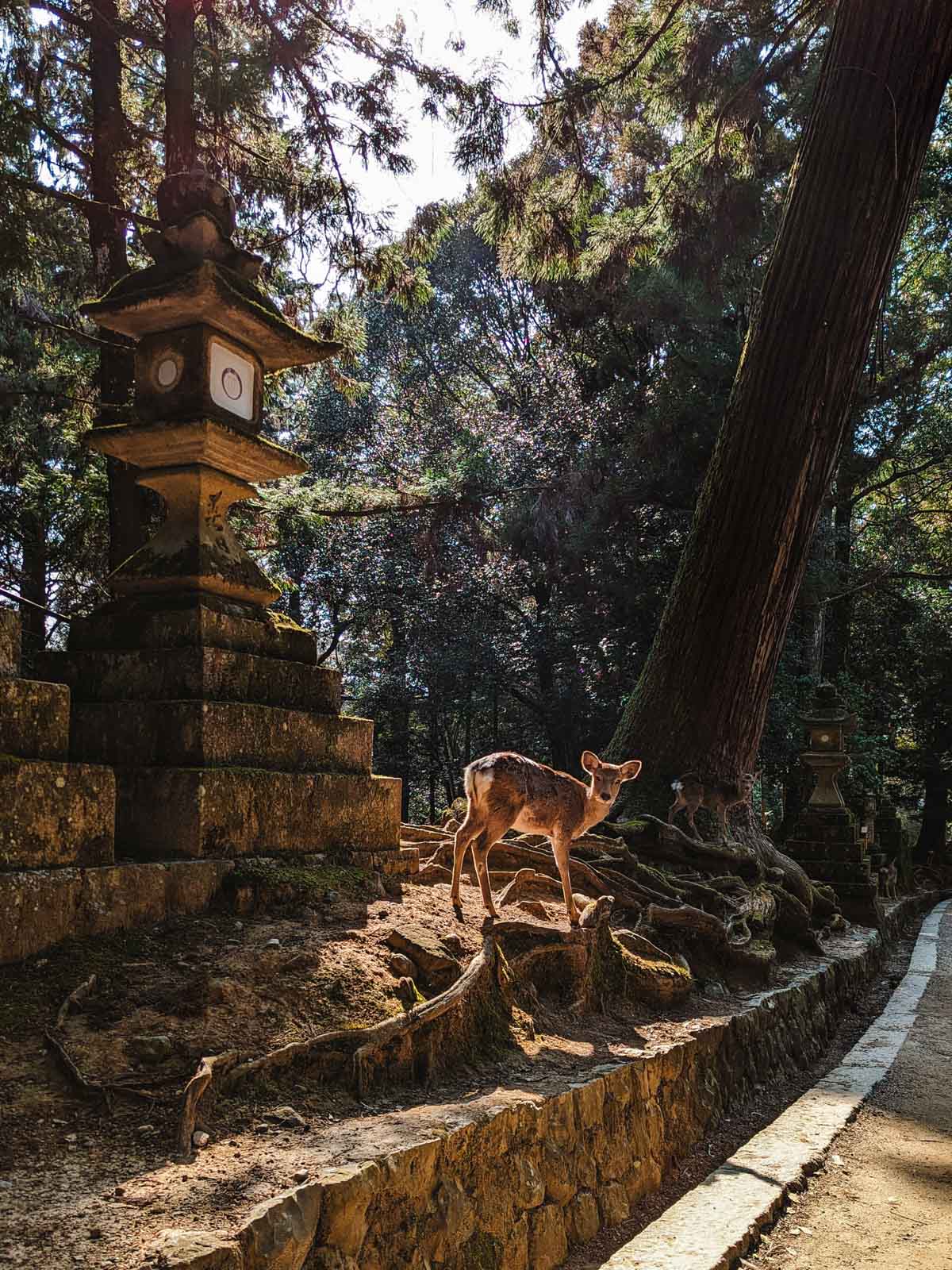
If you’re fortunate to be here in February or August, you can witness the Man-Toro lantern lighting festivals.
There are a number of walking trails that meander through the surrounding forest area and eventually join up with the wide path that leads due west towards Nara’s town center. Take your time here–it’s the perfect place to escape the crowds after a long day.
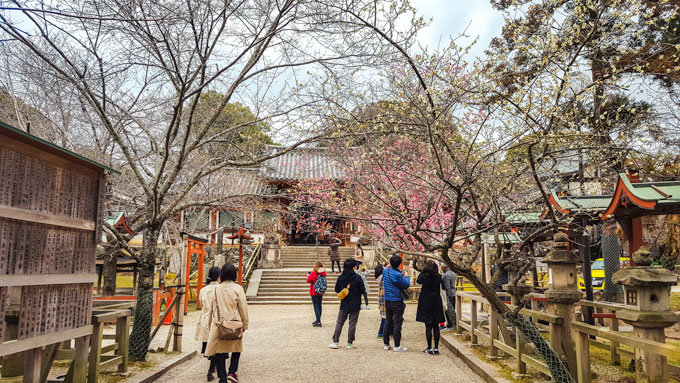
Higashimuki Shopping Arcade
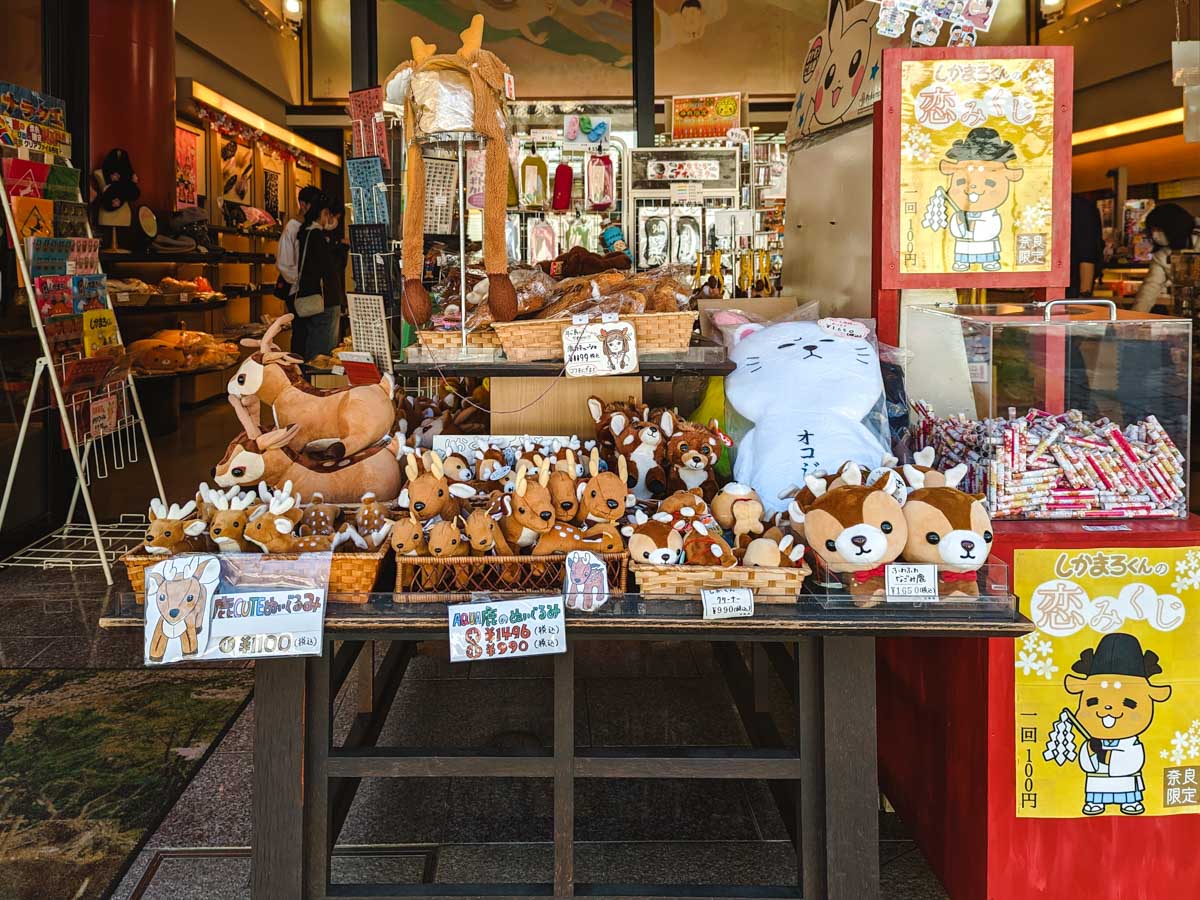
I’m not much of a souvenir shopper, but I can’t resist a good Japanese shopping arcade. Whether you’re in the market for coin purses, origami paper, or mochi, Higashimuki has plenty of shops and restaurants to please everyone.
Best of all, Higashimuki is only a short walk away from the Kintetsu-Nara station. You won’t have far to go if you do decide to splurge on a bag of Japanese goodies.
That brings us to the end of the itinerary! As you head back towards the train stations, I suggest stopping at Melon de Melon , a tiny little bakery that sells insanely delicious melon pan in all sorts of flavors.
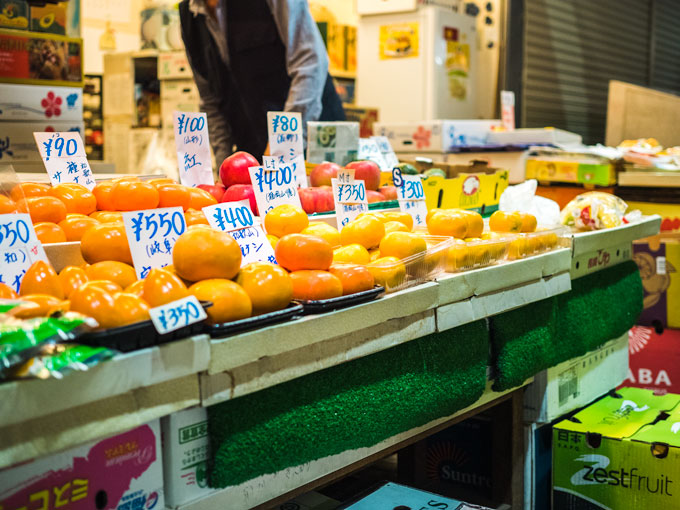
Guided Tours of Nara
With so much to see and do in a day, I recommend booking a local guide to show you Nara’s highlights and hidden gems! Here are a few options from my favorite tour providers:
- Customized Walking Tour of Ancient Nara
- Half Day Small Group Walking Tour of Nara
Have More Than One Day in Nara?
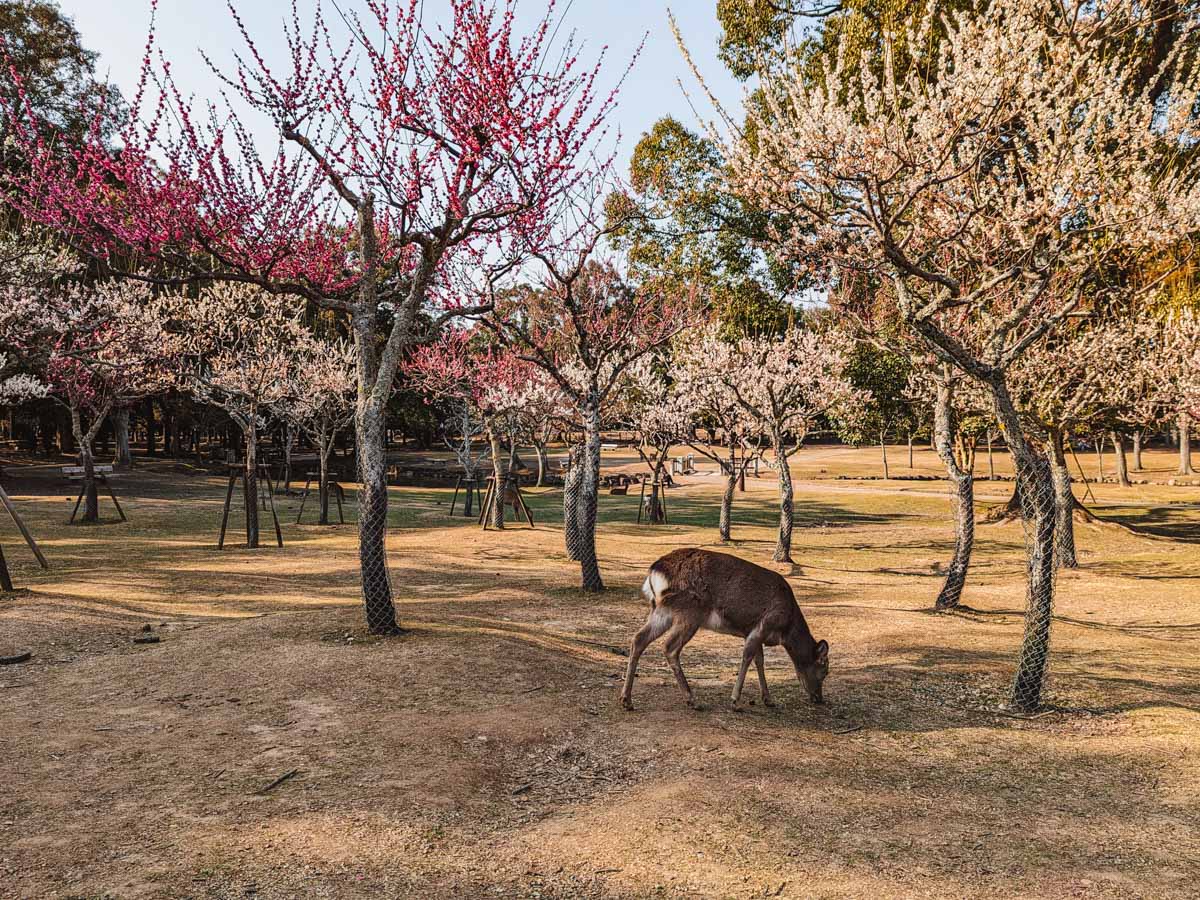
If you aren’t just doing a Nara day trip, here are a few more places you should add to your itinerary.
- Nara National Museum: Houses a number of permanent and rotating collections of Japanese National Treasures, artworks, and cultural artifacts, with English displays and audio guides available.
- Yakushi-ji Temple: Part of Nara’s UNESCO Heritage Monuments, this Buddhist temple is one of Japan’s oldest and has two beautiful three-story pagodas.
- Horyu-ji Temple: Located on the western side of Nara, Horyu-ji’s pagoda is said to be the world’s oldest wooden building.
If you’re spending the night in Nara, I suggest staying near Nara Station . It’s centrally located, and you’ll easily be able to catch an early train from the city to your next destination.
My Favorite Japan Travel Planning Books
These books win my travel blogger Seal of Approval for vacation planning:
- Lonely Planet Japan
- Cool Japan Guide: Fun in the Land of Manga, Lucky Cats and Ramen
- Super Cheap Japan: Budget Travel in Tokyo, Kyoto, Osaka, Nara, Hiroshima and Surrounding Areas
Nara Day Trip Map
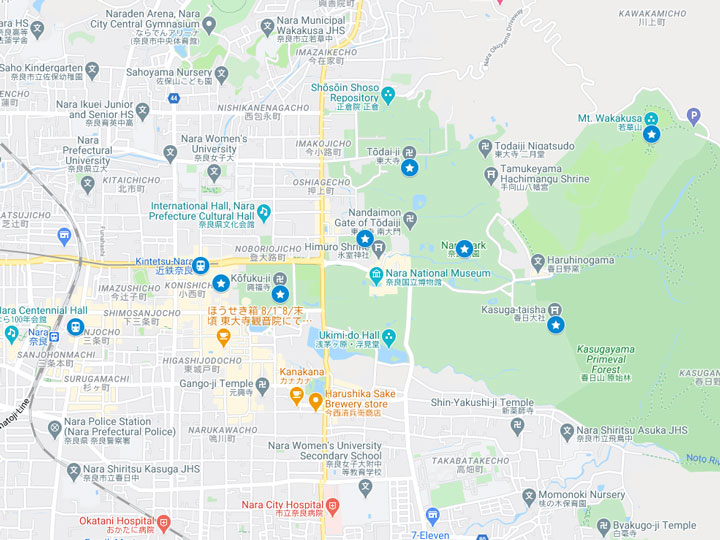
Click here to view the full interactive map!
Have you spent 1 day in Nara? Is there anything you’d add to this list? Let me know in the comments section!
6 thoughts on “Nara Day Trip Itinerary: The Magical Deer City of Japan”
Wow! This sounds like an incredible place! I must admit I’d never heard of it until now but I’d LOVE to meet those adorable deer. Definitely adding this to my must visit list!
You won’t regret it! I only wish I had more than one day to spend in Nara last time I was in Japan.
Hi, cannot find the booking information. We are two adults. We would like to book it from Kyoto between November 4 through the 6th. It sounds very exiting Regards Cecilia
Hello Ceciia! Unfortunately I only provide written itineraries. I’m not a tour guide or travel agent. However, Get Your Guide has several Nara guided tours available on the dates you’re traveling!
What hours is the park open? I would like to stay overnight, but is it worth it? TIA
Hi Kay, the term “Nara Park” is a bit confusing–it’s simply the name of the large green space with temples that makes up most of Nara. There are no gates, opening hours, etc. for walking around the park itself, so if you stayed overnight (which I would recommend if you have time in your itinerary) you could walk around in the early morning when there are no crowds. The main temples like Todai-ji and Kasuga Taisha open quite early in the morning as well, so you can have them mostly to yourself!
Leave a Comment Cancel reply
This site uses Akismet to reduce spam. Learn how your comment data is processed .

IMAGES
VIDEO
COMMENTS
Nara is a popular day trip from Kyoto or Osaka. This one day Nara itinerary shows you how to get there and how to see the main highlights on a day trip. Nara is famous for its hundreds of sika deer roaming around the large park within the city, Japanese zen gardens and ancient buildings that date back to when Nara was Japan's first capital city.
Get your 1 day Nara itinerary here. Find out how to get to get to Nara, how to get around, where to eat, and what to see.
Discover everything you need to know about doing a Nara day trip, whether you're coming from Osaka or Kyoto, including how to get there and what to see.
Nara is located less than one hour from Kyoto and Osaka. Due to its past as the first permanent capital, it remains full of historic treasures, including some of Japan's oldest and largest temples. And of course, you can see a lot of deer! If you want to make two two-day trip, here is our 2 Days Suggested Itinerary in Nara.
This hassle-free day trip includes a guide and hassle-free air-conditioned transport between sites. Full-day sightseeing tour of the ancient sites of Kyoto and Nara. Check off top sights, including Nijo Castle and Kinkaku-ji. Travel to the city of Nara to see the Great Buddha of Todai-ji temple complex.
A Nara day trip from Kyoto or Osaka is easy and doable due to the efficient railway systems. Follow my Nara itinerary and see all the best attractions in 1 day.
Are you planning a day trip to Nara from Kyoto? In this guide, we unveil the ultimate guide to help you plan your perfect day trip to Nara, the Japan's first capital. The city of Nara offers a serene contrast to vibrant Kyoto, providing a deeper dive into the country's historical roots.
Nara Park awaits, home to over 1,200 deer and Tōdai-ji Temple, a breathtaking World Heritage site. Conclude your tour with a return bus journey to Kyoto or Osaka, cherishing the memories of Japan's cultural and natural wonders. Revel in the tranquility on your visit to the famed Zen temple of Kinkakuji. Take a trip down to the vibrant orange ...
We're sharing the perfect Nara day trip itinerary, complete with where to see the famed deer and hidden gems most tourists miss.
Plan the perfect day trip to Nara, Japan from Osaka or Kyoto to discover historic temples and bowing deer in Japan's first ancient capital.
A detailed guide on how to plan your perfect day trip from Kyoto to Nara. Contains a map and special suggestions to plan your day in Nara and its temple.
Nara has some of the most impressive sights in all of Japan. Here I outline a typical half-day Nara itinerary, as well as 1 Day and 2 Day Nara itineraries.
The Kyoto - Nara day trip was a great way to see some of the highlights in both cities. Yuki-San, our guide, was very knowledgeable and spoke excellent English.
Roughly one hour south of Kyoto is the magical wonderland of Nara - a quaint little town where free-roaming deer stroll around beautiful parks and gardens. Nara is arguably one of Kyoto's best day trips and an excellent add-on to any Japan itinerary. Here, you can duck into ancient temples, wander around Nara Deer Park and even feed free-roaming deer. Nara was established in 710 and is ...
A day trip to Nara is a must do if you're visiting Kyoto. Any pictures you have seen pictures of deer roaming freely and interacting with the local folk probably live on Nara, the first ancient capital of Japan.
Kyoto Station Kintetsu Limited Express to Kintetsu-Nara - 35mins, cost 1,160 yen or covered by the Kintetsu Line Rail Pass. JR Kyoto Station to JR Nara Station - 45mins, cost 720 yen or covered by the Japan Rail Pass. TIP: On any day trip, I personally prefer to not bother with rail passes that mean sacrificing time for money, and just pay ...
The ultimate Nara day trip itinerary. Within easy reach of Kyoto and Osaka, here's how to spend one day in Nara.
Nara is a treasure trove of Japanese history and culture that you can access easily from Kyoto, making it a highly popular tourist location. Here is our version of a 1 Day Itinerary in Nara: Day Trip from Kyoto.
Just a short train ride from Kyoto lies quaint Naramachi, or Nara, home to Japan's largest bronze Buddha and famous for its wild deer. In this Nara tour, a day trip from Kyoto, we'll join a local guide visiting key temples such as Todai-ji, Kasuga Shrine and Kofuku-ji and learn about the Nara period in Japanese history. Of course, we'll also drop in on the deer, famous for their comfort around ...
Headed to Japan and want to take part of an incredible Kyoto to Nara day trip? Well this guide may be for you then! It will go over what a Nara day trip entails and how to put together the best Nara itinerary when visiting the country.
Most tourists often skip this first permanent capital of Japan, while those who drop by here oftentimes only have a day to spend. Thankfully, the city is condensed so it is possible squeeze in the top attractions in Nara in one day. Here's a sample Nara Itinerary for one day tour from Osaka and Nara day trip from Kyoto with breakdown of expenses.
Nara was the first permanent capital of ancient Japan. It held the permanent capital city title for most of the 8th century before Kyoto took that title in the year 794. Nowadays, Nara is popular as a day trip from Osaka, to visit the big Buddha and feed Sika deers.
From feeding wild deer to visiting ancient temples, this Nara day trip itinerary covers the highlights of Nara in one day.